
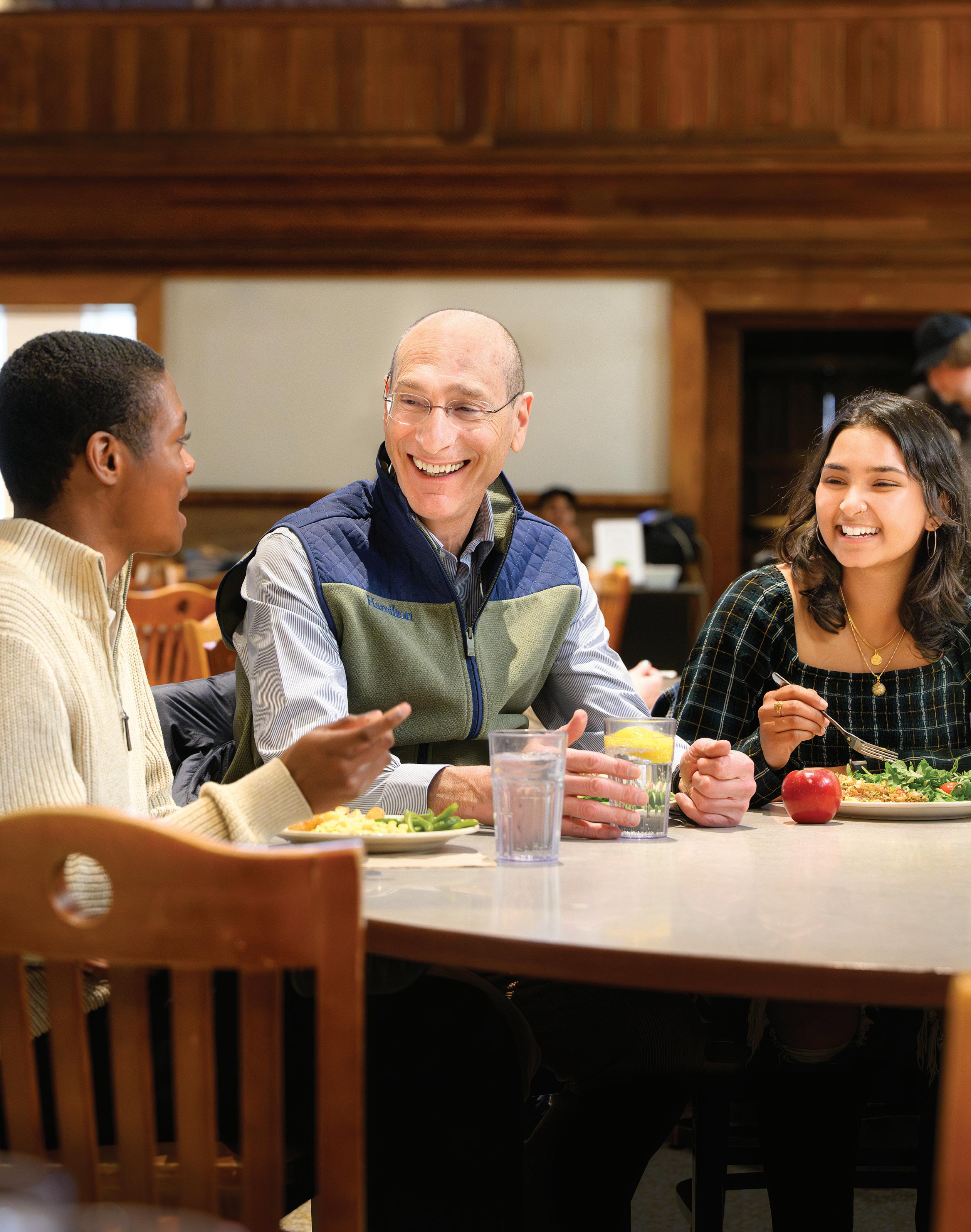 DAVID WIPPMAN
DAVID WIPPMAN
On Hamilton, Higher Ed, and Eight Years as President
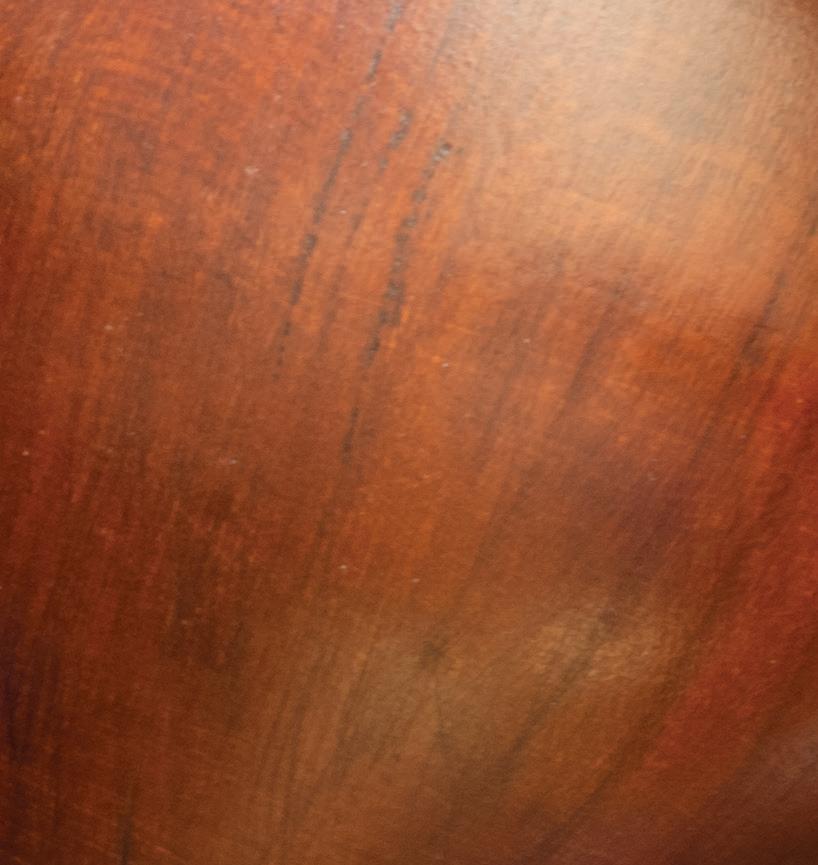
THINGS YOU’LL LEARN
He Has the Ring to Prove It
Adam Lewkowicz ’02 worked as an overnight hotel clerk to keep his baseball dream alive. The sacrifice paid off. Today he’s director of amateur scouting operations for the Texas Rangers, reigning World Series champions. PAGE 4
The Truth is Out There
A lurking ninth planet or an alternate theory of gravity? That’s the question Associate Professor of Physics Katherine Brown ponders as she and a colleague work to understand our solar system and beyond. PAGE 18
Bliss Had Many Firsts
Read about Philemon Bliss, Class of 1832, President Lincoln’s pick for the inaugural chief justice of the Supreme Court of the Dakota Territory. Bliss also mentored Ohio’s first Black lawyer and was the first dean of the law department at the University of Missouri. PAGE 24
They’re Playing It Forward
From the basketball court to the golf course to the ice rink and baseball diamond, you might be surprised to learn how many former Continental student-athletes are working as college-level coaches. PAGE 42
You Gotta Know Your Stuff
How’s your knowledge of award-winning films? World leaders? Scientific discoveries? If you have a mind for minutiae, you may do well at Trivia Night, one of Hamilton’s most popular traditions. PAGE 50
On the cover
President David Wippman chats with two members of Student Government Alliance, President Quentin Messer ’26 and Student Organizations Chair Chayti Biswas ’27, in Commons. We asked Wippman to look back on his eightyear tenure at Hamilton as he prepares to retire in June. PAGE 30
PHOTO
BY
NANCY L. FORD
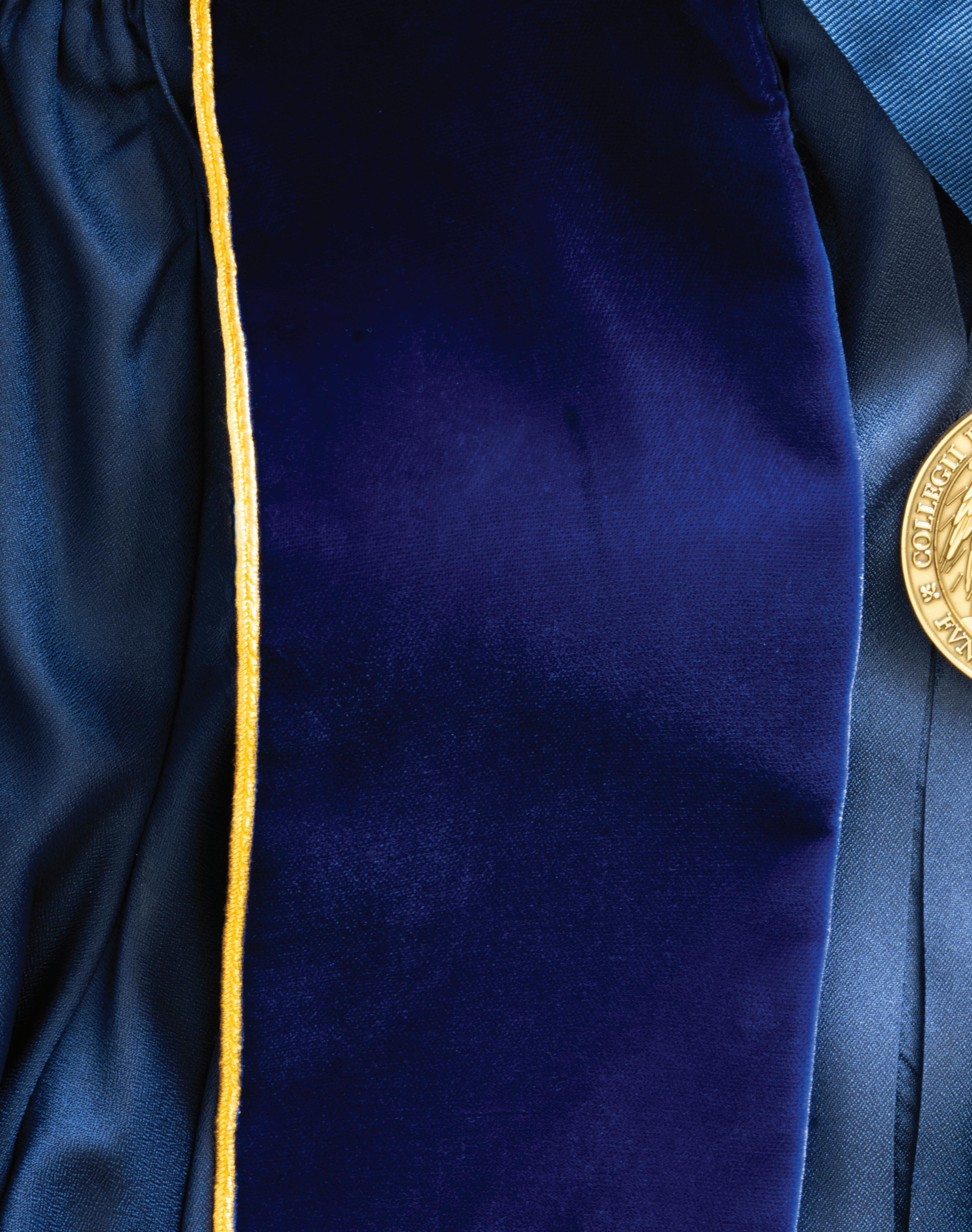 THIS PAGE: Academic regalia of Lisa Trivedi, the Christian A. Johnson Excellence in Teaching Professor of History and Hamilton’s new College Marshal PAGE 38
PHOTO BY KEVIN M. WALDRON
THIS PAGE: Academic regalia of Lisa Trivedi, the Christian A. Johnson Excellence in Teaching Professor of History and Hamilton’s new College Marshal PAGE 38
PHOTO BY KEVIN M. WALDRON

HAMILTON MAGAZINE
SPRING 2024
VOLUME 89, NO. 1
EDITOR
Stacey J. Himmelberger P’15,’22 (shimmelb@hamilton.edu)
SENIOR WRITER
Megan B. Keniston
ART DIRECTOR & DESIGNER
Bradley J. Lewthwaite
DESIGNER
Kevin M. Waldron
PRODUCTION MANAGER
Mona M. Dunn
PRODUCTION ASSISTANT
Phyllis L. Jackson
CONTRIBUTING WRITERS
Holly Mirales ’26
George Spencer
Catherine Vogt ’24
STUDENT ILLUSTRATOR
Sawyer Kron ‘25
PHOTOGRAPHERS
Zack Stanek
Kevin M. Waldron
WEB COORDINATORS
Esena J. Jackson
Katherine Rook ’10
SOCIAL MEDIA COORDINATOR
Tim O’Keeffe
INTERIM VICE PRESIDENT, COMMUNICATIONS AND MARKETING
Gillian M. King P’16
CONTACT
Email: editor@hamilton.edu
Phone: 866-729-0313
© 2024, Trustees of Hamilton College
IT’SCOMMENTS
HARD TO GO more
than a day or two without some reminder that Hamilton connections are everywhere.
A friend and fellow “grammar nerd” messaged me recently about an article she’d seen about the curious conundrum of proper punctuation. The example cited was the title of Herman Melville’s classic novel Moby-Dick. “Get out with that hyphen!” I replied, prompting her to send me the link to “Whale of a dilemma: Overlooked punctuation in ‘Moby-Dick’ augurs ill for hyphens.” The author’s name was instantly familiar to me:
Jim Memmott ’64, former senior editor of the Democrat and Chronicle in Rochester, N.Y. (Check it out — lots of Hamilton references!)
Driving home a week or so earlier I flip on NPR, only to hear a familiar voice — that of Ann Owen, professor of economics, talking about the dip in inflation on Marketplace
The other night on Jeopardy!, the correct answer was none other than Roz Chast K’75. (“This New Yorker cartoonist tackled the topic of her aging parents in Can’t We Talk about Something More Pleasant? ”) None of the contestants knew the answer, but I was screaming Roz’s name in the form of a question from my living room couch!
A nd then there’s the world of sports. Recent headlines provide just a glimpse of the contributions Hamiltonians are making from the front
office to the sidelines — in Major League Baseball, Adam Lewkowicz ’02 now has a World Series ring thanks to his work as director of amateur scouting operations for the Texas Rangers (see p. 4). Scott Havens ’95 is the new president of business operations for the New York Mets (watch for a story on him soon).
In this issue, we introduce several Continentals alumni who are “playing it forward” as college-level coaches, passing along their experience and talent to the next generation of student-athletes (see p. 42).
A s writer John Pitarresi ’70 was wrapping up the story, we were following closely the news of Kyle Smith ’92, who in his fifth year as head coach of men’s basketball at Washington State led the team to the NCAA tournament for the first time since 2008. (Following a win over Drake in the first round, the Cougars fell to Iowa State.) Washington State’s 25-10 overall record — which included a win over top-10 ranked Arizona — earned Smith Pac-12 Coach of the Year honors and helped land him a new job. On March 25, it was announced that he’ll be moving into the head coaching position at Stanford.
To all Hamilton alumni coaches, we send out a big “Go Blue” — even if their current teams are anything but!
Stacey J. Himmelberger P’15,’22, Editor
THE TRUSTEES
David M. Solomon ’84, P’16, Chair
Robert V. Delaney ’79, Vice Chair
Linda E. Johnson ’80, Vice Chair
CHARTER TRUSTEES
Aron J. Ain ’79, P’09,’11
Mason P. Ashe ’85
Richard Bernstein ’80
Peter B. Coffin ’81, P’14
Julia K. Cowles ’84
Mark T. Fedorcik ’95
Daniel C. Fielding ’07
Amy Owens Goodfriend ’82
Philip L. Hawkins ’78
David P. Hess ’77
Gregory T. Hoogkamp ’82, P’25
Lea Haber Kuck ’87, P’24
Sharon D. Madison ’84
Christopher P. Marshall ’90
Robert S. Morris ’76, P’16,’17
Daniel T.H. Nye ’88, P’24
Montgomery G. Pooley ’84, P’16,’19
Ronald R. Pressman ’80
Imad I. Qasim ’79
R. Christopher Regan ’77, P’08
Nancy Roob ’87
Alexander C. Sacerdote ’94
Jack R. Selby ’96
David Wippman
ALUMNI TRUSTEES
Betsy G. Bacot ’84
Aditya Bhasin ’94
Phyllis A. Breland ’80
Kathleen Corsi ’82, P’23
Eric F. Grossman ’88
Monique L. Holloway ’87, P’14,’18
Edvige Jean-François ’90
Kevin J. O’Donnell ’89, P’22,’25
Daniel I. Rifkin ’88, P’23
Lindsey Pizzica Rotolo ’97
William C. Schmoker ’89
LIFE TRUSTEES
Henry W. Bedford II ’76
David W. Blood ’81
Harold W. Bogle ’75, P’14
Brian T. Bristol P’11
Christina E. Carroll P’90
Gerald V. Dirvin ’59, P’84, GP’17
Sean K. Fitzpatrick ’63, P’87
Carol T. Friscia K’77
Lee C. Garcia ’67
Eugenie A. Havemeyer GP’00
Joel W. Johnson ’65, P’93
Kevin W. Kennedy ’70 †
A.G. Lafley ’69 †
George F. Little II ’71, P’04
Arthur J. Massolo ’64, P’93
Donald R. Osborn P’86, GP’16
John G. Rice ’78
Stephen I. Sadove ’73, P’07,’10,’13 †
Howard J. Schneider ’60, P’85,’87,’89, GP’21
Thomas J. Schwarz ’66, P’01
A. Barrett Seaman ’67
Nancy Ferguson Seeley GP’17
Chester A. Siuda ’70, P’06, GP’25
Susan E. Skerritt K’77, P’11
Charles O. Svenson ’61, P’00
Thomas J. Tull ’92, P’13
Susan Valentine K’73
Jack Withiam, Jr. ’71, P’16,’20
Jaime E. Yordán ’71
Srilata Zaheer
† Chairmen Emeriti
PRESIDENT OF THE ALUMNI ASSOCIATION
John J. Christopher ’83, P’14
2 HAMILTON
Scan to read online edition.
Hamilton’s Next President: Steven Tepper
Steven Tepper will officially join the Hamilton community on July 1 as the College’s 21st president. Currently the dean and director of Arizona State University’s Herberger Institute for Design and the Arts, the largest comprehensive design and arts college at a research university in America, he will bring with him a wealth of experience and a visionary approach to making creativity and human expression central to learning, discovery, and civic engagement.
The Board of Trustees unanimously elected Tepper in January following a nationwide search that included input from faculty, students, and alumni. He will succeed David Wippman, who is retiring in June after eight years at the helm.
Tepper was lauded at Arizona State for his ability to assemble first-rate technologies and talent, combining the disciplines of art, science, engineering, technology, and media. His dedication to cultivating an inclusive learning environment and promoting interdisciplinary collaboration aligns with Hamilton’s commitment to
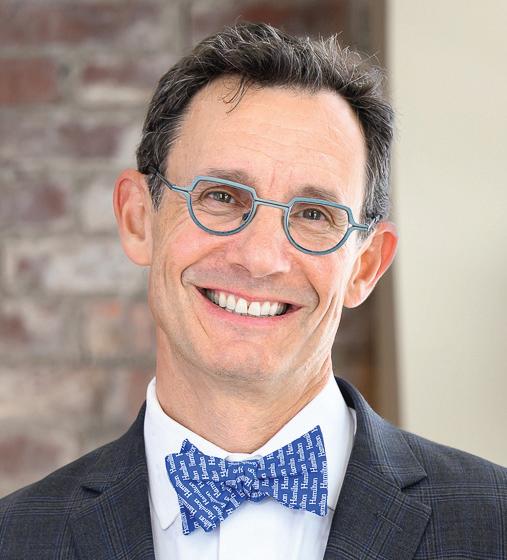
providing a transformative education that prepares students for a world undergoing rapid change.
In addition, Tepper has championed inclusivity. During his tenure, the number of Hispanic, Black, and Indigenous full-time faculty at the institute more than tripled; dozens of fellowships and visiting positions for artists and designers from underrepresented communities were created; and courses, tracks, and degrees that embrace diverse cultural expression launched. One notable example is the Sidney Poitier New American Film School.
In announcing the president’s appointment on Feb. 7, search committee co-chair and trustee Linda Johnson ’80 noted, “Steven Tepper emerged as the unanimous top finalist from a strong and diverse pool of well-qualified candidates.”
Trustee and fellow co-chair Bob Delaney ’79 added that Tepper stood out “for his commitment to the idea and promise of a liberal arts education and his vision to graduate students who are connected to
and prepared to thrive in a world of constant and accelerating transformation. His vast scholarly record and the breadth of his leadership experience make him the perfect match for Hamilton.”
Prior to joining Arizona State, Tepper served on the faculty at Vanderbilt University where he was a key architect of the Curb Center for Art, Enterprise, and Public Policy, a national think tank for cultural policy and creativity. He also worked as deputy director and lecturer of sociology and public policy at the Center for Arts and Cultural Policy Studies at Princeton University. Tepper holds a bachelor’s degree from the University of North Carolina at Chapel Hill, a master’s degree in public policy from Harvard University’s John F. Kennedy School of Government, and a doctorate in sociology from Princeton.
“I am honored and excited to join the Hamilton College community,” Tepper said upon his appointment. “Hamilton’s rich history, emphasis on communication, open curriculum, and dedication to fostering a diverse, inclusive, and creative campus are values that resonate with me deeply. I look forward to working with the talented students, faculty, alumni, trustees, and staff on the next phase of Hamilton’s evolution — one that elevates Hamilton as the most creative and connected liberal arts campus in the world ”
Welcoming the Teppers
Steven Tepper and his wife, Dana, visited campus on Feb. 29 to tour academic facilities and spaces, engage in conversation with faculty and staff, and meet with student leaders. The president-elect also was introduced to the community at a welcome event in the College Chapel.
Tepper took the podium where he addressed topics that spanned his life to date, including his upbringing outside of Washington, D.C., and being what he described as a “Smithsonian baby,” to the moment he realized, at age 17, that he “wasn’t creative,” which served as the seed for what would become his life’s work.
“I’ve spent the rest of my life as a sociologist and a scholar trying to understand creativity in a context where forces are trying to restrict and contain it; asking how we place it at the center of education, of community building, of democracy, of work,” he said. “I want to make sure that our social institutions, which include our colleges and our universities, and all of our collective stories of ourselves and of our potential as a species, are not unduly restricted by this narrow view of creativity.”
For more on Steven Tepper’s visit to College Hill, see hamilton.edu/newpresident, and look for a feature on Hamilton’s new first family in the next Hamilton magazine.
Compiled from several articles on Hamilton’s news site
OUR NEW PRESIDENT SPRING 2024 3
Know Thyself
MEET PEOPLE TAKING HAMILTON’S MOTTO TO HEART AS THEY DISCOVER AND EXPLORE THEIR PASSIONS WHILE MAKING VALUABLE CONTRIBUTIONS ON COLLEGE HILL AND BEYOND.

Drafting a World Series Title
Adam Lewkowicz ’02
Adam Lewkowicz ’02 was a bird dog. That’s baseball lingo for someone who volunteers to help a major league scout evaluate players. A four-year starter for Hamilton’s baseball team, after graduation he lived at home in Cottekill, N.Y., (“probably to my parents’ dismay,” he recalls) while working as an overnight hotel clerk and coaching high school football.
“I was doing anything to make a few dollars so I could keep my baseball dream alive,” says Lewkowicz, who as a boy dreamed of playing in the World Series. “My goal was to take small step by small step
from there.” After serving as an unpaid scout for the Milwaukee Brewers, the Pittsburgh Pirates hired him in 2006, and he joined the Texas Rangers three years later.
Today he’s in his 16th season with the Rangers, who won the 2023 World Series after a roller coaster season. Now in his third year as director of Amateur Scouting Operations, he oversees 26 employees who each year evaluate nearly 1,000 high school and college players hoping to be drafted.
We caught up with Lewkowicz in his Fort Worth, Texas, home during the off season.
What’s the best part of your job?
There’s so much joy for me in the mental process of what I do. I love that someone pays me to sit at a ballpark and think about the future of a person I’m watching — how
they might fit into our Rangers scheme, where they’re going to go in the draft, and how I can maximize their value.
You majored in psychology. What role does that play in scouting?
It’s a huge part of player evaluation — understanding the person and what drives him. Sometimes you go too deep. You read too much into things. You have to check those biases. Evaluating players is a combination of the subjective and objective. Bias is scouting. You can’t scout without it. You have to have seen hundreds of players to understand what “good” is. In the last few years, we started incorporating an analytical model to help make decisions. It finds the ideal way to blend those two worlds and help us stack players.
HAMILTON 4
Adam Lewkowicz with two things he’s proud of — the 2023 World Series trophy and his Hamilton Commencement cane.
What’s the biggest misconception people have about your job?
People don’t understand how difficult it is for players to go from high school to the big leagues. They think getting drafted is a golden ticket to playing on television. It’s not. Almost every player goes to the minor leagues first. Only three percent of all draftees ever play one day in the majors.
Of the players you’ve scouted, who has dazzled you the most?
Left fielder Evan Carter. We drafted him in 2020 when he was in high school. He lit me up right away. I loved his swing, his attitude, and his effort. His physical and cognitive tests were all off the chart. We have draft meetings before we draft. When we discuss a player, very rarely does the entire room say, “Yes, let’s do this.” Evan was that player. He rocketed through our system and got called up last year when he was 21. He tremendously helped us win the World Series.
You played football in high school, but baseball became your passion. Why? Football is a reactionary sport. You’re told what to do. I was a running back. When someone comes after you, you react to get out of the way. Baseball is so much more a thinking process. What’s he going to pitch me here? What’s the runner situation? How many outs? Should I shift myself in the field to defend the line? Should I move in the gap? I love that part of it. I love everything about baseball. I love putting the glove on. I love the way it smells. I love the grass and the dirt.
What’s your prediction for the 2024 season?
My first thought about 10 minutes after we won was “Wow! This is incredible. How do we do it again?” • — George Spencer

To My Hamiltines, With Love
Jessica Mozeico ’95
Cofounder of Et Fille Wines in Newberg, Ore., Jessica Mozeico ’95 joined women in her industry who were interviewed for a Feb. 7 article in Paste magazine titled “Toast to Female Friendship with These Women-Made Drinks on Galentine’s Day.” Here’s what she had to say:
“Over the past 34 years, my core group of 10 girlfriends from Hamilton College has helped each other navigate illness, marriage, divorce, children, infertility, empty nesting, death of parents, job interviews, job losses, and more. I’ve learned so much from the Ham Fam about love, loyalty, and lifelong friendship. And we
all know that no matter what happens in our lives, we’re supported.”
Mozeico grew up helping her dad, a software engineer, with his winemaking hobby. After Hamilton, she earned her MBA from Wharton at the University of Pennsylvania and pursued a career in biotechnology marketing, eventually founding her own consulting firm. However, when the opportunity arose to once again make wine together, the father-daughter team turned in their corporate IDs. In 2003, they cofounded Et Fille — which means “and daughter” — and ran the winery together until her father’s death in 2017. Today, Mozeico continues her vision for making “elegantly complex wine” from sustainably farmed vineyards in Oregon’s Willamette Valley. She draws her inspiration from her father’s legacy and her daughter’s future. •
5 SPRING 2024
Jessica Mozeico’s Ham Fam gathered in 2018 in California. Top row from left: Mozeico, Laura White Kolshak ’94, Amy Gibson Cooperman ’94, Susan Postlewaite Vehaskari ’94, Katherine Oliver Raphaelson ’94; Bottom row: Liz Fox Keogh ’94, Alison Rosenblum ’94, Giselle Baluarte Gordon ’94, Andrea Rasmussen ’94, Allison Phillipe Martindale ’94.

The Next J.K. Rowling?
Sarah J. Maas ’08
Based on the popularity of her books, media outlets and fans alike are asking that very question about Sarah J. Maas ’08. With her latest release, House of Flame and Shadow, the “romantasy” author has topped 40 million copies sold across 38 languages. Videos with hashtags relating to Maas have been viewed more than 14 billion times, her publisher Bloomsbury reports.
Maas is the author of 16 books in three series — Throne of Glass, A Court of Thorns and Roses, and Crescent City. She began translating stories from her imagination onto paper at age 16 and published her first book a decade later.
“I think it is so wonderful that people have become aware of the joys of romance and fantasy all in one. That’s what I grew up loving to read. It’s what I always wanted to write,” she told Jenna Bush in a TODAY show segment that aired Jan. 30 on NBC. •

Blessing it Forward Chris Potter ’87
Saving one life at a time. That’s the focus of the work done by Chris Potter ’87. As director of the international human rights organization YouCanFreeUs, Potter knows humanity’s ugly side. He has walked the sprawling red light districts of Mumbai and Kolkata, India, where women are forced into prostitution and held against their will.
Fifty million people are victims of modern slavery, according to Potter, who also heads the hedge fund Northern Border Investments. “It’s such a huge problem that when you try and wrap your mind around the enormity of it, it’s overwhelming. Few organizations do the rescue work and care for victims 24/7. We focus on one life at a time,” he says.
The Long Island native heads into other dangerous areas. Two weeks after the Ukraine war started, he flew to Romania
where he set up a distribution route on its border with Ukraine to bring in generators, medicine, and food. Since then, he has returned to support widows by buying them apartments and cars.
Potter himself has walked a hard road. “I’ve had a crooked journey,” he says. After earning his MBA at Columbia, he battled alcoholism while working in the finance industry. The twin traumas of his father’s death and 9/11 made him go sober. Nine years later a running accident shattered his pelvis. He realized during his 11 days in the hospital that God had a plan for his life.
“Walking in the Christian life has helped me to figure out what I’m good at and what I’m not good at,” he says. “I’ve been blessed in a lot of ways. I think God wants us to have a fun, enjoyable life, but I think he also wants us to bless others. The more we’ve been blessed, the more I think we have a duty to bless others.” •
— George Spencer
HAMILTON 6
Chris Potter with his rescue dog Mou, a Canaan. In addition to his other activities, Potter is involved with an organization that rescues street dogs from Mexico and India.
Freeing Inmates Through Art
Jeffrey Greene ’91
For the past 33 years, Jeffrey Greene ’91 has been freeing incarcerated people in Connecticut’s prisons. As head of the Prison Arts Program, he leads a team of volunteer artists who have given more than 5,000 men and women in 15 facilities the pens, pencils, and supplies that have liberated their souls.
“My No. 1 job is to remind everyone living and working in prison that prison isn’t the world,” he says. “People are resilient. People are resourceful. They’re able to build a world within a horrible world. They build a world that is theirs, one they can control and lets them shape the world around them.”
One of the nation’s oldest correctional arts endeavors, the Prison Arts Program is run by Community Partners in Action, a Hartford, Conn.-based criminal justice nonprofit whose founders included Mark Twain. Besides teaching, the program holds annual art exhibitions that have displayed as many as 750 works.
Greene fell into this work by chance. After graduation, he volunteered to curate an annual show at the maximum-security Cheshire Correctional Institution. Until then he thought art was “an academic, technical, intellectual pursuit.” When he saw dozens of people behind bars making art, he realized it was also spiritual.
“All of a sudden it was revealed to me that an artist is someone who can’t help but make art, and it has to naturally come from you,” the Portland, Conn., native says. “It has to be authentic. The substance has to come from inside you. That blew my mind.”
Immediately he knew he had found his life’s mission.
“What also blew my mind was how absurd the prison [system] is. It’s criminal these places exist in the way that they exist. I saw this closed, repressive world. I wanted

to liberate it. I was furious,” he recalls. “There were all these petty expressions of petty power going on around me. I thought if I can have any role in mitigating all that bullshit, I want to do it.”
Now 55, Greene almost always finds himself the oldest person in the prisons where he teaches. He has to educate younger prison staff and wardens about his work. “I’m always, like, preaching to a new pharaoh,” he says.
At 6′5″, he finds his lanky height to be an advantage. “I’m imposing, but because I’m skinny, I’m not a physical threat. People can tell I’m earnest, and that I’m not there to be serving myself.”
This year he has 250 students, some of whom have waited years to get into his workshops. His students live with the worry that their creations might be confiscated — technically they are considered contraband. Because of their surroundings, incarcerated people often make art with unusual materials — food wrappers, dyes from dissolved food, soap, Q-Tips, candy, pen caps, and even caulk from walls and windows.
Greene has always urged his students to use art as self-exploration. “The interactions we have in class are almost always incredibly revelatory,” he says. “I have no curriculum. I don’t know what’s going to happen. Always incredible things happen. It’s sincere. It’s substantial. It’s authentic.” •
— George Spencer
Finding Her Calling
Alice Grant Alberts ’14
Alice Grant Alberts ’14 was the first to cross the finish line at the 2023 Ironman Lake Placid. She also won Ironman Maryland and the Boston triathlon (Olympic distance) last year in her first full year as a professional triathlete. The former Hamilton lacrosse player didn’t plan on a career as an athlete. While at Yale School of Nursing working on her master’s degree, she took up running as a stress reliever. She and her husband started cycling during the pandemic, and then she began swimming in late 2020 before signing up for her first ironman race in June 2021. A little over a year later she stepped down from her job as a nurse practitioner to focus on her sport full time.
Alberts has found her passion. After her career as an athlete ends, she plans to stay with the sport as a coach, something she’s been doing now in addition to maintaining her own intensive training schedule. “I love it and feel I get a lot of the fulfillment I got from being a nurse practitioner — helping people live healthy lives and better themselves,” she says. •
 Jeffrey Greene with pieces by Mark Despres, an artist he’s worked with in prison for over 20 years.
Jeffrey Greene with pieces by Mark Despres, an artist he’s worked with in prison for over 20 years.
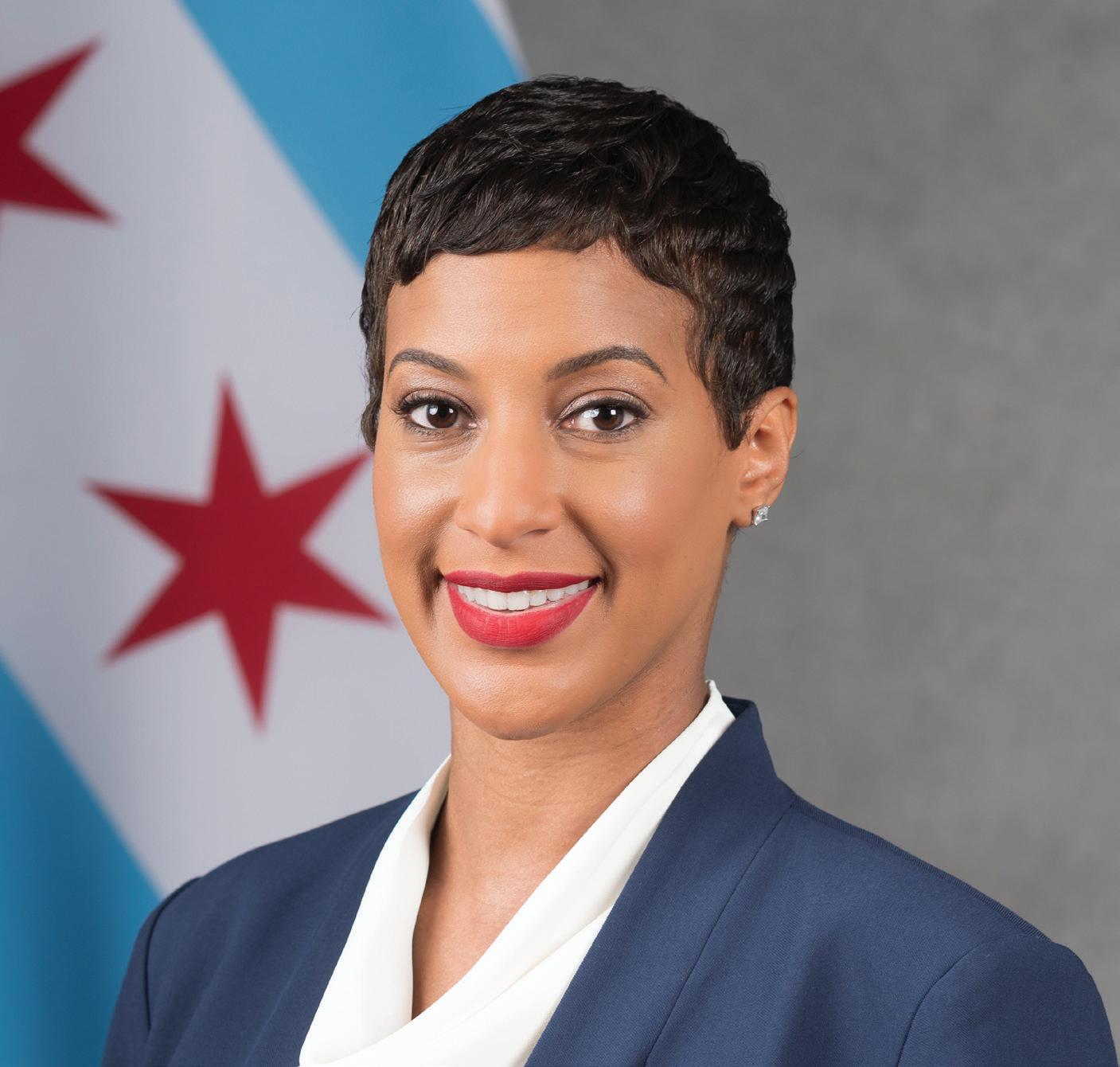
Igniting Chicago’s Real Estate Scene Ciere Boatright ’05
Ciere Boatright ’05, Chicago’s new commissioner of the Department of Planning & Development, calls herself a “firecracker.” Born on the Fourth of July, she says, “I have a fiery personality ... I have this desire to light up spaces in a positive way.”
Unanimously approved by the city council, she had made a name for herself at the nonprofit Chicago Neighborhood Initiatives. She helped oversee $400 million in economic development projects in underserved areas that created 1,800 jobs in the food, housing, and retail sectors.
“For many people, real estate development is the bricks and the sticks. It’s the housing, the industrial, the retail. For me, it’s a transformation of lives. It’s job creation, bringing amenities, and supporting small businesses and affordable homeownership,” says Boatright, who grew up in a rough neighborhood on the city’s South Side.
She remembers as a child that her mother routinely shopped for groceries and took her to play elsewhere. “That’s what you
had to do,” she told Crain’s Chicago Business in 2020 when it named her one of the city’s “40 Under 40” people to watch. “It fueled my passion for this type of work. I didn’t want to run from my neighborhood. Instead, I wanted to go back and help uplift neighborhoods.”
Today the city’s commercial real estate vacancy rate has spiked to record highs — nearly 25 percent, according to Crain’s. Weak demand has forced major foreclosures and left once bustling retail areas like Michigan Avenue hurting. Boatright welcomes the challenge. “This is a hard job. It’s a tough job because it’s a very tough real estate market. I’m going to leverage every single financial and economic toolbox to spur development,” she says.
Real estate developer Doug Doig saw the results she achieved turning around Chicago’s languishing Pullman neighborhood. He believes she has the “Ciere magic” to speed up projects.
Boatright says that, so far, she has been “pleasantly surprised” by Mayor Brandon Johnson’s willingness to cut red tape. Wizardry has nothing to do with it, according to her. “It’s not magic,” she says. “It’s grit.” • — George Spencer
On the Path to ‘Know Thyself’
Cassandra Adler ’24
Cass Adler ’24, a double major in Hispanic studies and creative writing, shares her Hamilton journey.
August 2020
JOINED THE “HAMILY”
Arrived on College Hill as a first-year student from Bushwood, Md.
April 2021-ongoing
ALEX INTERN
As one of the first interns with Hamilton’s Advise, Learn, EXperience (ALEX) coordinated advising network, collaborates with offices throughout campus to plan and execute programming and events; develops marketing materials to generate student interest.
Because I joined the semester before ALEX launched, I had the unique opportunity to be involved with the initial planning and organizing. It was interesting to help provide input into a new, developing program — to get in on the ground floor of something I knew would outlast my time here.
August 2021-ongoing
WRITING CENTER TUTOR
Works with students in the organization and content of their essays; analyzes grammatical and aesthetic components of written academic work; organized campuswide microfiction contest and Reading to Write events where tutors work with first-year students to help them prepare for college-level assignments and essay writing.
HAMILTON 8
Ciere Boatright, Chicago’s new commissioner of the Department of Planning & Development.
“
At the Writing Center, it’s not just about the work — it’s about the community and how we all learn and work together. Getting to work with students on their papers has taught me so much, not just about writing, but about all types of communication. My fellow tutors are an amazing group of people, and I feel I really had the chance to grow in my position along with my peers.”
Spring 2022-ongoing COSTUME SHOP ASSISTANT
After taking a theatre class and one on playwriting, works in the Kennedy Center for Theatre and the Studio Arts costume shop; designates and catalogs costume pieces; practices skills in hand and machine sewing to create costumes for theatre productions.
Fall 2022-ongoing
ALEXANDER HAMILTON PRESS CLUB CO-FOUNDER
Along with roommate Dana Goettler ’24, started a club for students interested in working with the College’s vintage letterpress; hosts weekly meetings and activities, including the annual Valentine’s Day card-making event.
Spring 2023
ACADEMIC YEAR IN SPAIN
Spent the semester in Hamilton’s program in Madrid. The best part? Taking day trips throughout the country.
Summer 2023-November 2023
MARKETING INTERN AT PARAMOUNT
Worked with Star Trek team to create and distribute executive summaries of events and activations; helped create and execute marketing campaigns; monitored press responses to track effectiveness in the marketplace; worked on cross-media experience to expose the franchise to a younger demographic; helped manage crowd interactions at San Diego Comic Con Fandom Panel; presented to CBS executive leadership on strategies to appeal to Gen Z.
Like my dad, I’m a huge science fiction nerd. I didn’t know what to expect when I first started the internship, but it was a great behind-the-scenes learning experience. When I got my official badge for San Diego Comic Con — that was super exciting.
Fall 2024 ELECTED TO PHI BETA KAPPA
The honor is a nice bookend to receiving the PBK Book Award after her first year at Hamilton.
Currently LOOKING FOR A JOB IN EVENT PLANNING
I came to Hamilton undeclared with little idea of what I wanted to do with my life. I’ve learned so much here and met so many different people. My professors have shaped my intellectual curiosity and encouraged my organizational skills and work ethic. Through the jobs I’ve held, I’ve come to realize that my true passion lies in reaching out and connecting with people by creating experiences that they love.
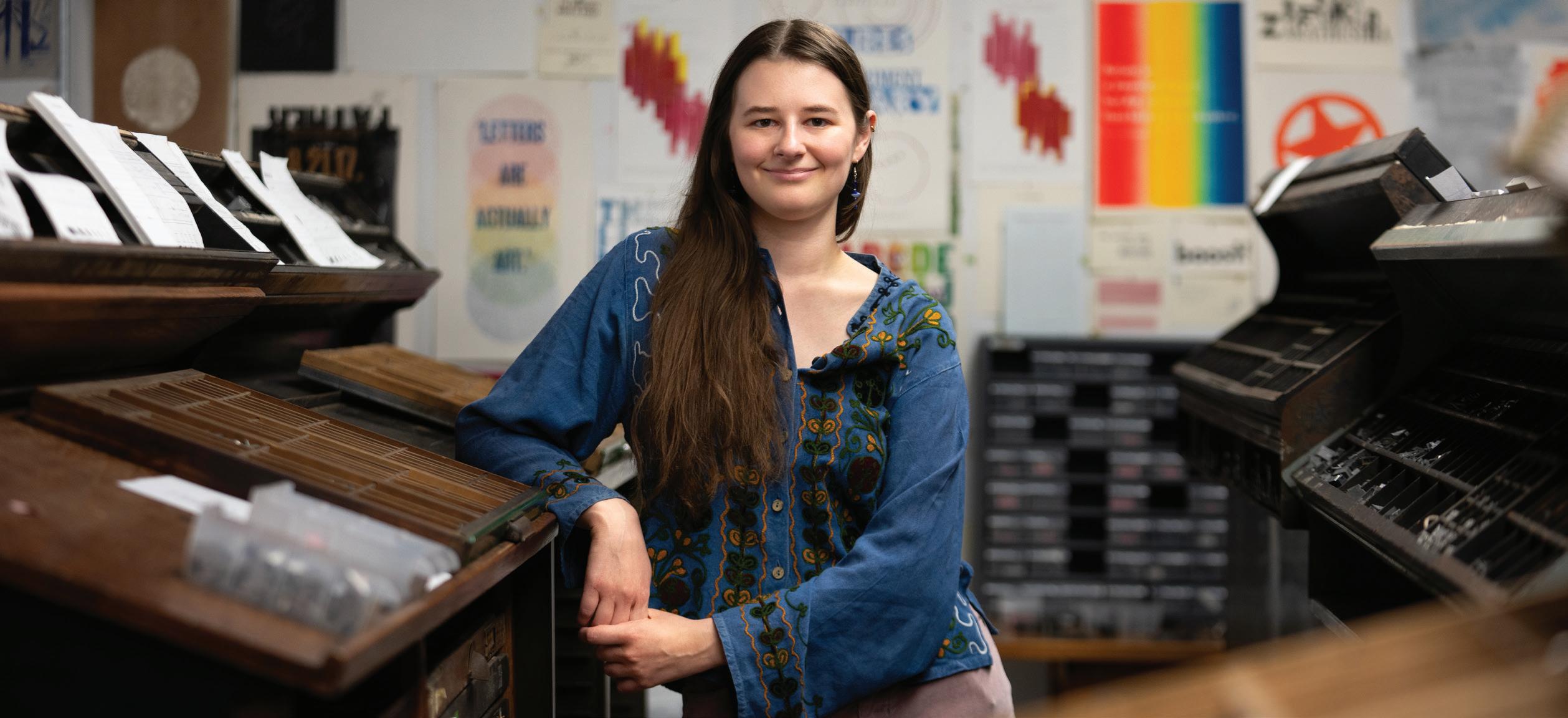
• “ “ “ SPRING 2024 KEVIN M. WALDRON
Cass Adler in the Letterpress Studio
The Last Kirkland Professor
Bill Salzillo
When Professor of Art Bill Salzillo retires in June, it will mark more than the end of a productive 50-plus year career. The artist, teacher, and gallery director is the last member of the Hamilton faculty to have begun his tenure at Kirkland College.
Salzillo came to College Hill in 1973 and was instrumental in establishing the Art Department at Kirkland. He joined the Hamilton faculty in 1978 when the colleges merged and from 1982 to 1992 served as founding director of the Emerson Gallery. A painter and printmaker, his work has been exhibited at the National Academy of Design and Fourteen Sculptors Gallery, New York City; Everson Museum, Syracuse; Munson-Williams-Proctor Institute, Utica; and elsewhere.
We asked him to look back on his career. Here are excerpts from that discussion.
How did you develop your love for art?
My dad was in the service, so I spent time as a kid in Japan, Virginia, France. We moved around a lot, which was fun. It led to a broad education, and visiting museums led to my interest in art. My aunt gave me a paint kit when I was 12-years-old, but I never thought of [art] as a profession. When I got to Middlebury I started taking art courses and was encouraged by my professors.
Salzillo earned an undergraduate degree in history at Middlebury College and a second in fine arts at Rhode Island School of Design. He holds a master’s degree from Cranbrook Academy of Art.
At the time I went to grad school, liberal arts colleges — institutions like Hamilton — were suddenly starting to establish
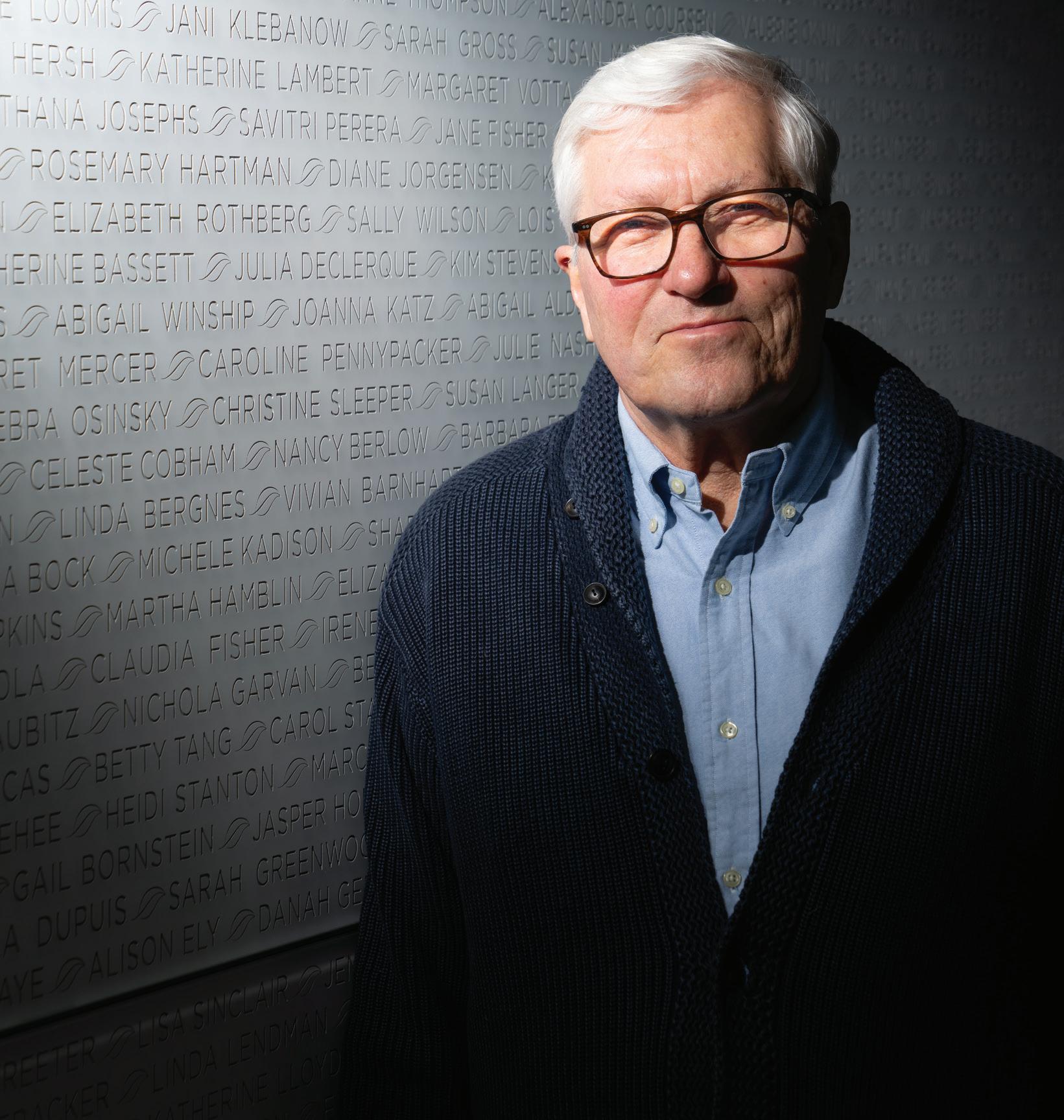
serious art programs. Almost everyone was there to get a teaching job. … I was never really interested in moving to New York [and working as an artist]. While I was at Cranbrook, I spent two summers teaching at Interlocken Music Camp. I met some great people, and when I got in the classroom it felt like home, a place where I could be comfortable.
What drew you to Kirkland?
Kirkland was unusual because it had six people on the art faculty. We had film, photography, sculpture, printmaking, ceramics, painting. Nobody in our peer group had that. List Art Center — at the time a stateof-the-art building — was the only building [at Kirkland] designated exclusively for a specific use. It was a great place to teach with tremendous support unlike at other institutions where [the arts] was a sideline; we were the focus. Kirkland was about putting creativity right at the center.
The merger of Hamilton and Kirkland did not come without its share of tense moments within the faculty ranks, and, in the end, Salzillo recalls that many were not invited to stay. However, the Art Department remained intact.
How did you come to add gallery director to your duties?
From the time I came to Kirkland, I was very interested in bringing in people from the outside to meet with students. Up until I arrived, Munson-Williams-Proctor programmed the Root Arts Center [in what is now the Anderson-Connell Alumni Center]. They had some amazing shows there — Edward Hopper, Charles Burchfield, and others.
Eventually the College saw the need to take over management of its collection, and the Emerson Gallery opened on the first floor of Christian Johnson Hall with Salzillo as
HAMILTON 10
Bill Salzillo in front of the Kirkland Wall in the Kennedy Center for Theatre and the Studio Arts. The wall includes the name of every alumna who matriculated at Kirkland College.
KEVIN M. WALDRON
its founding director. During this time he continued to teach four courses and chair the Art Department.
I always saw working with the gallery as part of my teaching, bringing in students to work there. I had been doing a lot of curating at the Root Arts Center, and I was very involved in supporting plans for the new gallery, which grew essentially from the idea of it being no more than a lobby. Along came me who suggested we needed storage space and security and proper lighting. We were lucky [that people listened]. We had a good run. Nobody expected us to be having shows reviewed in The New York Times. When we started we had no arts advisory committee. I worked to establish relationships with alumni collectors like Keith Wellin [’50], Hans Schambach [’43], and Bill Roehrick [’34]. Pat and Eric Selch [’52, P’79,’88] had a fabulous collection, with Gauguin, Van Gogh, it was incredible. Michael Shapiro [’71, now director emeritus of the High Art Museum in Atlanta] was involved on our first committee. A lot of people were responding; a lot of people were coming in who were never involved before.
Alumni engagement led to opportunities, including a popular Hamilton collectors exhibit and two shows around an impressive collection of musical instruments owned by Schambach. “The Art of Music” traveled to the Whitney Museum in New York and garnered several prizes.
You left the gallery in 1993, but your involvement didn’t end, correct? It had reached a certain point where I had done much of what I had intended and decided I wanted to concentrate more on my family. I also realized we needed a new facility in order to move forward.
I did come back a few years later [when the gallery was between directors] to do a show with Dan Dietrich [’64], who had an
incredible collection. … And Kevin Kennedy [’70], who was board chair at the time, lent his support and pieces to another very well received “Hamilton Collects” show that marked the 20th anniversary of Emerson Gallery. That’s when serious discussions started about [what would become the Wellin Museum in 2012].
In his retirement, Salzillo plans to focus more time on his art, especially printmaking, and raising his French bulldogs — two grand champions and one champion.
Looking back over the past 50 years, what would you say was the best of Hamilton?
I’ve learned a lot being here. I’ve grown here and that to me is the thing about a place like Hamilton that’s different from the commercial art world. It’s a place where people take the time to learn and grow and study and understand.
There was so much collaboration that was fostered. I had some great colleagues. Carole Bellini-Sharp [the late professor of dance] started the same year that I did and we would collaborate on dance sets. Bill Rosenfeld [the late professor of creative writing] wrote an opera.
I believe that certain times are ripe with possibilities — the right people, the right circumstances. I saw those possibilities and was able to take advantage of that. It was the best of Hamilton because people were open, flexible. We had all of this support for the arts. It was important enough at Kirkland to make it a flagship program and then to continue developing the curriculum at Hamilton. People on campus became aware and joined those of us who advocated for [the arts] on campus, but alumni collectors advocated for it as well. To be part of that was exciting.
And please thank all of the students I’ve had the pleasure to work with over the years. They taught me everything • — Stacey Himmelberger P’15,’22
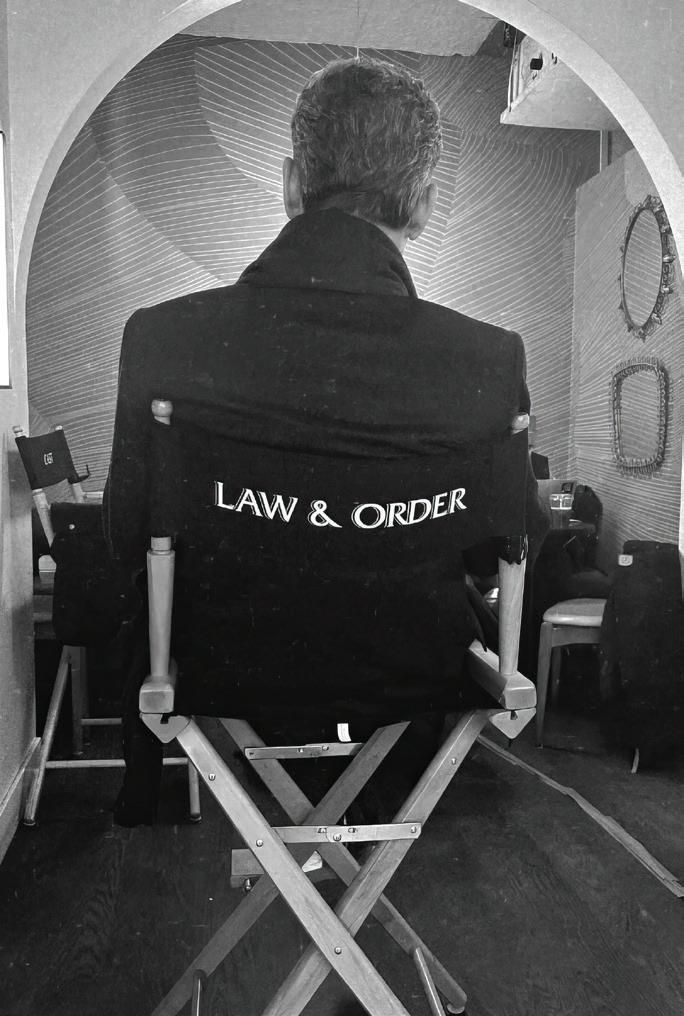
We Do Not Object! Tony Goldwyn ’82
After more than 400 cases (um, episodes), actor Sam Waterston has turned over Jack McCoy’s caseload in the Manhattan District Attorney’s Office to Tony Goldwyn ’82, who joined the cast of NBC’s Law & Order on March 14 as new DA Nicholas Baxter.
Goldwyn wrote on Instagram that “he has some very heavy shoes to fill” and thanked his new Law & Order family “for being so welcoming.” The show is now in its 23rd season.
A veteran actor, Goldwyn is perhaps best known for his role as President Fitzgerald Grant III on the ABC drama Scandal. He’s also appeared in numerous films, including Ghost, Nixon, The Last Samurai, Divergent, and Oppenheimer, and TV shows and movies. A few episodes of some popular shows, including Dexter, Grey’s Anatomy, Six Degrees, Justified, and Scandal, have been directed by him •
11 SPRING 2024
RECENT NEWS HIGHLIGHTS From across the Hamilverse
1 SCHAMBACH CENTER
The country trio Chapel Hart, which earned a coveted golden buzzer on the 17th season of America’s Got Talent, dazzled a College Hill audience on Feb. 3 with their striking threepart harmonies. Their song “You Can Have Him Jolene” was recognized as International Song of the Year in Scotland in 2021.
2 FILLIUS EVENTS BARN
Historian, filmmaker, and author Deirdre Sinnott spent time on campus this winter as a Levitt Center Community Fellow. She discussed Utica’s 18th-19th century history of slavery and antislavery activism.
3 TOLLES PAVILION
Febfest rocked out this year with the Battle of the Bands sponsored by CAB, Band Club, and WHCL. Nine student bands competed, with Junior Varsity taking home top honors and an invitation to perform as an opening act at the Class & Charter Day concert in May.
4 WELLIN MUSEUM




WANT MORE HAMILTON NEWS? Visit hamilton.edu/news.
And if you’re not receiving our monthly Hamilton Headlines in your inbox, send a note to editor@hamilton.edu, and we’ll add you to the list.
On display through June 14, “René Treviño: Stab of Guilt” features the artist’s range of mediums that reflect his personal inspirations as well as his research into Maya and Aztec history, Catholic symbolism, astronomy, pop culture, and queer theory. The exhibit includes 20 mixed-media collages collectively titled “Sunspots by Day, Asteroids by Night,” which incorporate imagery from 19th-century star charts made by C.H.F. Peters, Hamilton’s first professor of astronomy.















2
3
1
12 HAMILTON
H












5 DAYS-MASSOLO CENTER













































































Five members of the Congressional Naming Commission visited campus on Feb. 7 for a Common Ground event where they discussed their bipartisan approach and the obstacles they navigated. Michelle Howard, the first female four-star admiral and first Black woman to command a U.S. Navy combatant ship, spent an extended time on the Hill, meeting with students in classes and at small-group gatherings, including a dinner with leaders of BLSU and La Vanguardia.
6 DUNHAM RESIDENCE HALL







The Alexander Hamilton Press hosted its annual “Cynical Love Notes” event just prior to Valentine’s Day. Students tested their printing skills by hand-crafting cards that featured a quote by Jules Renard: “Love is like an hourglass, with the heart filling up as the brain empties.”
CHAPEL
Archaeologist Kathleen Morrison visited campus this winter to deliver the Plant Lecture. She discussed the development and early findings of LandCover6k, a project to aggregate archaeological land use data on a global scale for use in climate models.



















8 BURKE LIBRARY


Students in Associate Professor of Art Rob Knight’s photography class met in the new makerspace with Instructional Designer, Digital Innovation Forrest Warner in February to assemble pieces of medium-format cameras they created using 3-D printers. Originally manufactured in the 1950s and no longer produced, similar vintage cameras cost about $3,500; the students made theirs for approximately $300.
6 8 4 5
7
7 ILLUSTRATION
13 SPRING 2024
BY TOM
WOOLLEY

Curious About Curatorial Studies?
STUDENTS INTERESTED in com-
bining their area of concentration with experience working with artwork, historical documents, and rare artifacts will soon have the option to pursue a minor in curatorial studies. The National Endowment for the Humanities (NEH) recently awarded Hamilton a $150,000 grant to support the new curricular program designed to connect students and faculty with regional cultural institutions, as well as the College’s Wellin Museum of Art and Special Collections.
“A minor in curatorial studies will be based on interdisciplinary coursework and offer a range of opportunities for Hamilton students to gain firsthand experience in archives, museums, and special collections,” says Thomas Wilson, the Bates and Benjamin Professor of Classical and Religious Studies, who co-authored the NEH proposal with Assistant Professor of Hispanic Studies Marissa Ambio. Both serve as the project’s directors.
“I believe any discipline that deals with material and visual culture would be interested in participating,” Wilson adds. “This includes anthropology, art history, history, literature, and religious studies, among
others. It also incorporates the history of science, which would create opportunities for STEM students. The archival component of the proposal points to a broad range of hands-on experiences that students could explore.”
One of the program’s defining features will be partnerships with the Everson Museum of Art (Syracuse), Fenimore Art Museum and The Farmers’ Museum (Cooperstown), Munson Museum of Art (Utica), and the Rubenstein Museum of Science and Technology (Syracuse). In February, interested students met with representatives from each of the museums who talked about the programs, internships, and independent research they offer, all designed to introduce students to the variety of professional roles associated with curation.
Likewise, as Wilson and Ambio began developing the program, they met with museum personnel to ask how the new venture could most benefit partner institutions. A common theme emerged — the need for more diversity in their workplaces.
“Hamilton has incredibly smart students and a diverse student population, so getting students from underrepresented
Wellin student docents in a training session for the exhibition “René Treviño: Stab of Guilt.”
backgrounds who are studying the liberal arts to seriously consider these opportunities, and gain the expertise they would from this program, would open up a range of possible career choices that they might not be considering,” Wilson says. “This would benefit students, partner institutions, and Hamilton’s curriculum.”
Ambio said the Curatorial Studies Program will include workshops, guest speakers, and coordination with the Wellin Museum and Burke Library’s Special Collections with the aim of making faculty aware of the resources on campus. The program kicked off in November when about two dozen museum professionals came to College Hill to talk about their collections and missions with faculty and others.
“In addition to serving as a forum for discussion, the event brought together museum partners, fostering a professional community. The symposium is the first of many gatherings in which museum partners, faculty, and professionals can explore collaborative efforts,” Ambio says. “The infrastructure for this will help foster course creation in addition to other opportunities.”
The organizers are also hopeful that the partnerships will create new pathways for students to experience more of what the region has to offer Hamilton students.
“These places may feel like they are scattered throughout Central New York, but it takes about as long for somebody at Hamilton to get to any one of these museums as it does for somebody in New York City to travel from the Met [Metropolitan Museum of Art] to the Whitney [Museum of American Art] if they take mass transit,” Wilson says. “We tend to think of these as remote places, but we’re much closer than we think.” n — Compiled from several articles on Hamilton’s news site
HAMILTON 14
JANELLE RODRIGUEZ
What Rights Should Be Added to the U.S. Constitution?
THAT’S THE QUESTION students in the Levitt Center’s Justice Lab on Human Rights asked last semester. Suggestions ranged from amendments to regulate money in elections to guaranteed housing rights. Here, a few students share summaries of their positions.
Christian Colantonio ’25
Corporations and Politics:
A First Amendment Perspective
In 2010, Citizens United struck down caps on “independent” spending by corporations and unions, reasoning that money that doesn’t go directly to candidates can’t pose any danger of corrupting them. The court’s ruling was based on its assertion that corporations deserve these Constitutional protections because they are nothing more than assemblies of people (First Amendment).
Nonetheless, businesses in our culture operate independently of the people who make up the corporation and are not required to speak for the views of those people. I say that if money is speech, then speech is inherently unequal. And if I say that corporations are people, then not every man is created equal.
Mary Hurner ’24
A Human Rights Approach to a Women’s Rights Amendment
Critics have claimed that an Equal Rights Amendment to protect women’s rights is unnecessary because the Equal Protection Clause of the 14th Amendment provides substantial protection against gender discrimination. My essay, however, highlights how the Equal Rights Amendment does not contain a consistent framework through which to rule gender discrimination cases

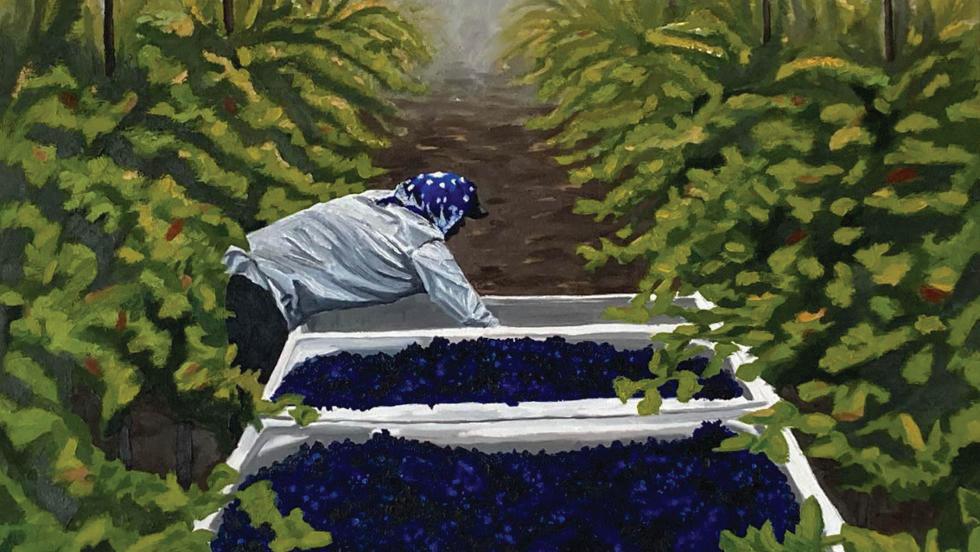
and therefore lacks a clear precedent as to how future gender discrimination cases should be ruled upon.
Ian O’Reilly ’26
Slavery is Always Wrong: Removing the Punishment Clause from the 13th Amendment
The belief that slavery was abolished by the passage of the 13th Amendment after the Civil War overlooks a significant exception included in the amendment. It states that slavery is permissible “as a punishment for crime.” This “Punishment Clause” has allowed the institution of slavery and its cruelties to continue for the last two centuries by simply giving it a new name: prison labor. There is no reason for slavery to be protected by our Constitution in any form, and therefore the Punishment Clause should be removed. n
Now on Display ...
WHEN LOOKING TO LIVEN UP his office in Buttrick Hall, Vice President for Academic Affairs and Dean of Faculty Ngoni Munemo turned to local talent. He created the Dean’s Choice Awards for Visual Art to recognize Hamilton art students whose pieces are selected to be on display for up to four years. Winners receive a monetary award for loaning their artwork to the dean. n

Inaugural winners of the Dean’s Choice Awards for Visual
CURRICULUM 15 SPRING 2024
Art (clockwise from top left): “Hell Nirvana” by Renyi Xu ’25; “Machine Learning” by Andrew Carlson ’23; “Vine Worker” by Campbell Berry ’24.
KNOW THYSELFIE
We
a handful of
a
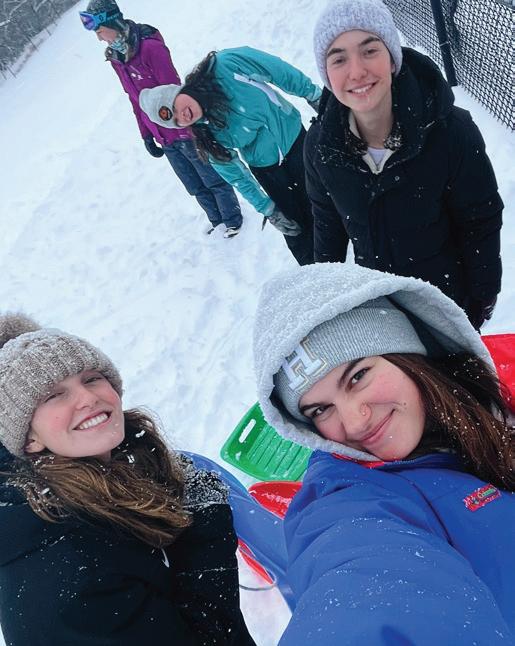
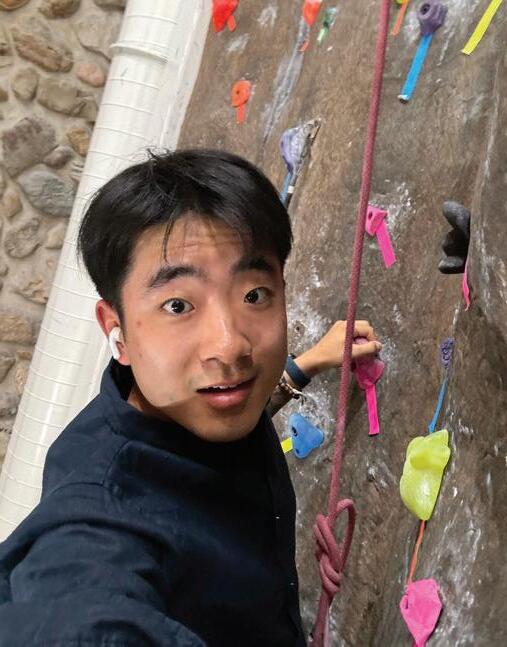
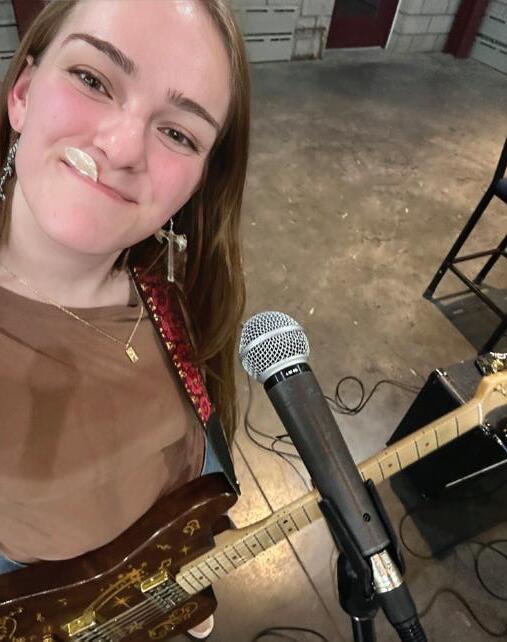
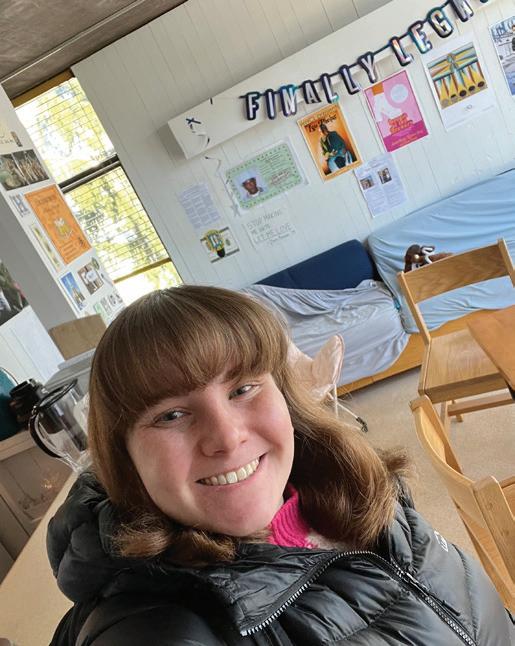

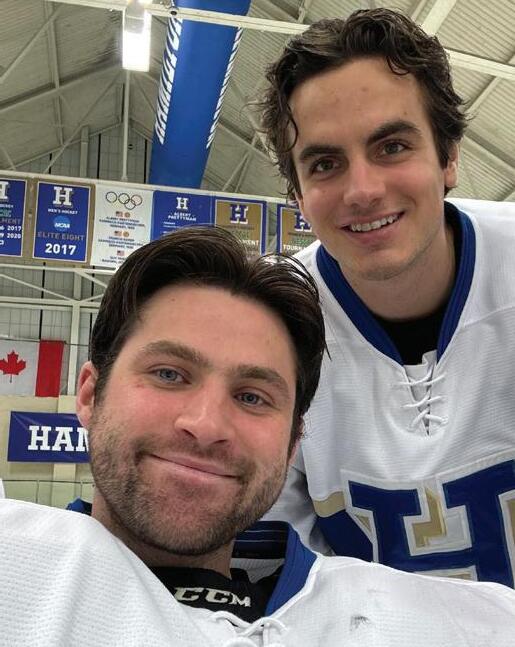


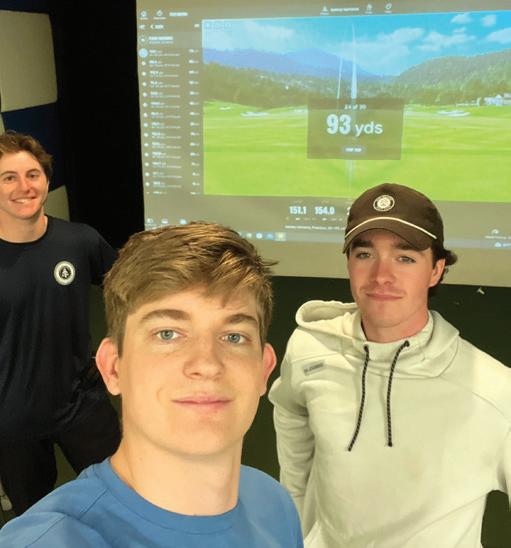
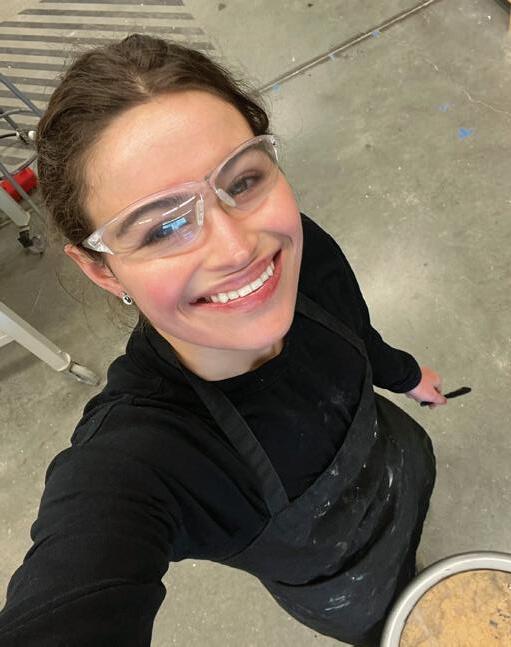

SHOW AND TELL HAMILTON 16
ALIANA POTTER ’24 Sledding with friends
BRIGIT COOK ’27 Rehearsing in Tolles Pavilion with her band, Yonic Youth
ENIMAN IMOKE ’26 Outside 120 College Hill (residence)
NORMA CALLEJAS ’26 In a List Hall practice room
HAO SHEN ’25 Scaling the Bruce Climbing Wall
TOMMY KANTAROS ’24
WILL TORMEY ’24
CHARLIE DONAHUE ’24 Practicing in the golf simulator room
JACK GRANT ’24
MAX BULAWKA ’26 On the ice in Sage Rink
ELIZA PENDERGAST ’24 Working in the Kennedy Center Zucker Woodshop
ELIANA GOOD ’24 Outside Milbank Residence Hall at sunrise
SABRINA TURNER ’24 On the G-Road Loop after a run
asked
students to share
selfie at a favorite spot on — or near — campus.
CATHERINE VOGT ’24 Suite common room in Milbank Residence Hall

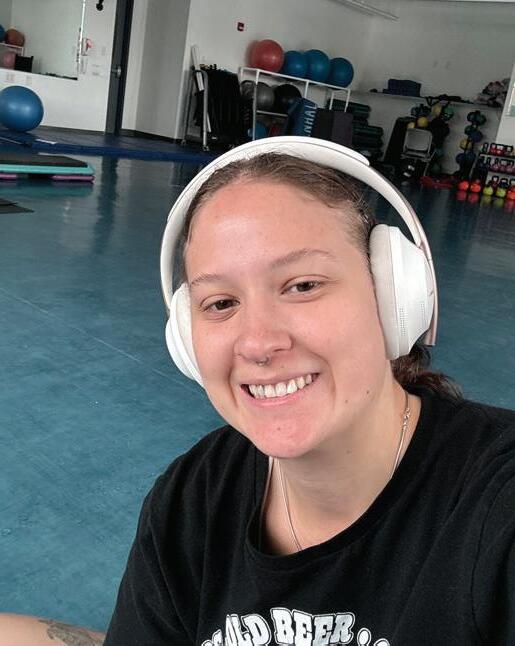
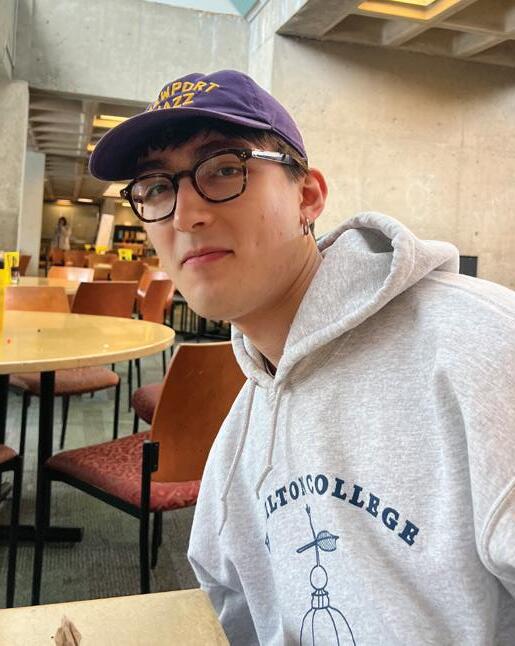
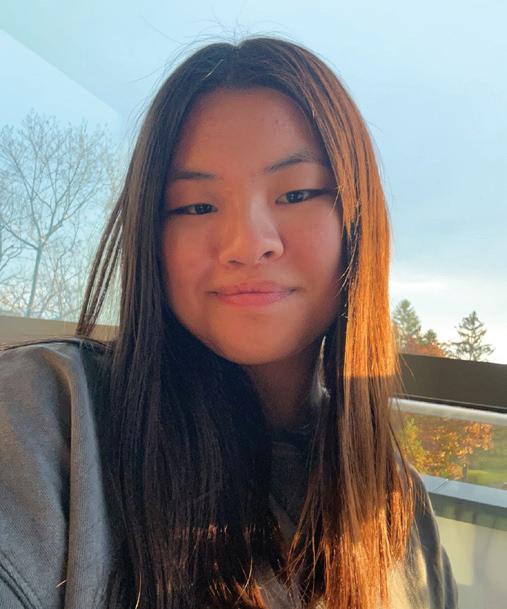



MICHAEL
CONNOR

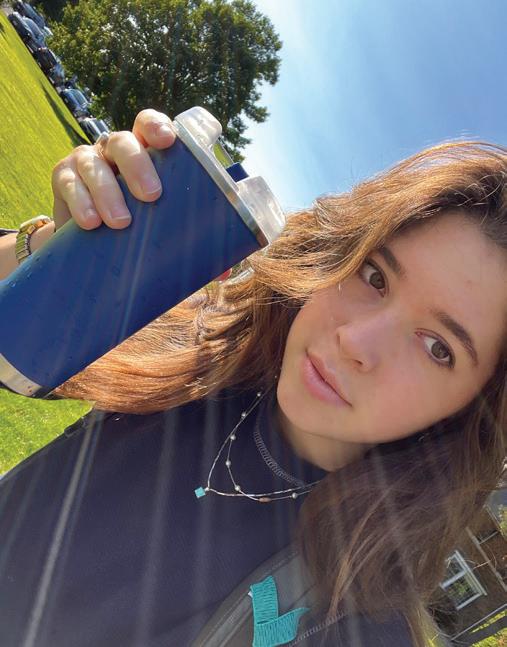
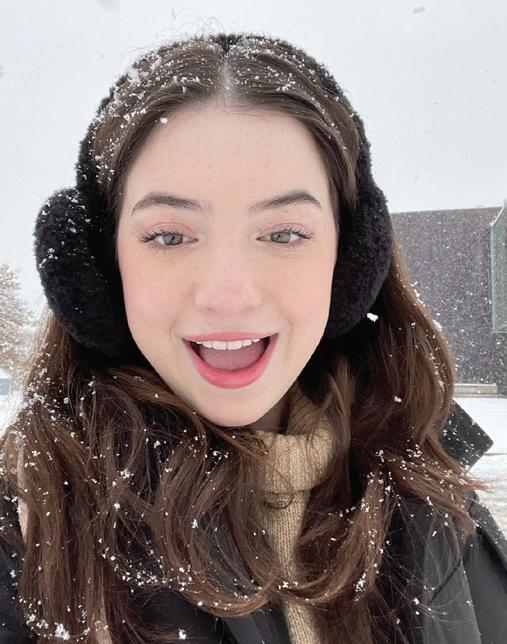


17 SPRING 2024
AND TELL
SHOW
ALYA MACDONALD ’25 Outside Woollcott House
GREG WINSTON ’26 Walking near the tennis courts at sunset
ANDREAS MATEJKA ’25
FELIX HALLORAN ’26 Doing research in a chemistry lab
ALEXANDER WEREMCHUK ’24 In McEwen Dining Hall
AMANDA SEDAKA ’25 Catching the season’s last snow
CLARA BENNETT-JONES ’27 In List Hall at a spot perfect for meeting up with friends to catch the sunset while eating dinner
STELLA O’BRIEN ’24 Working at the Oral Communication Center
MAX SPIELMAN ’25
JORDAN CHAN ’25 At the Taylor Science Center
JAZMINE FLORENCIO ’26 On an Adirondack rocking chair outside the Fillius Events Barn
IDALIZA PEREZ JIMENEZ ’27 In the Opportunity Programs’ Breland Center for Academic Success
ANDREW CASTLEN ’26
STEWART ’25
WHYNOTT ’25 At the Utica Curling Club
HANNAH JABLONS ’24 Working out at the Blood Fitness Center multipurpose room
A Ninth Planet or Modified Newtonian Dynamics?
MOND begins predicting distinct effects.
“The fact that MOND was going to tinker with the solar system was surprising to us. That’s why we thought it would be ruled out. It does a good job of explaining galaxies, but it can’t also explain the solar system. And that’s where we were wrong,” Brown says.
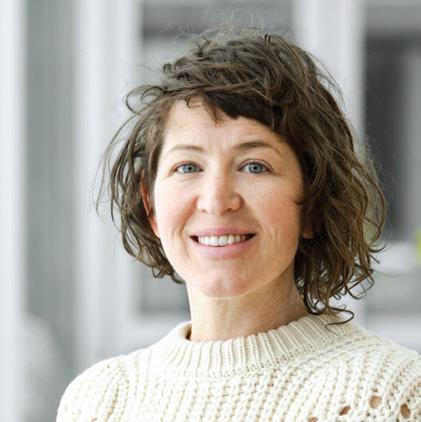
Brown realized the
odds with each other — the proof of one would negate the other.
“If MOND was shown to be correct, that would keep people up at night,” Brown says. “But for me, I’m wondering what’s the true law of gravity.”
Brown and Mathur’s findings will help keep MOND alive for now — another correct prediction in a sea of them. But it will take far more to either prove or disprove MOND. The investigation continues, leaving us to wonder still what is out there in — Holly Mirales ’26

Subcommittee ‘Woke-Up’ Call
of his 2021 book
Robert E. Lee and Me: A Southerner’s Reckoning with the Myth of the Lost and his appointment to the U.S. Naming Commission, Visiting Professor of History and Executive Director of Common Ground Ty Seidule has been in high demand for comment by national media. However on Jan. 11, the retired Army brigadier general had the opportunity to speak to a different audience when he addressed a subpanel of the U.S. House of Representatives Oversight and Accountability Committee in a hearing titled “Risks of Progressive Ideologies in the U.S. Military.”
The two-hour session was conducted by Republican U.S. House lawmakers to examine the possibility that “wokeness” impedes military readiness and effectiveness. Topics ranged from armed forces recruitment, to benefits for military families, to repeal of “Don’t Ask, Don’t Tell.”
The subcommittee’s invited witnesses told the panel that recent DEI policies and
FIELD WORK
F AR OUT IN THE
Francesca Lanni in the field with one of her research assistants.
alleged quotas are the reasons the military’s recruitment numbers are lagging, down some 39% since a recent peak in 1987, according to the nonprofit USAFacts.
Subcommittee member Robert Garcia, a Democrat, disagreed, telling the panel that data and evidence indicate such issues as sexual assault, mental health care, and affordable child care are the real factors that affect military recruitment, retention, and readiness.
For his part, Seidule tapped his experience as a longtime history professor at West Point. He outlined events that transpired following President Harry Truman’s 1948 order for military desegregation, noting that changes did not occur until Congress demanded them in the 1970s. By 1971, “race relations were at its nadir and drug use at its peak. The armed forces were wrecked and unable to defend the nation,” Seidule told the panel.
The U.S. military has become more effective due to social change precipitated by Congress over the next several decades as gender barriers fell and legally protected classes expanded, Seidule explained. “The military has been working on diversity for a long time because it works,” he said. n
No Spice for These Mice
ARECENT PUBLICATION based on the senior thesis of Francesca Lanni ’22 revealed that, much like many humans, mice cannot take the heat — at least when it comes to their seeds.
Seed germination is a prominent issue in forestry and ecology, playing a critical role in forest generation. Yet the large appetites of little critters give seeds a narrow time window to sprout. Traditional deterrence methods like fencing and trapping are

not reliable, inspiring research into chemical defenses.
Lanni worked with Associate Professor of Biology Peter Guiden on her thesis project and initially expressed interest in the College’s green spaces.
“A few days after that first meeting, I got an email from Professor Guiden. Funny enough, he had made a pizza the night before and had added chili flakes on top, a topping that might deter spice-averse people from eating the pizza,” Lanni recalls. “And if that was true for humans, then couldn’t that maybe also be true for other mammals? Like the mice and voles of the Hamilton campus?”
That idea bloomed into a full-blown project. Native plant chemical defenses for seeds had been studied before, but never in Northeastern forests. Lanni focused on testing the novel capsaicin defense to American beech seeds — and it worked. In her two trials, she found that spicy seeds were eaten at a lower rate than control seeds over fall, winter, and spring.
After graduation, Lanni and Guiden collaborated with John Orrock of the
University of Wisconsin-Madison and Brian Connolly of Gonzaga University to synthesize Lanni’s results with Connolly and Orrock’s similar study. The resulting paper, “Seed coatings containing capsaicin reduce seed removal in temperate woody species,” was published recently in the Canadian Journal of Forest Research
“Together, the studies provide the first evidence that coating seeds in capsaicin protects seeds in our ecosystem,” Guiden says. “This work provides land managers interested in reforestation with a new tool to bolster forest regeneration, which continues to be our most important approach to fighting the climate crisis.”
On her publication, Lanni says, “To know that I have contributed to the body of knowledge for others, with a first author paper coming out of undergrad, is a very surreal feeling for me.”
As she prepares to take the MCAT exam, Lanni expressed gratitude for the skills she learned at Hamilton and hope for her future, where she aims to combine her dual interests in scholarship and service. n — Holly Mirales ’26
FIELD WORK 19 SPRING 2024

‘Being a Refugee is Not a Choice’
THE JOURNEY BEGINS into an unknown. Economic, political, social, and environmental crises force people to leave their countries, their homes. This is a journey of hope in search of a better life. Refugees on the move … displaced and dispossessed …
This is a journey from which there is no return. A one-way trip. The memory of home becomes blurred. The long journey begins with hopes and dreams that all fit into a small bag. This is the story of being a refugee … this is the story of being on the move ….
How many are lost on this journey? With hopes in the palms of hands, all attempt to reach another land or a shore. How many have disappeared in the rough waters of the Aegean or the Mediterranean? This is a human tragedy. This is the tragedy of our time. It is our tragedy as well.
WITH THOSE WORDS, Professor of Economics Erol Balkan introduces “Displaced and Dispossessed,” a collection of photographs he has taken of Syrian refugees at their camps in Turkey. He has spent the past few years sharing his images with the goal of raising not only awareness, but also funds to purchase school supplies for refugee children.
Between 2017 and 2020, Balkan has made multiple visits to Turkey where he spends a few days at various camps meeting
with families, most of whom include farm workers. The conditions are anything but welcoming. Temperatures often reach 110 degrees, and resources such as clean water can often be scarce.
“Since I keep going back to the same camps, people get to know me. Every time I visit, kids will come and hug me,” he says. “Children are children. They laugh, they smile, they are not aware of what is happening to them. The innocence in their eyes even under these conditions is breathtaking.”
Balkan has spent 37 years teaching economics at Hamilton. An expert on economic development, international finance, and the political economy of the Middle East, he has received multiple grants for his research and teaching awards. Outside of his academic interests, Balkan has always had a passion for the arts. As an undergraduate he studied photography and film in addition to economics.
Now, with retirement on the horizon, Balkan continues to focus on improving the lives of immigrants and refugees around the world and in the local area. “After many, many years, I got back to [photography] because the most powerful way of showing human drama is through pictures; [it’s] so much more powerful than all the pages I could write,” he says.
While most of his work takes place in Turkey, Balkan spent December of 2022 in Oaxaca, Mexico, at an albergue, one of many centers located throughout the country that provides temporary accommodations for asylum-seeking migrants on their way to the U.S. Some have walked hundreds of miles to get there — often with children — from Venezuela, Columbia, Honduras, El Salvador, Guatemala, or other points south.
HAMILTON 20
Each day as many as 1,000 migrants arrive in Oaxaca, yet the albergue has only 150 beds. Migrants who are admitted stay only a night or two before continuing north.
Camera in tow, Balkan met with the migrants and explained why he was there — to raise money for water, which the albergue must have delivered each month by tanker truck. Like “Displaced and Dispossessed,” he assembled images from Mexico into an exhibit titled “Look Into My Eyes: Migrants on the Move.”
In 2022, Balkan co-edited Refugees on the Move: Crisis and Response in Turkey and Europe, a book that explores the complexities of current refugee issues such as the causes of the movement of refugee populations, the struggles faced during their journeys, and host governments’ attempts to manage and overcome the so-called “refugee crisis.”
Closer to home he serves on the board for Utica’s OnPoint for College, an organization that helps displaced students overcome the barriers to higher education. He and Professor of Sociology Steve Ellingson are working with Hamilton students on a survey project, “The Impact of the Pandemic on Local Refugee Communities: Health and Well-being, Employment, and Education.”
Balkan plans to return to Turkey in June. He is hoping to partner with refugee authors on a book to be titled Displaced and Dispossessed: Stories and Photographs from the Border.
“The idea is not an attempt to solve the problem. It is to improve the lives of a couple of these kids with the hope that they will get out of the situation one day,” he says. “At least [in Turkey] they have shelter, access to health care, and education. Their situation is not ideal, but you know, it is what it is— what they have for the moment.” n
— Stacey Himmelberger
P’15’22
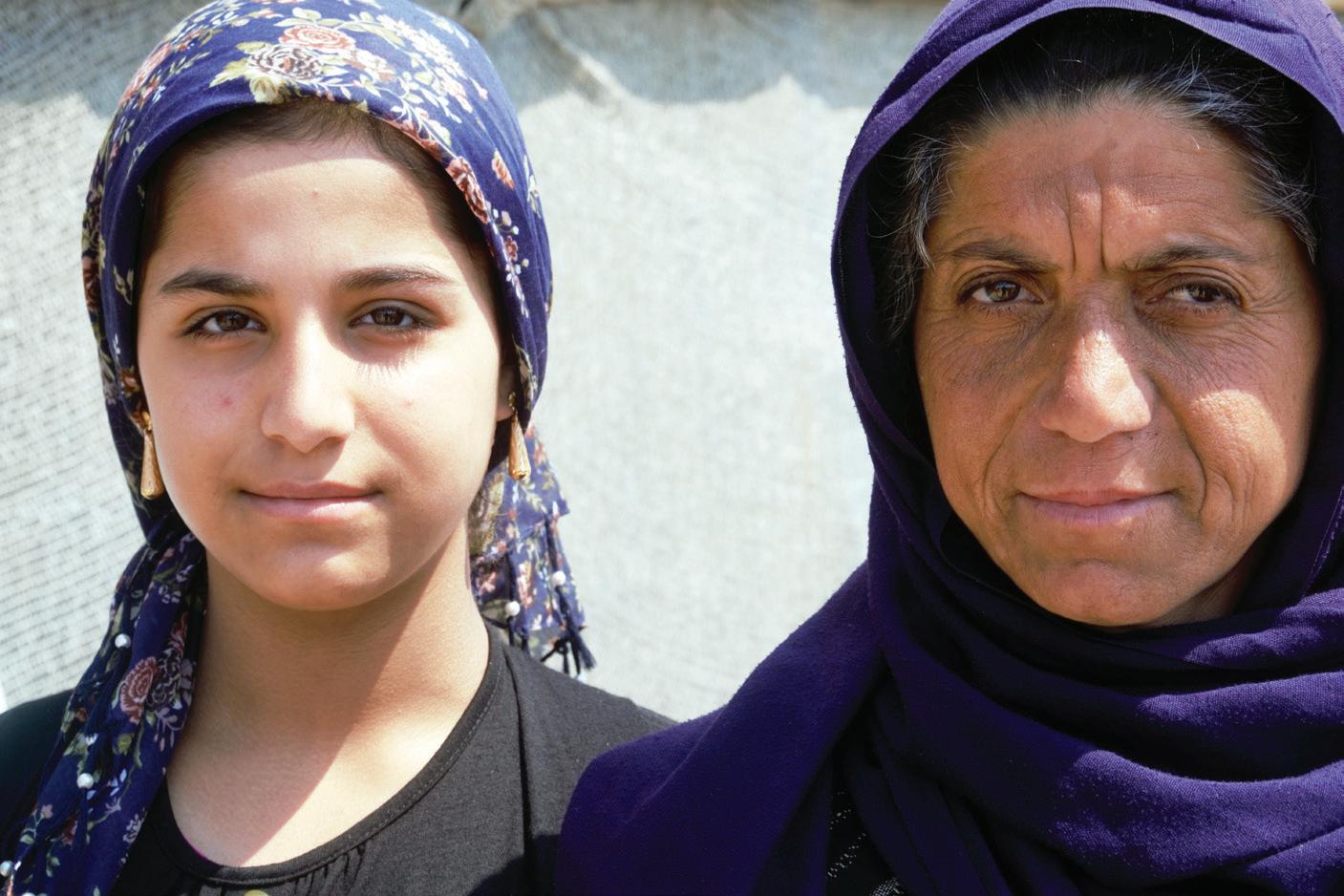

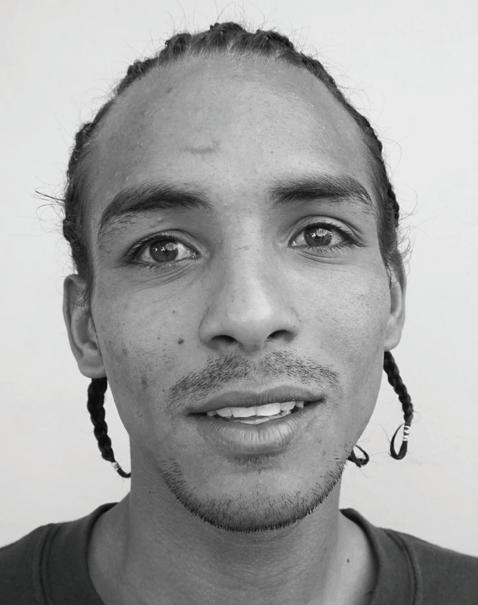

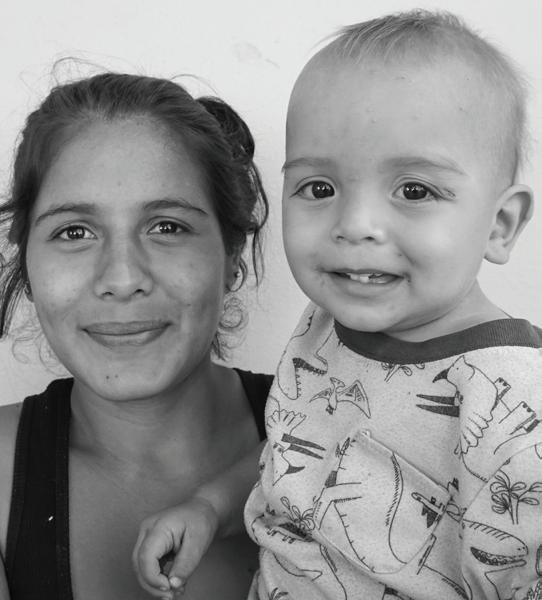

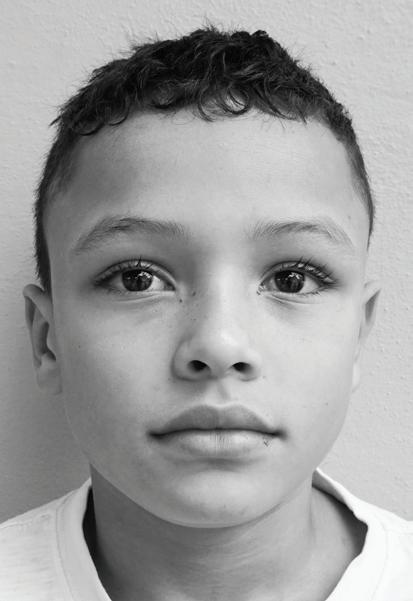
FIELD WORK 21 SPRING 2024
Examples of Balkan’s photography: A mother and daughter at a Syrian refugee camp in Turkey. (Below): A series of portraits of migrants in Mexico.
Professor Erol Balkan with Syrian children at a refugee camp in Turkey.
THE BIG PICTURE


Pooling Their Talents
MEMBERS OF HAMILTON’S swimming and diving team begin each meet with a ritual. According to All-American swimmer Jade Matthias ’26, “The cheer starts with everyone swaying left to right in unison while saying ‘Aaaahhhh’ progressively louder, and then we spell out Hamilton with the seniors saying a letter and the rest of the team repeating it. Following this the seniors say ‘Aaron Burr,’ everyone else says ‘Lucky Shot , ’ and then, all together, ‘Hamilton, Hamilton, Blue, Blue, Blue.’”
Whatever the tradition, it seems to work. Team scores on Nov. 19 when this shot was taken: Hamilton 163, Colby 136; Hamilton 168, Trinity 131.
PHOTO BY JOSH MCKEE
Expanding Frontiers: The Life of Philemon Bliss

fter President James Buchanan signed the 1861 legislation creating the Dakota Territory, he left it to his successor, Abraham Lincoln, to appoint territorial leaders. Chosen as the inaugural chief justice of the Supreme Court of the Dakota Territory was Philemon Bliss, a jurist, abolitionist congressman, and Hamilton alumnus, Class of 1832.
Born on July 28, 1813, in North Canton, Conn., Bliss was the second son of Asahel and Lydia Griswold Bliss. His father, a teacher and farmer, was a descendant of the original Puritans from England; his mother’s English ancestors were among the first settlers. In 1821, the family moved to a farm in Whitestown, N.Y., from where Bliss enrolled at the Oneida Institute and later Hamilton College.
He spent a year studying at a local law office before health issues prompted him to trade the harsh Central New York weather for warmer climes. It wasn’t long, however, before the aspiring lawyer returned north, this time to Ohio, where he worked as a surveyor, teacher, and clerk while finishing his legal studies.
Bliss was admitted to the bar in 1838 and entered into a law practice with his brother, A.A. Bliss, in Elyria, Ohio. Two years later, he married Martha Sharp. He continued the practice of law until 1848, when he was elected by the Ohio legislature
to serve as the presiding judge for the 14th judicial circuit of the state.
According to the Dictionary of American Biography Volume II, Bliss was elected to Congress in 1854 and again in 1856. The publication notes: “Of Federalist and Whig antecedents, he had campaigned actively for Clay in 1844, but his pronounced anti-slavery views carried him into the Free-Soil party in 1848 and later into the Republican. His dislike of controversy and his weak voice — he struggled all his life against bronchial and pulmonary weakness — unfitted him for debate, but his set speeches are able statements of the advanced anti-slavery, anti-state-sovereignty views.”
As one example, Bliss demolished, quite adroitly, the legal arguments for slavery in “Complaints of the Extensionists—Their Falsity,” remarks he presented before the House of Representatives on May 21, 1856:
“So far as law is concerned, the very demand [to perpetuate slavery into Kansas] is a claim for superiority, and not equality. The extension of the law of Slavery would subvert its opposite, and give it a superiority under pretence of equality; for the law that enslaves a man, and the law which protects him, cannot co-exist.”
In 1861, this time enticed by a drier climate, Bliss accepted Lincoln’s call to become the first chief justice of the new Dakota Territory, which included the present states of North Dakota and South Dakota, as well as much of Montana and Wyoming. The president was likely aware of Bliss’ professional qualifications and his views on slavery as Bliss was a close friend of Lincoln’s secretary of the treasury, Salmon P. Chase.
According to a 2022 article in the Minot (N.D.) Daily News, Bliss had also served as mentor to John Mercer Langston,
HILL IN HISTORY HAMILTON 24
Philemon Bliss (circa 1859)
James Earle McClees (American, 1821-87), Julian Vannerson (American, 1827-75)
HILL IN
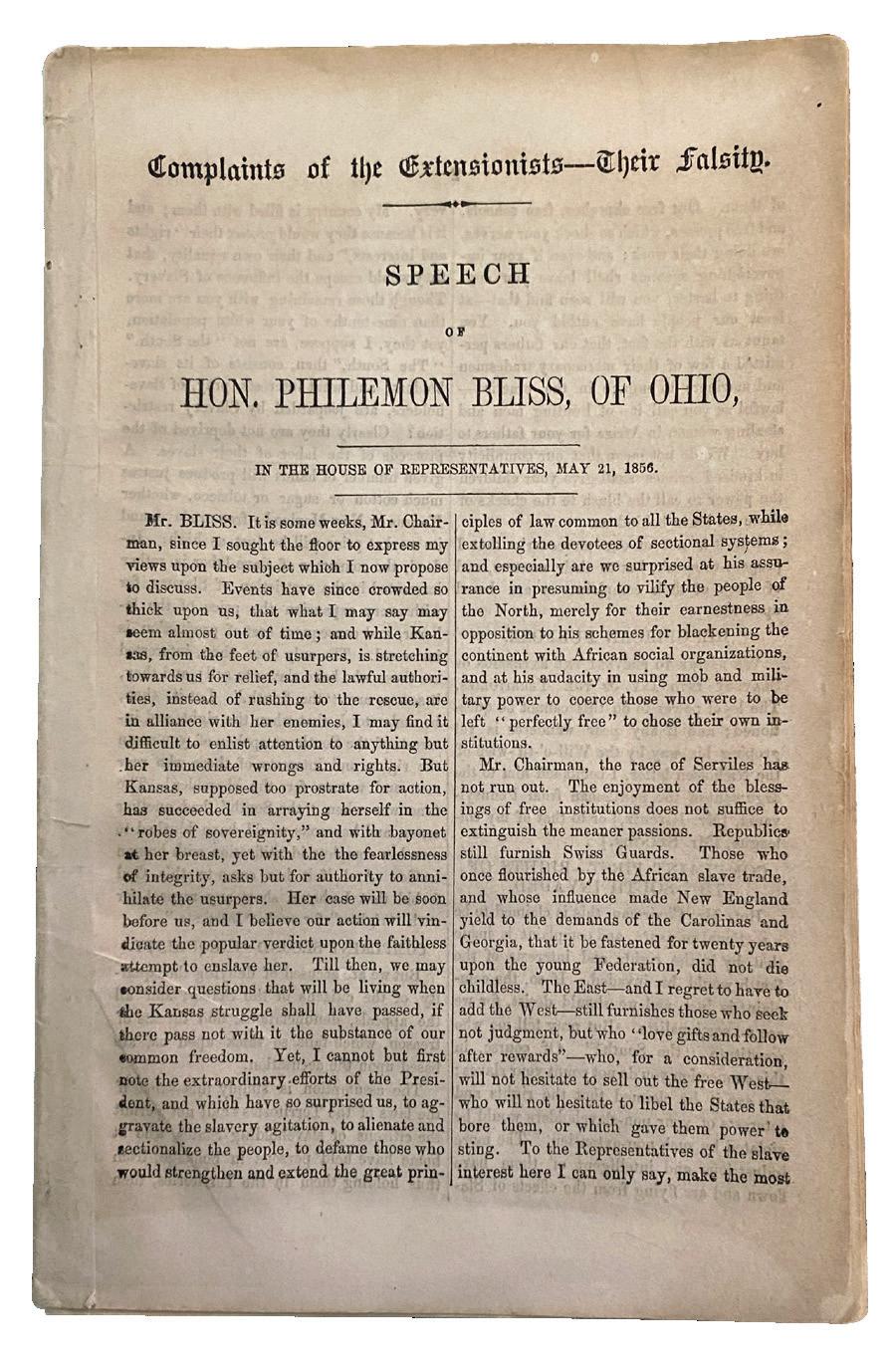
who would become Ohio’s first Black lawyer. “Langston, the son of a Virginia plantation owner and an emancipated slave, had ambitions to become a lawyer,” the paper notes. “But because of his skin color, Langston’s applications to law school had been rejected. Rather than give up, Langston turned to the sympathetic Philemon Bliss, who agreed to tutor him in 1853.”
Langston passed the bar the following year and would spend his life active in the abolitionist movement. During the Civil War, he enlisted hundreds of Black Americans to fight for the Union Army and later championed their right to vote. In 1890, he became the first Black Virginian to serve in Congress. Langston practiced law until his death in 1897, and his great-nephew became one of the nation’s best-known poets, Langston Hughes.
Although Bliss’ health gradually improved during his time spent living on the plains, he was less than satisfied with his new career, finding the Supreme
Court had little appellate business. Determined to find a more satisfying endeavor, in 1864 he moved his family to St. Joseph, Mo., and worked as a probate judge. In 1868, he was elected to the bench of the Supreme Court of Missouri, drawing a four-year term on the Radical or Republican ticket and, according to the Dictionary of American Biography, “won the respect and confidence of all parties in a time of great political bitterness.”
Eventually the dominance of the Democratic party ended Bliss’ political ambitions, and, in 1872, he turned his attention to academia. Having served for several years on the board of curators of the State University of Missouri, he was asked to accept an appointment as professor and the first dean of the new law department. For the next 17 years, he lent his leadership and expertise developing innovative pedagogy and building a curriculum and faculty.
Bliss is quoted in a Hamilton alumni publication as saying, “The Law Faculty are more and more satisfied that the highest results cannot be reached by lectures alone, however, clear and thorough they may be, but that the student should, as far as possible, be required to study the textbooks and be subject to a daily examination upon their contents, accompanied by oral explanations by the teacher. This is the only way the subject can be fastened in his memory, and the only way to secure the formation of proper habits of study.”
While at the law school, Bliss continued to publish legal theories. He wrote Of Sovereignty (1885) and A Treatise upon the Law of Pleading (1878), both of which were highly regarded and widely read. In the former, he argues that the term “sovereignty” had lost its meaning and can only be based on justice and reason:
“We are loudly told that the people are sovereign; and its abstract, “the sovereignty of the people,” is everywhere shouted. But it is a phrase of indefinite import, for we do not know whether it means that the body of the people are sovereign, or only those holding the franchise; nor are we always told how this sovereignty may be shown, whether lawfully, or by revolution. Or the phrase may indicate nothing more than the abstract attribute as belonging to human societies, — that in some form they must exercise the law-giving power. As a phrase of definite meaning it is only another way of saying that in a given society the government is democratic as opposed to monarchical, in which the king is called the sovereign.”
Bliss died on Aug. 24, 1889, in St. Paul, Minn., where he was spending the summer. He was survived by his wife and three children.
“While a man of decided convictions and unquestioned intellectual courage — he was a lifelong Republican in a state and community intensely Democratic — he had an essentially judicial and peaceful temperament,” notes the Dictionary of American Biography. “In spite of his lifelong struggle against physical weakness and his retiring disposition, he gave a great and well recognized service in the training of the post-bellum generation of lawyers, and in the restoration and advancement of the standards of the legal profession in Missouri.” n
— Compiled by Stacey Himmelberger P’15,’22 with background information from the The Hamilton Literary Monthly (March 1890); Missouri Courts Judicial Branch of Government: Philemon Bliss (courts.mo.gov); and Mississippi Today, On This Day, April 2, 1855 (mississippitoday.org).
25 SPRING 2024
HISTORY

Brian Hansen has served as Hamilton’s director of Environmental Protection, Safety & Sustainability since October 2000. He oversees the College’s various obligations with regard to environmental compliance and occupational health and safety.
Students, Collaboration, and Change
BY BRIAN HANSEN Director of Environmental Protection, Safety & Sustainability
Those who know me know that I love to tell stories, so let me tell you one of my favorites. Two summers ago, Environmental Health and Safety Specialist Sara Soika and I had the pleasure of mentoring a handful of students — our summer sustainability interns — who quite literally changed the landscape on College Hill.
The initial idea came from one of the interns, Ellie Sangree ’24. She knew there had to be a way to make Hamilton’s landscape maintenance practices more sustainable. That year, our interns spent most of their time researching and developing a course of action to better define, delineate, and implement naturalized landscape features on campus.
This meant getting a clear understanding of how our Facilities Management team categorizes campus land based on landscaping and maintenance needs. They focused on areas designated as the lowest priority level (such as no- and low-mow zones) and proposed redefining the plots into five subcategories known as Green Attributes: no-mow zones, reforestation plots, wetlands and drainage sites, lowmow zones, and pollinator habitats.
Impressive, right? That’s just the beginning. The students conducted more than 100 in-person land surveys, hosted stakeholder meetings with administrative and academic departments (including Environmental Science
and Biology) to better understand ways they use the different areas of campus lands in their teaching, and partnered with members of the Geosciences Department to create accessible and interactive multi-layered GIS maps of the areas they evaluated.
The interns worked with Facilities Management to document what is required to maintain each landscape feature so it could be integrated efficiently into maintenance plans moving forward. Not only was this program fully implemented by the fall 2023 semester, it’s gaining steam and expanding by way of Facilities Management teammates themselves.
This initiative, known as the Green Attributes Project, is a classic example of true collaboration. By meeting with different parties, gathering information, distilling it, making recommendations, gathering
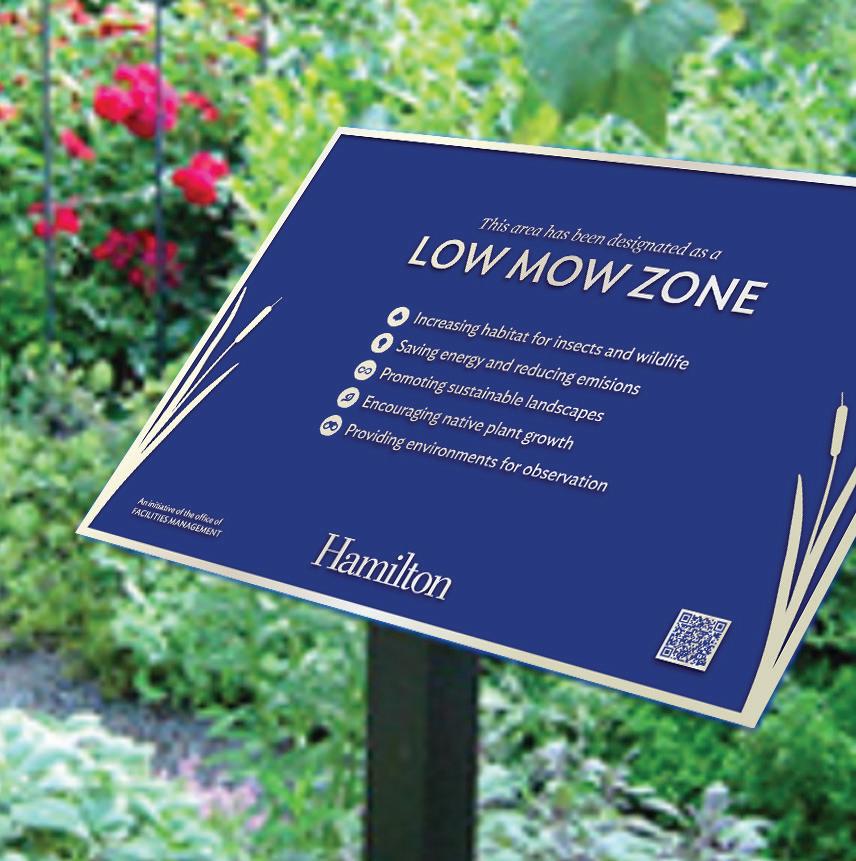
VOICES VIEW FROM COLLEGE HILL HAMILTON 26
Signs installed along high-trafficked parts of campus highlight the new landscape practices of the Green Attributes Project.
NANCY L. FORD
Scan for more about Hamilton’s Sustainability commitments. H
When I
step back and think about the learning opportunities our sustainability initiatives offer Hamilton students, I’m proud that we get to model the kind of collaborative environment that is necessary to bring about change here on the Hill.
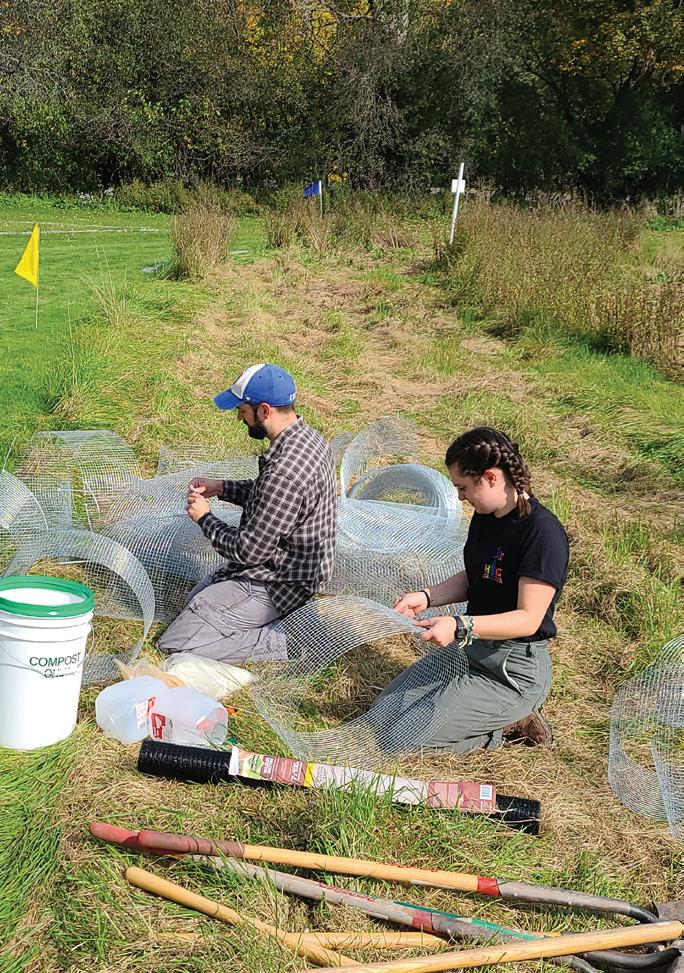
more feedback, and refining their plans before full implementation, the students checked all the boxes for a model experiential learning opportunity. This is a project that helps Hamilton today and will continue to do so for decades to come. It’s also the exact kind of experience that Sara and I have wanted each student I’ve worked with over the last 20 years to have. In everything we do, we have wanted them to see what’s possible when you bring really smart people together to work on solving problems.
Since 2019, our student sustainability leaders (known as Hamilton Sustainability Coordinators) have been working with a wide range of faculty, staff, administrators, and trustees. In April of 2023, this culminated in Hamilton’s Sustainability Commitments — three comprehensive plans that outline how Hamilton will reduce its carbon footprint and achieve carbon neutrality by 2030. Our students didn’t sit on the sidelines and watch as others debated strategies and tactics top-down. In many instances, they drove conversations
and redirected our energies. They offered invaluable insights we likely never would have considered. These plans are stronger because students were at the table and because everyone else saw and treated them as equal partners.
Let’s be honest: collaboration isn’t easy. While people often strive to collaborate, any number of professional instincts and interpersonal dynamics can shift to something that more closely resembles cooperation. Collaboration can sometimes elicit discomfort because it forces us to stretch ourselves and grow as we set aside our perspectives to make room for others’ in order to facilitate progress and change that benefits the greater good. The amount of trust and respect that must exist among a group in order for that to happen in an authentic way, where everyone knows their voice matters and their ideas are valued, even if people may disagree with it, is rare. And yet, we make sure it’s happening here — among students, faculty, staff, and leadership — every day.
When I step back and think about the learning opportunities our sustainability initiatives offer Hamilton students, I’m proud that we get to model the kind of collaborative environment that is necessary to bring about change here on the Hill. I’m even prouder knowing they will take what they learn and facilitate change within organizations and throughout communities as Hamilton graduates, not only by sharing their knowledge about sustainability, but by being thoughtful leaders and people who understand great ideas get even better when you involve others and are willing to listen and learn. n

27 SPRING 2024
FROM COLLEGE HILL
VIEW
Students collect soil cores for carbon analysis from agricultural lands on campus.
Student/faculty research collaboration in one of the reforestation plots.
How to Beat Public Speaking Anxiety
As founder of BostonSpeaks — and a Harvard Business School public speaking coach and three-time TEDx speaker coach — Kit Pang ’10 has helped everyone from Fortune 500 CEOs to NFL players to 3-Star Michelin chefs learn to communicate with confidence and influence. After getting his start in public speaking thanks to Hamilton’s Public Speaking Competition, he returned to College Hill in January to share advice with students through the Oral Communication Center. Here, he shares insights that may be helpful the next time you find yourself in front of an audience.
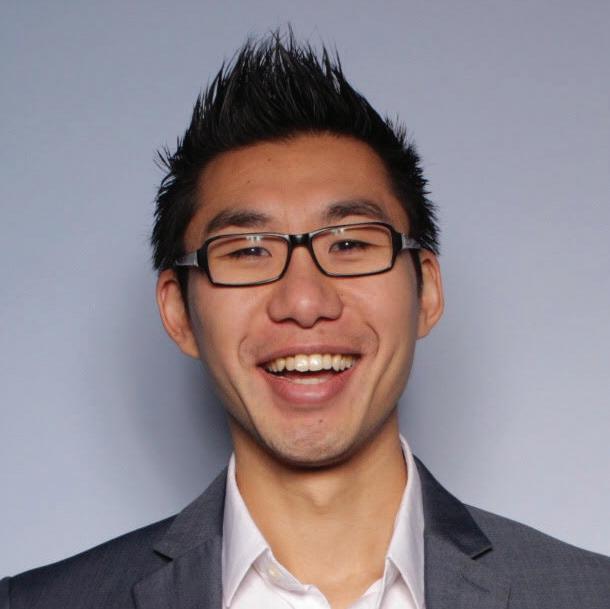
How do you overcome public speaking anxiety?
1
Address the reasons, beliefs, and thoughts that cause you to feel the anxiety in the first place. Most people resort to practicing more, getting more speaking reps in, and learning more skills — but does that really address what caused the anxiety in the first place?
2 What if you have to speak off the cuff?
Use the PREP Method to sound clear, concise, and compelling:
Point: State your point or your opinion.
Reason: Explain the reason why you believe this point to be true.
Example: Provide an example or evidence to support your reason.
Point: Wrap it up with your point again to reinforce your message.
3 What are the most common speech skepticisms holding a speaker back?
Skepticism: It’s bad to feel nervous, awkward, or uncomfortable.
Truth: I don’t need to escape out of discomfort. It’s okay to stay with these feelings.
Skepticism: Lack of audience engagement is always the speaker’s fault.
Truth: Audience engagement can be influenced by many factors, including the audience’s interest in the topic, the setting, or the time of day.
Skepticism: Spontaneous speaking lacks depth and value if I don’t prepare.
Truth: Spontaneity can lead to genuine insights as you adapt to what’s going on.
4 What three things are most important about public speaking?
• People don’t care about how much you know until they know about how much you care.
• Instead of seeking comments such as, “Wow, you’re such a good speaker,” seek out comments such as, “Wow, how did you know how I was thinking and feeling?”
• Speak to include, not to impress.
ASK THE EXPERT HAMILTON 28
Watch our video to learn more from Kit. H
There is something special on the Hill. We all arrive as strangers and manage to find our people.
Jacke Jones, who recently moved from executive assistant in the President’s Office to a new role at Hamilton — director of alumni and parent relations.
Professor of Literature and Creative Writing Doran Larson in the Feb. 1 Spectator talking about his new book, Inside Knowledge: Incarcerated People on the Failures of the American Prison.
It is about punishment. It is about vengeance. Also it’s about sustaining one of the largest employment sectors in the country because the system has gotten so large.
Everyone was coming into this with an appreciation for Taylor Swift, but also wanting to [talk about] their analysis and criticism. It felt like a very productive space, since it was able to do both.
Madison Lazenby ’23 in the Dec. 26, 2023, Washington Post article “After This Year, We’re All Majoring in Taylor Swift.” Lazenby was one of 30 people chosen to present at Taylor Swift: The Conference Era, an academic assembly held last fall at Indiana University to study the singer’s musical, cultural, and societal impacts.
If Vladimir Putin is drawing lessons from the decades-long Armenian-Azerbaijani conflict over Nagorno-Karabakh, then we should expect the war to continue unabated at least through 2024.
Assistant Professor of Government David Rivera in the Dec. 28, 2023, Newsweek article “Will Ukraine War End in 2024? Experts Weigh In.”
John Nichols ’62 in his 2022 memoir, discussing his novel
The Milagro Beanfield War (1974). That book was made into a movie directed by Paul Newman. Nichols’ first novel, The Sterile Cuckoo, also was adapted for the big screen and filmed on College Hill. The author died on Nov. 27, 2023.
New Mexico’s sense of humor, its history and cultures, as well as its poverty and inequalities affected each sentence I crafted. The novel’s attitude and style had been with me since childhood.
29 SPRING 2024
QUOTABLES


 by Michael J. Debraggio P’07
by Michael J. Debraggio P’07

hat’s how David Wippman characterizes the educational experience offered on College Hill. It’s also a fitting way to describe his tenure as president — one that saw Hamilton not only survive but thrive during a global pandemic, introduce new academic areas of study, launch innovative programs to encourage dialogue and enhance advising, unveil new and renovated buildings, and successfully complete the largest fundraising effort in the College’s history.
Eight years ago, Maureen Nolan and Mike Debraggio from Hamilton’s Communications Office visited Wippman at the University of Minnesota Law School where he was finishing up his work as dean. He had just been named Hamilton’s 20th president, and their conversation would introduce him to readers of Hamilton magazine.
As Wippman prepares to retire and leave his office in Buttrick Hall this June, he sat down once again with Debraggio to reflect on his time at the College.

HAMILTON 30
NANCY L. FORD
Interview
Mike Debraggio: Let’s start. Why was Hamilton the right place for you when you took the job as president eight years ago, and why is now the right time to retire?
David Wippman: You know, it’s funny. I said this on a podcast about “What’s Your Why” as to why I wanted to be a college president, and I’ll say a little bit more, specifically, why Hamilton. I’d been in higher education at that point for many years. I was committed to the field. But I always felt that the kind of liberal arts education — the kind of close, personal, engaged instruction that a place like Hamilton offers — was the gold standard.
I thought back on my own experience as an undergraduate, which was for me phenomenal. It taught me to think critically, to read texts carefully, to build, construct, and defend an argument. It introduced me to people who became lifelong friends. It opened me to all kinds of possibilities that I wouldn’t otherwise have considered; it was a transformative experience. I wanted to be able to help other people have that same kind of experience.
And then as I learned more about the College, I got more and more excited about it. … The students who were on the committee that did the interview [Phoebe Greenwald ’16 and Caleb Williamson ’17] were so impressive that I came away thinking, if that’s the caliber student that Hamilton attracts, that’s where I want to be.
MD: How about the other part of that question? Why is it the right time for you retire?
DW: That was a harder question for me. Part of it was just where I am in my own life. I turned 69 [in December]. I was at the point where I was starting to think about retirement, but I was also thinking about the life cycle of the institution. We were finishing the Because Hamilton campaign and approaching the point where we would need a new strategic plan. We had started work on a campus master plan that would feed into that new strategic plan, but it struck me
that this would then lead to another cycle in which we would be running another campaign built on that new strategic plan. And that would be a seven- to-10-year cycle. … I thought rather than stay a few more years, it would be better for me and for the College … to say, “Okay, I’m going to make this the point of retirement.”
MD: Thinking back again, what goals did you set for yourself and the College when you took office? Tell me about some you achieved and others that you might not have.
DW: The thing that struck me very keenly as I was doing the interview process was that this was not a fixer-upper. Hamilton was not only in good shape; it was on an incredible upward trajectory, and it had been for many years.
I attribute that to lots of things — to the dedication of the alumni and the Board of Trustees, the hard work of faculty and staff over many years, and, in particular, to my predecessors as president [Joan Hinde Stewart and Gene Tobin], who I think had done an incredible job. For me it wasn’t a situation where you need to turn something around [or fix] something that was broken. It was really how do we continue that upward trajectory? How do we set goals for the future? That was part of what the strategic planning process was. It identified a number of things that we’ve continued to work on. One was the idea of Digital Hamilton, [addressing] the increasing influence of technology and data, and all the things that machine learning and artificial intelligence make possible. We wanted to make sure that not only were our students prepared for that kind of future, but that the College itself and its business operations were using technology efficiently.
We wanted to make progress around diversity, equity, and inclusion. We wanted to build out the experiential learning opportunities for our students and improve
advising, which generated the ALEX program, among other things. Those were some areas where I came in thinking here’s where we could make progress as an institution, and I think we have.
There are other things that emerged, and most prominent among them was the need to do more on student mental health. That was driven home very keenly in my first year when we lost a student to suicide, and that happened again in my second year. We’ve made an across-the-College effort to ramp up the support services that we provide for our students in ways where I now believe the College is best in class. It doesn’t mean we don’t still face great challenges in that area — every college and university does — but that’s an area where I think we’ve made transformative change.
MD: Somewhat related, in that issue of the magazine when we introduced you to the campus community, you described your career as a search for new challenges. I’m assuming you encountered a few of those during your presidency. What are some of the greatest challenges facing Hamilton and small liberal arts colleges in general?
DW: We just talked about student mental health. That’s a challenge that has grown enormously over the last 15 years and is continuing to accelerate. The pandemic exacerbated it, but [there are] all kinds of social trends that have aggravated that problem.
The pandemic, of course, was a challenge that none of us saw coming. That forced an incredible across-the-campus effort to adapt to a set of circumstances that really were extraordinarily challenging for us, but for which I’m very proud of how Hamilton responded.
There’s a demographic shift that’s happening, which has less impact on Hamilton than most institutions. We’re approaching the so-called demographic cliff in the
31 SPRING 2024
David Wippman in his first Hamilton photoshoot after becoming president in 2016.
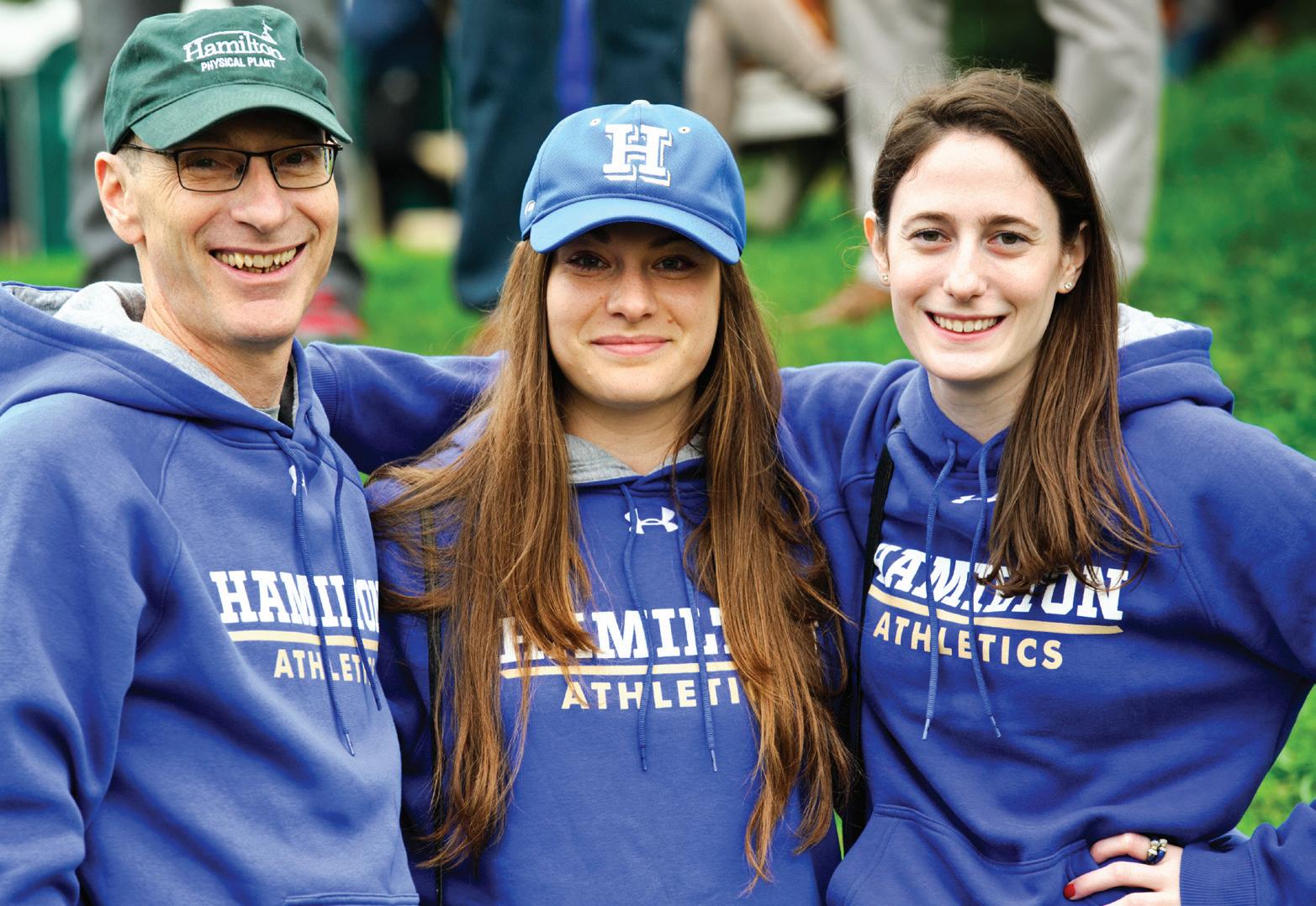
next year or so, where the number of students who are graduating from high school is starting to decline. This year, there was a slight uptick in enrollment nationally, but otherwise over 15 years or so, enrollment [will be] down probably 15 percent … and where there is growth in prospective student populations, it tends to be in the South and West of the country, not in our traditional catchment areas. We’re fortunate [that] Hamilton is still incredibly attractive. … The last four years we’ve had records in our number of applications, enrollment, in our yield, and our acceptance rate. And I think Hamilton will continue to attract many applicants into the future, but it’s a trend that affects liberal arts colleges.
Associated with that are the financial challenges of running an institution like this one. Again, we’re incredibly fortunate. We are a very well-endowed college relative to the vast majority of colleges and universities around the country. But even with that extraordinary endowment, even with the remarkable philanthropic support we get from our alumni every year, it’s challenging to put together the budget and balance all the things we’re trying to accomplish and that require spending at a significant level if you want to move forward. We want to build a new building [to serve as headquarters for digital innovation on campus]. We would like to add faculty. We’d like to offer additional student support services. All
A Wippman/Hamilton family affair as the president’s daughters, Brianna and Lauren, join him to cheer on the Continentals at Fallcoming 2016.
those things are expensive. There’s a limit to how much we can raise tuition, which as families know keeps going up significantly every year. Trying to balance those financial pressures is hard.
I’d say the biggest concern I have right now is the declining public confidence in higher education — and in liberal arts colleges in particular. … If you look at the survey data, only 36 percent of the public express either great or some confidence in higher education. That’s down from 57 percent in 2015. A majority of Americans now question whether a four-year college degree is worth the time and money. … It’s really a threat to the entire enterprise of education if we lose the public’s trust and confidence in what we’re doing. That crisis in confidence accelerated dramatically after October 7 [with] the perception that colleges and universities weren’t responding adequately to antisemitism on campus and to other challenges. That’s fed into a broader perception, particularly among critics on the right, that colleges and universities are too woke; they’re too progressive in their orientation. There’s a sense that we indoctrinate students, which I don’t think
A PRESIDENTIAL TIMELINE
Since beginning his tenure as Hamilton’s 20th president on July 2016, David Wippman has been guided by the College’s mission to “prepare students for lives of meaning, purpose, and active citizenship.” Here are just some of the milestone achievements over the past eight years.
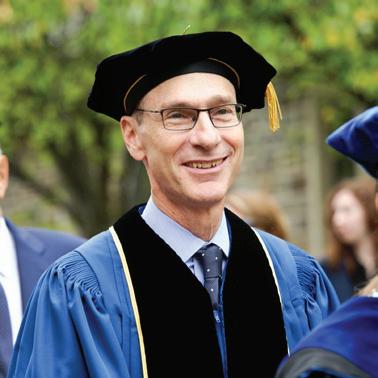
• Begins tenure as Hamilton’s 20th president on July 1
• Common Ground program launches, bringing nationally known experts to College Hill to discuss contemporary issues from different perspectives
• Tietje Family Tennis Center dedicated
HAMILTON 32
2016 2017
NANCY L. FORD
is accurate. And there are efforts in many states to eliminate DEI programs, which I think is based on a misunderstanding of what those programs contribute and what they really do.
But it’s part of the environment that we’re in. [T]here’s a lot of government intervention in affairs that were traditionally left to the discretion of faculty and administrators at colleges. In some states, there are restrictions on what you can teach around critical race theory, around American history; in some places, books are being banned. There are restrictions being imposed on tenure in some states. This is at public institutions. But even in a blue state like New York, we have concerns about some of the things that are underway. The governor’s current proposed budget would eliminate Bundy Aid for schools with endowments over $750 million. [That] would eliminate our ability to tap Bundy Aid and cost us [$142,000] a year.
There’s a lot of government intervention that [has] either already happened or that is being considered, all of which could really hamper us. But the bigger and underlying concern is if we lose public confidence

• Henry W. Harding Field House opens
• “Connected Hamilton” Strategic Plan adopted with an emphasis on enhancing digital learning opportunities using advanced technologies across disciplines; student advising; and diversity, equity, and inclusion throughout campus

in higher education; that’s really going to undermine what we do.
MD: You mentioned statistics about public confidence declining. Why should the public or the legislatures be confident that what we’re doing here is right, or that higher education, in general, should be supported?
DW: I’ll speak first for Hamilton and then a little bit more broadly about higher education. For Hamilton, I say the proof is in the pudding. Look at the students we’re attracting; look at the students we’re graduating; look at the remarkable successes that they’re having in their careers, the change they’re making in the industries that they

• Joel and Elizabeth Johnson Center for Health and Wellness dedicated
• Hamilton’s endowment market value tops $1 billion
Entering his second home, the President’s Office in Buttrick Hall.
work in. They’re doing incredibly well. We have extraordinarily high employment rates postgraduation, and our graduates are doing amazing things. They’re serving at high levels of government, in the private sector, in nonprofits. We try to prepare our students for lives of meaning, purpose, and active citizenship, and [when] you look at what they’re doing, you’ll see we’re successful in that.
Much of the criticism of higher education is premised on the notion that really what we should be doing [is offering] job-training programs. There is, in my mind, an unhealthy and mistaken focus on return on investment, narrowly understood to mean economic return. You’ll see that in some of the legislation that’s being proposed. And this is a bipartisan focus — both Democrats and Republicans are focused on that.
I worry that … focus … ignores all the non-pecuniary benefits of higher education, which I think are the most important reasons someone should come to a place like Hamilton. It’s the real value of liberal arts. … [I]t cultivates aesthetic appreciation; it cultivates critical thinking; it cultivates your interest in history and government and

• Bob Simon Golf Center dedicated
• Wippman co-authors the first of more than 50 op-eds published during his presidency on issues pertaining to higher education; he also is named to the Advisory Council of Refugees International
33 SPRING 2024
2018
2019
NANCY L. FORD
prepares you to be a better citizen. If you look at the data, it’s very clear that college graduates, on average, earn more, they live longer, they pay more in taxes, they contribute more to their communities, and they make better decisions around marriage, health, and parenting. I mean in almost every regard, they are better off. I think that’s priceless, and it’s getting lost in the public discussion.
MD: As I’m sitting here talking with you, the focus is on Hamilton and yet your responses are always broadened to society and the impact to society. And you’ve been writing a lot about the issues facing higher education. Why is it important to be a public voice, a public intellectual if you will?
DW: That’s one of the reasons I was interested in becoming a college president. I care about education. I think it’s fundamental to our success as a country and as a society, both in terms of our ability to contribute meaningfully as citizens … but also in terms of the research discoveries that we make in higher education.

• Protocols adopted to protect the campus community from COVID-19, allowing Hamilton to operate safely and students to remain on schedule for graduation (continues through 2022)
• New academic minor added in Statistics
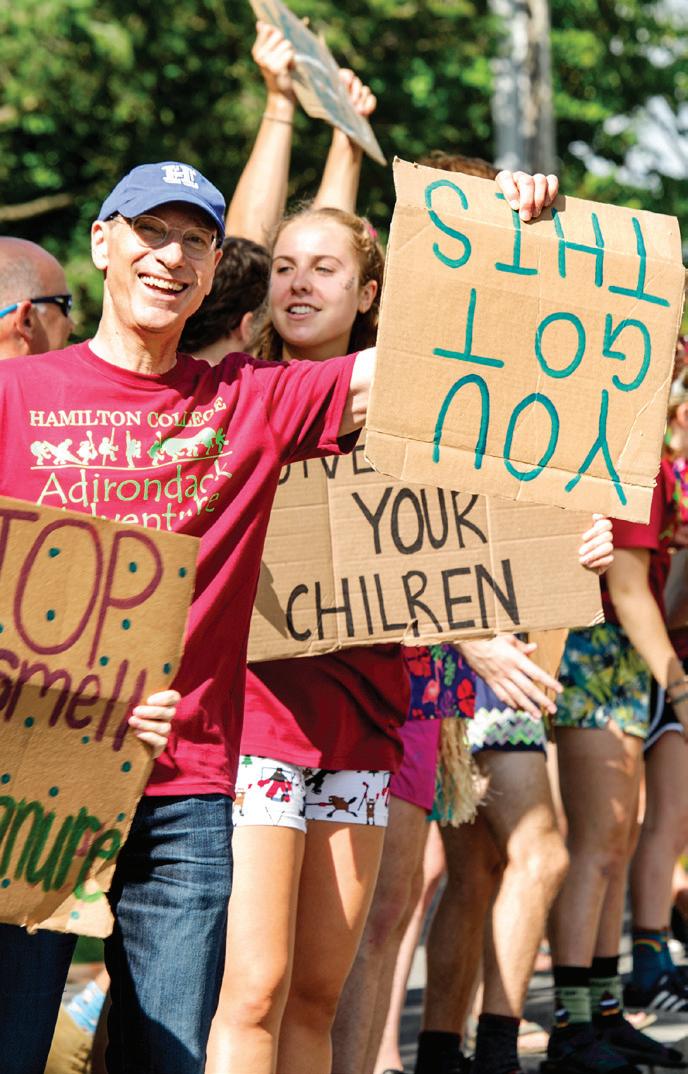
For many, many years, the American higher education system has been the envy of the world. It still is — other countries are trying to model on American universities and replicate the kinds of successes that we have. One of the things that I think the U.S. has done incredibly well is we have a tremendous range of higher education opportunities. … [There are] several thousand institutions of higher education ranging from community colleges to large public universities to very specialized institutions. I think that richness and variety are really important because not everyone is going to be seeking out the same kind of educational experience.

• Renovated Alumni Gymnasium opens
• DEI Advisory Council established
President Wippman joins Orientation Leaders in 2019 as they welcome new students arriving on College Hill.
For the right student, what Hamilton provides really is the best education you can find anywhere. And I think it prepares you for life in a way that few other kinds of educational experiences will.
MD: Given all of these problems swirling around, what makes you optimistic about higher education?
DW: If you’re not an optimist, you shouldn’t be a college president. You need it to sustain you when things get hard. But I would say history is what makes me optimistic.
You know, I spoke to a group of alumni just the other night, and I said, you should think about higher education a little bit like the stock market. … If you stay and hold, then over time, there will be ups, there will be downs. But over time the trend is consistently upward, and that I think is true, certainly for Hamilton. I think it’s true for higher education generally.
Higher education has always weathered storms in the past. We’ve emerged stronger and better, and we’ve reached a much broader segment of the population. Right now an enormous cross-section of American high school graduates will pursue higher 2021
• ALEX (Advise, Learn, EXperience) program, Hamilton’s innovative coordinated network of on-campus academic centers, resources, and advisors, launches
• Middle States Commission on Higher Education issues reaccreditation
• New academic concentration in Japanese added 2020
HAMILTON 34
NANCY L. FORD

education. Until World War II, that really wasn’t the case. For one thing, women weren’t as welcomed at many institutions. But, more broadly, higher education was seen as something for those who were more economically advantaged. It wasn’t seen as something that should be open to everyone. The GI Bill, among other things, really transformed attitudes toward higher education. The government saw that all these young men who had gone abroad to fight and were returning back to the United States needed a pathway forward that recognized their service and prepared them. Now that mostly benefited men, but over time, and we’ve seen it in Hamilton’s history with the formation of Kirkland College, women have been
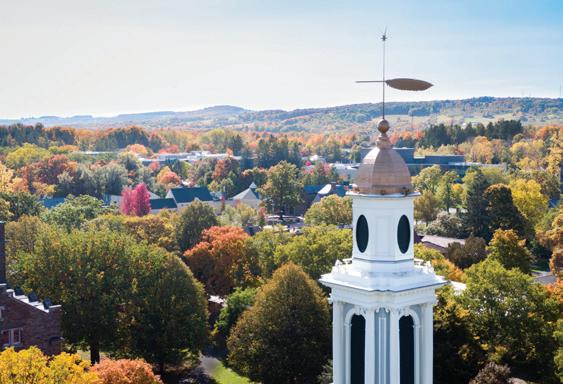
• Chapel steeple refurbishment completed
• Wippman elected to a three-year term with the Commission on Independent Colleges and Universities
• Renovated List Center opens to house the Literature and Creative Writing Department
welcomed. In fact, now nationally women are almost 60 percent of undergraduates. We’re always experiencing change, and then our education adapts. We find a way forward and we come out stronger.
MD: You said if you’re not an optimist, don’t become a college president. How did you balance the demands of the job with your own personal life and keep yourself on balance?
DW: It is a very demanding job. You have multiple constituencies. Of course, you have faculty who have, in most cases, a great deal of autonomy and a role in shared governance. It’s not as hierarchical a structure as you would find in the private sector. And
One of the best jobs of the president is continuing the tradition of presenting each graduate with a cane at Commencement, as seen here in 2021.
you have students whose needs are changing and who have high expectations about the services and the quality of the education they’re going to receive. You’ve got parents, who are probably more invested than ever in how their students are faring and sometimes are perhaps more involved than is strictly desirable. You have alumni who have expectations about the College. You report to a Board of Trustees.
… There are limits to the extent to which your vision for the institution can be realized. You have to build consensus across these different constituencies in a way that probably isn’t as true in many other sectors of life, so that’s challenging. Then you layer into that all of the challenges that we’ve been talking about … student mental health, social justice issues, the pandemic, the financial challenges facing higher education, the regulatory environment, the political environment. When you put all those together — and expectations that the president will be available to everyone and will respond to everyone, and will do so promptly — [they] create a stressful environment.
The other pressure that you face is the constant need to raise money, which
2022
• Hamilton announces roadmap for achieving carbon neutrality by 2030
• New academic concentrations added in Data Science and Middle East & Islamicate World Studies
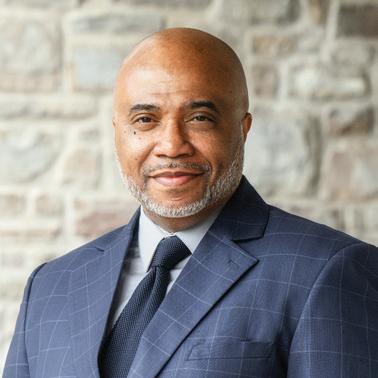
• Sean Bennett becomes first vice president for diversity, equity, and inclusion
• Jason P. Andris Boathouse dedicated as headquarters for rowing program
35 SPRING 2024
NANCY L. FORD

is something that’s been growing over the years. The ability to raise substantial amounts of money has allowed the College to do extraordinary things. It’s the reason we have such a large endowment, and that has been incredibly beneficial. But there is additional pressure there.
MD: How do you manage all of that? I get exhausted listening to it.
DW: Harvard University has a seminar for new college presidents, a week-long seminar that they run every year. I took it as a first-year president, and I’ve taught in it the last two years. It’s the thing all the presidents talk about. How do you maintain a balance between your professional life and
your personal life? How do you deal with the stresses of the position? There’s lots of advice that people give, and there’s advice that I’ve given. One of the things I tell people is find a rabbi. I don’t mean that literally; I mean find someone outside your institution who understands higher education who you have confidence in, who you can just have candid conversations with … or you can vent to, or someone who can walk you off the ledge and say, all right, this is going to be okay.
MD: I don’t see you walking on ledges, so whoever this person is, they must be doing a good job.

• Because Hamilton, the most ambitious campaign in the College’s history, tops goal of $400 million, including more than $120 million for student scholarship aid
• Hamilton becomes first liberal arts college to partner with The Bipartisan Policy Center in Washington, D.C.
• Bristol Pool renovation completed
• Hamilton’s first makerspace opens in renovated Burke Library
How does a president stay in shape and clear his mind? By biking through the hills and valleys near campus. This scene is from a ride during Reunion Weekend 2017.
DW: They’re doing a good job. It’s about having that ability to really unburden and talk about it with someone who understands what you’re going through. To a certain extent, you get that with other college presidents. Every time a group of college presidents gets together these days, it feels like a support group. I mean we’re all talking about, “Oh my god, have you had this, have you seen that? Is this happening on your campus?” And the answer is generally “Yes.” We support each other, and that’s been very helpful. The advice they gave at the Harvard seminar was take one day off a week, one weekend a month, and, I think, it’s one month a year for vacation and personal time.
MD: Were you able to do it?
DW: More or less, but it varies a lot. There are times when no, you can’t take time off. We went through a stretch in the early days of the pandemic where it was all-hands-ondeck all the time. And when we reopened in the fall of 2020 and got our first COVID case, a bunch of us were texting in the middle of the night, “Oh my god, it’s coming; it’s happening.” 2024

• Root Hall opens after extensive renovation
HAMILTON 36
2023
ADAM J. BROCKWAY
MD: Are you still able to bike?
DW: Still bike, ski occasionally, play pickleball. I work out a couple times a week resistance training. Having a supportive board is enormously helpful, and we’ve had a tremendously supportive board. I’ve always been able to go to the board leadership and say, “Okay, this is happening. This is what I’m thinking of.” I have a weekly call with the board leadership, which is very helpful.
MD: How does humor fit in? That’s certainly something you’ve done over the years with the videos. It’s part of your personality, I think.
DW: You know I want to have fun with what I do. For me, humor is an important way to do that. It’s a way for me to engage with people. And the people I work with, I appreciate when they have a sense of humor. It lightens things.
MD: Just a few more questions. How was the job different from what you thought it would be, or was it?
DW: That’s a really interesting question. I had a vision for what it would be like. Before I took this job, I worked with three different presidents at Cornell and two at the University of Minnesota, so I had some sense of what the job entailed. … And while you envision that, until you do it, you can’t fully appreciate what it’s like. You’re always on. You’re always aware that something might be happening. You know, the [president’s] house sits on College Hill Road. Every time a siren goes up the hill, and it happens a lot, I hear it. And I think, okay, is this just someone has burned popcorn in their dorm room, or is it something serious?
The other thing, which is actually one of the great parts of the job, [is that] it’s different every day. You think, well, I never saw that coming. … There are big things like the pandemic, which I did not see coming, and there are small things. But there are also rewarding things. You’ll go watch a play or

a musical put on by our students, or a concert or a sporting event, and you’ll just be amazed at the talent and the energy and the drive and the enthusiasm that you see.
MD: Thing you’re most proud of?
DW: I think I’m probably proudest of the way we managed the pandemic. I think it showed Hamilton at its best. It required people from all across the institution to rise to an incredibly difficult moment. People often say, higher education is slow to change. It can’t react quickly. It can’t adapt. And that was the exact opposite. In two weeks, the faculty had to create a whole curriculum amenable to remote instruction. We had to get students the technology, we had to bring them home from all over the world, we had to support them in all kinds of different ways. And the whole campus rose to it. Then when we reopened in the fall, we had to reorganize the campus. We had to set up a whole testing operation from scratch. We had to reconfigure all the classrooms for physical distancing. We had to open a dining hall in the athletic center. I mean, it was a massive effort by really everyone on the campus. The students rose to the challenge. The staff. The faculty. The alumni supported us, and it was a great moment.
MD: We talked about the impact the College has on students. What impact has Hamilton had on you?
DW: We’re an institution that’s all about learning, and I’ve learned a great deal about
Wippman grabs a ride on the back of a golf cart during Reunion Weekend 2023.
higher education, and about people, about management, about myself. And that’s invaluable. … Learning never stops, should never stop, and that’s true for college presidents as well as really for everybody. So when I retire, I’m going to continue to write about higher education and that will reflect on the experiences I’ve had here.
I hope to maintain the friendships that I’ve developed with people who are here, and with students who graduated that I keep in touch with, with alumni, and with board members. …
And I’ve said this on a number of occasions, but my immediate predecessors, Joan Stewart and Gene Tobin, were my models for how to be a college president. They’re also my models for how to be an ex-college president, which is to say they are always willing to do whatever Hamilton asks but only when it asks. I hope to be as helpful as I possibly can to my successor. I love the College. I’ll do anything that Hamilton asks me to do, but I won’t interfere.
MD: I had another question, but I kind of like how that ends.
DW: Thank you, Mike.
MD: Thank you.
DW: All right. I’m going to grab a cup of tea before my three o’clock. •
Mike Debraggio is executive writer and director of community relations in the Office of the President. This conversation has been edited for clarity and length.
37 SPRING 2024
President
NANCY L. FORD
H
Scan to hear the full interview.
THERE’S
A NEW MARSHAL IN TOWN
by Stacey Himmelberger P’15,’22
AS ONE OF HER FIRST ACTS as the new College Marshal, Lisa Trivedi cut bow ties out of brightly colored card stock. The fashion accessories were then distributed to students, staff, and faculty who paper-clipped them to their collars before greeting Steven Tepper, Hamilton’s president-elect, when he visited campus on Feb. 29.
Earlier Tepper had mentioned in a video announcing his appointment that he was partial to the neckwear, and Trivedi seized the opportunity to mark the occasion in a light-hearted way that would give everyone the chance to participate while making the president-to-be feel welcomed.
Trivedi, the Christian A. Johnson Excellence in Teaching Professor of History, joined the faculty in 2000 and took over the role of College Marshal this academic year from Margaret Thickstun, the Jane Watson Irwin Professor of Literature. Although there’s no official job description — and craft-making skills are certainly not required — Thickstun says the ideal College Marshal should work well with others, care about ceremony, pay attention to detail, and remain poised in front of large crowds.
“Lisa fits that description to a T,” she adds, “but, more importantly, I think she
has the authority to scare everyone — faculty and students — into behaving.”
After leading the academic procession, the College Marshal uses the thump, thump, thump of her staff to open and close official College celebrations such as Convocation, Class & Charter Day, Commencement, and special events like presidential inaugurations. The role of College Marshal is three-fold: part master of ceremonies, part meticulous event planner, and part facilitator — someone who connects people and builds community.
It’s that last duty that most entices Trivedi. “I’m both excited and honored to step into this role, one that is so different from what most of us experience as academics,” she says. “We are teachers, we have our scholarship, and serve on faculty committees, but it’s unusual to have the opportunity to shape how we mark accomplishments and celebrate transitions.”
As she gears up for her first Commencement as marshal, Trivedi is especially sensitive to this year’s senior class, whose members completed high school in 2020 at the height of the pandemic.
“Many of the students graduating this year had no high school graduation ceremony, no prom,” Trivedi says. “Many of them
Many of the students graduating this year had no high school graduation ceremony, no prom. Many of them didn’t have the chance to visit college before they enrolled ... I hope to use the role of College Marshal to help our community move past that.”
didn’t have the chance to visit college before they enrolled and then were faced with a hybrid semester once they got here, further dislocating an already fractured community.”
She also thinks of her colleagues on the faculty who didn’t have the opportunity to be officially hooded upon earning their Ph.D.s.
“I hope to use the role of College Marshal to help our community move past that,” she adds. “We need more rituals in our lives, more to tether us to one another.”
The importance of ritual was instilled in Trivedi from an early age by her family, which immigrated from India. She is proud to serve Hamilton as the daughter of immigrants and, as a historian, she appreciates the value of carrying on traditions.
What’s her biggest worry going into Commencement? “I hope I don’t trip,” Trivedi says with a laugh. “I’m a fairly clumsy person by nature, and I really want David Wippman’s last Commencement to be special.”
HAMILTON 38

SPRING 2024
PASSING THE STAFF. Professors Lisa Trivedi (left) and Margie Thickstun, Hamilton’s incoming and outgoing College Marshals.
KEVIN
M. WALDRON
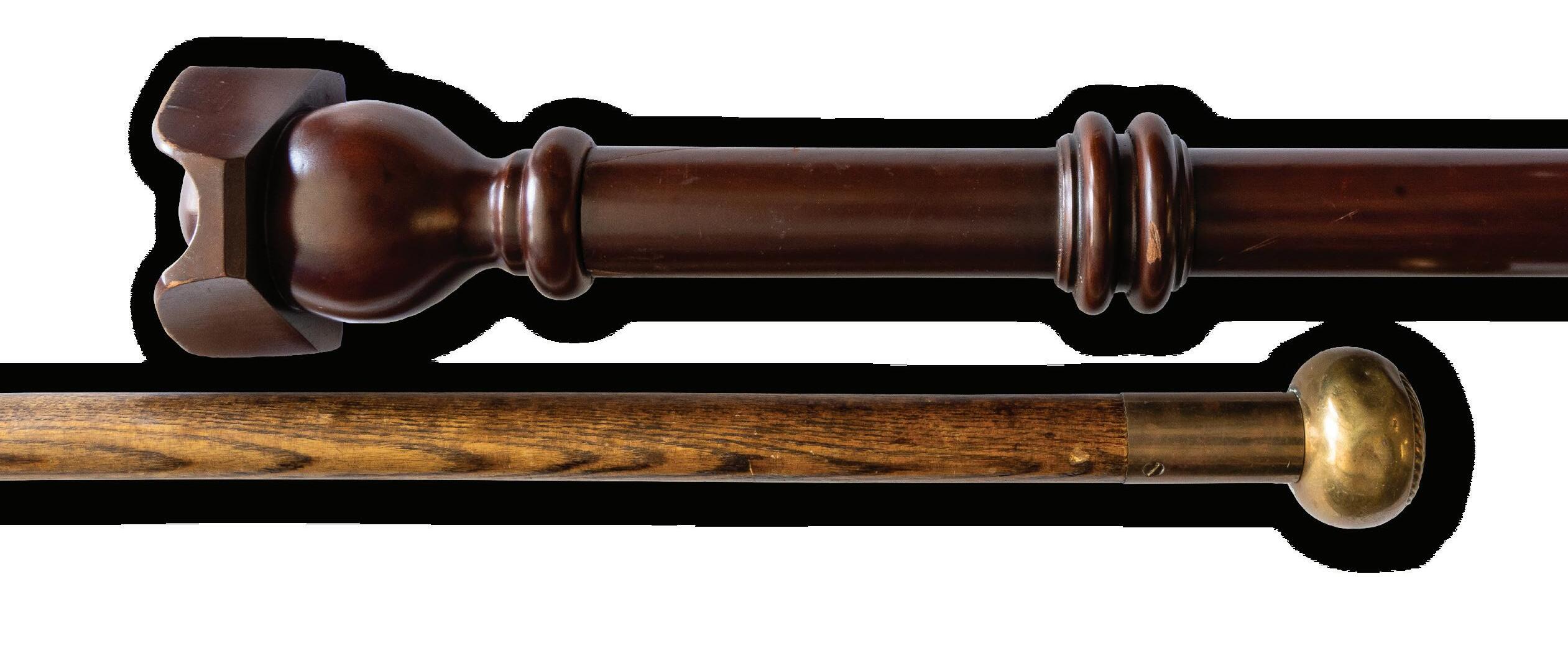
THE JOB DESCRIPTION

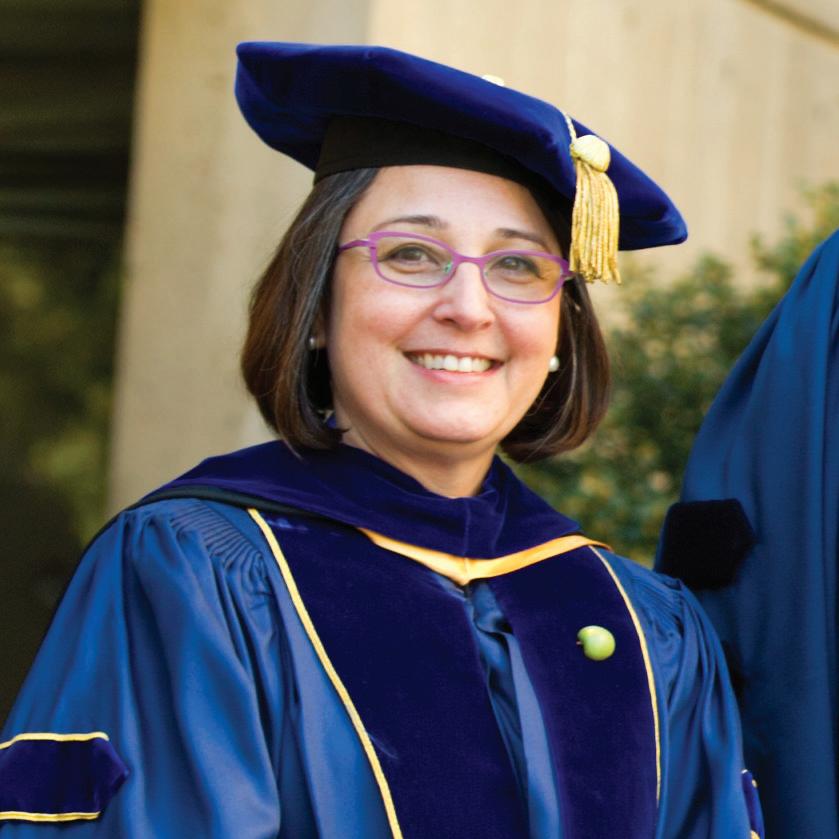
The College Marshal tradition presumably goes back to the earliest official Hamilton ceremonies. After all, someone had to take charge to ensure that the proceedings were conducted with dignity and minimal confusion.
As early as 1940, issues of the Alumni Review make mention of marshals at specific events, but it isn’t until 1967 that the first College Marshal is noted in a Commencement program: Professor of German Thomas Colby ’42.
While the College Marshal does represent the public face of the College at major events, most duties happen behind the scenes. Take Commencement, for example. Early that morning, the College Marshal goes to the Field House to adjust the chairs so that there are clear open lines between the boxes of canes and the “X” where the president will stand.
Then, the College Marshal coordinates the work of two or three faculty marshals — who have been appointed in advance — to make sure that all faculty members are organized into two straight lines of roughly even length. During the ceremony, the College Marshal assists with the hooding of honorary degree candidates, the handing out of canes, and the collection of any green apples that students present in commemoration of Kirkland College.
In the weeks leading up to the event, the College Marshal sends messages to current
and emeriti faculty alerting them when and where to show up, what they are expected to wear, how to obtain parking passes, etc. The marshal consults with such details as changes to the Commencement program, music, and even whether or not to have the full assembly sing. Other duties include advising the president and trustees about possible honorary degree candidates, attending Commencement planning meetings, and participating ex-officio in deliberations of the student committee that selects a class speaker.
Like the saying goes, the College Marshal carries a big stick … but does not always speak softly. During Senior Week the marshal attends a mandatory all-class meeting to strongly advise students about the importance of reporting on time to line up on Commencement morning. The marshal also provides instructions to the candidates for honorary degrees both at a dinner the evening before and at a breakfast the morning of Commencement. The College Marshal receives free meals at those two events — the only compensation the job offers.
The College Marshal may serve in the role as long as he or she wishes and will typically pass the torch near retirement. Margie Thickstun has stepped down prior her retirement from the faculty, which suits Lisa Trivedi just fine: “I’m only doing this because she’s helping me with the transition.”
HAMILTON 40
Margie Thickstun at Commencement in 2022.
NANCY L. FORD ADAM J. BROCKWAY
Lisa Trivedi at Class & Charter Day 2016 when she received an award for teaching excellence.

THE COLLEGE MARSHAL STAFF
Two official staffs have been used by Hamilton’s College Marshals over the years.
When Professor of Economics
Sid Wertimer retired as marshal in 1991, Hamilton gifted him the original staff (shown above), made from a banister rail with a doorknob affixed to its end. This staff had been used by Thomas Colby ’42, the first College Marshal.
Wertimer soon passed the staff along to Professor of English John O’Neill when he became marshal. Upon O’Neill’s retirement, President Joan Stewart presented him the staff with an inscription that reads: “John H. O’Neill, Hamilton College Marshal, 1996-2008. With gratitude for his years of service.” Last summer he gifted the original staff back to Hamilton where it is held in College Archives.
Fun fact: During her tenure as College Marshal, Professor of Theatre Carole Bellini-Sharp added some flair by adorning the staff with colorful ribbons.
A new staff was made for Margie Thickstun when she took over as marshal in 2010. Although larger, this staff is similar to the canes presented to new graduates at Commencement. It features a Continental tricorn hat in honor of Baron von Steuben, drillmaster of Washington’s Continental Army who laid the cornerstone of the Hamilton-Oneida Academy.
New College Marshal Lisa Trivedi will continue to use this staff although, like Bellini-Sharp, she plans to add some decorations.
“My hope is to bring a little bit of life to these celebrations,” Trivedi says. “I take them seriously, and I’m hoping to take the opportunity to make them more joyful.” n

2023–LISA TRIVEDI professor of history
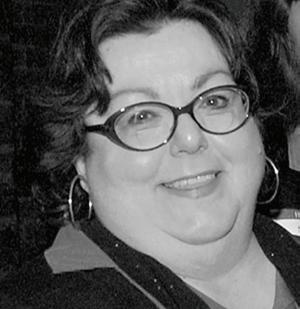
1994–96
CAROLE BELLINI-SHARP professor of theatre

1992–93
LELAND “BUD” CRATTY, JR. professor of chemistry

1967*–75
THOMAS E. COLBY ’42 professor of German

2010–22
MARGARET THICKSTUN professor of literature and creative writing

1997–09
JOHN O’NEILL professor of English
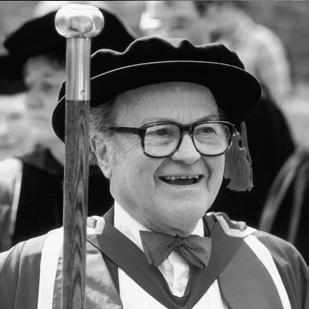
1982–91
SIDNEY WERTIMER, JR. professor of economics
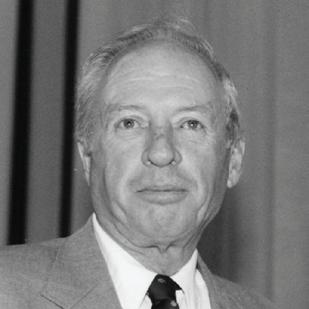
1976–81
RUSSELL T. BLACKWOOD professor of philosophy
41 SPRING 2024
COLLEGE MARSHALS THROUGH THE YEARS
PLAYING IT FORWARD X Continentals Turned Coaches
by John Pitarresi ’70
Bill Coen ’83 was going to be a doctor.
Lauren Steates Cupp ’07 intended to follow her parents into law.
Gary Heenan ’98 was headed for a business career.
Emma Parkhurst ’21 thought she would become a health care professional.
Coaching wasn’t the career path any of these alumni envisioned as undergraduates. Yet, they are now indeed coaches — college coaches — who along with other former Continental student-athletes are teaching and inspiring young people throughout the country.
Although the reasons they chose this line of work vary, of course, one thing is true for them all. The desire to become a coach was sparked by lessons they learned from their own coaches, teammates, professors, and other mentors on College Hill.
Take a timeout to read about a few of them.
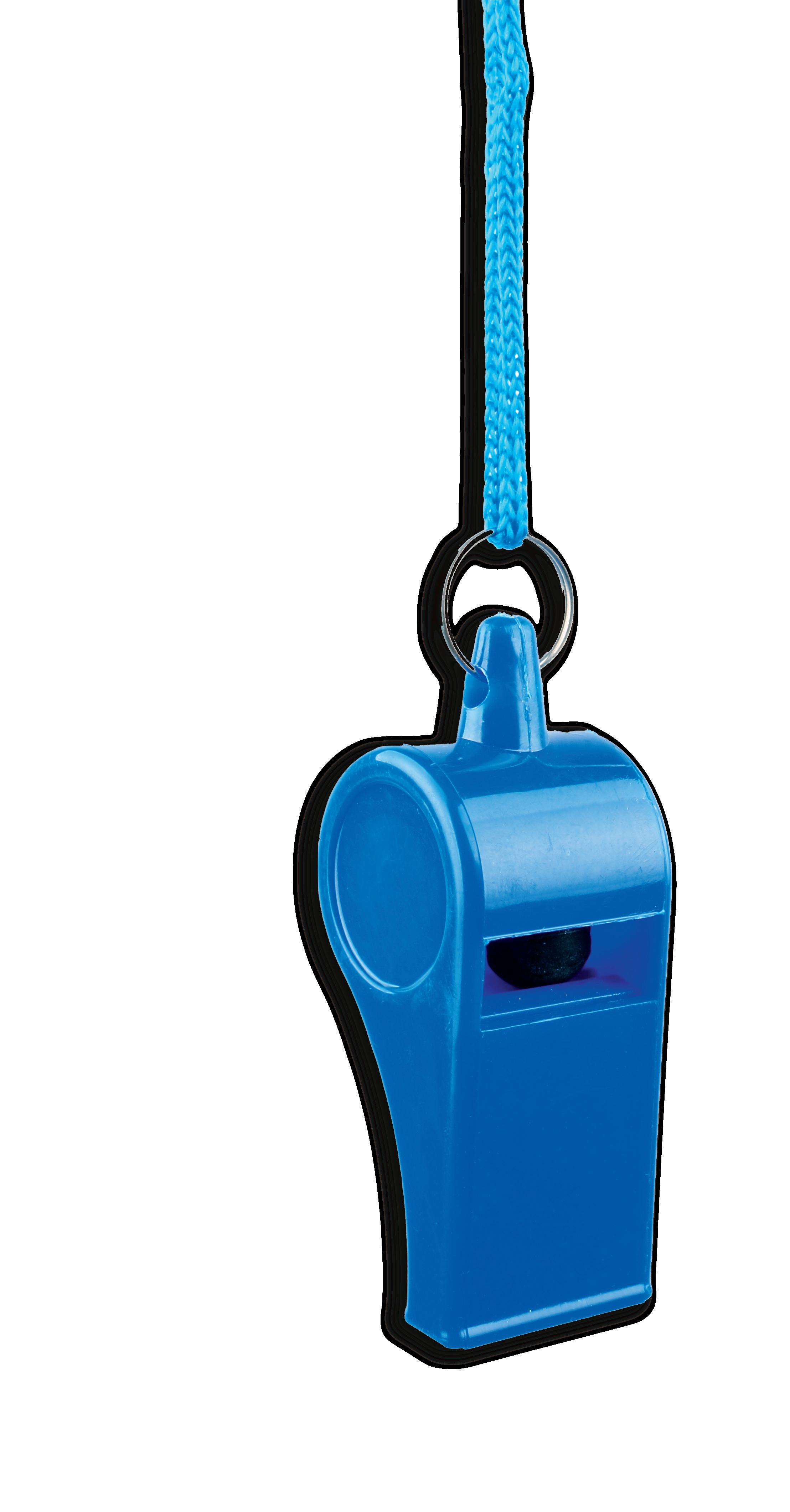
HAMILTON 42
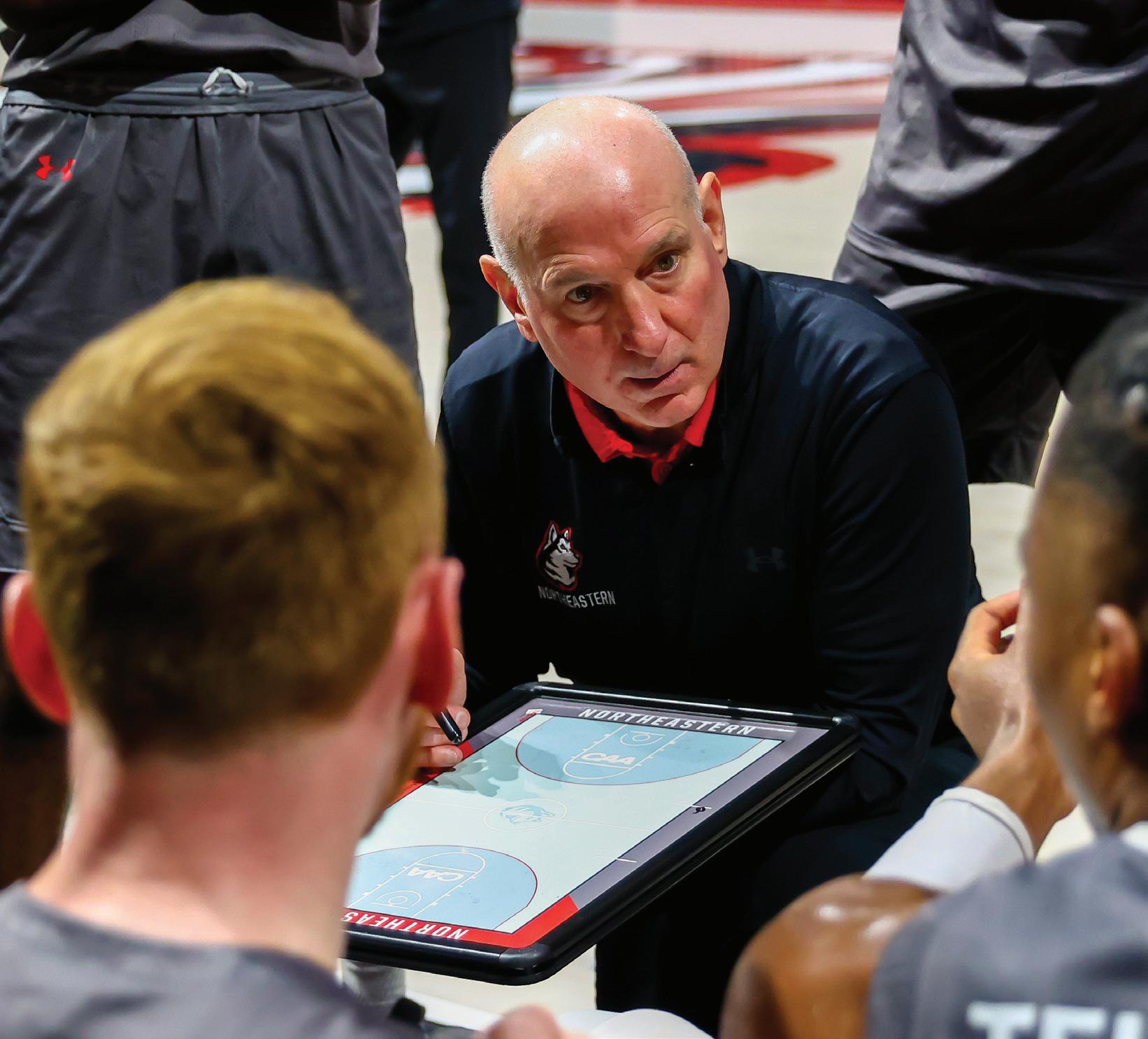
Bill Coen ’83 took to the hardwood for Tom Murphy, who in his 34-year tenure as coach of the men’s basketball team launched dozens of players into coaching careers. That is true for Coen, who steered away from a future in medicine and instead has enjoyed a long, successful tenure in basketball.
After giving up the pre-med track, Coen spent time as a software engineer for Raytheon before taking on coaching jobs at Canajoharie (N.Y.) High School, Hamilton, Rhode Island, and Boston College. In 2007, he became head coach of the men’s basketball program at Northeastern University and is now the Huskies’ all-time leader in victories with more than 280, with a couple of conference championships and several NCAA appearances.
He credits his experience at Hamilton with helping put him in that position.
“I’ve had a lifetime of great relationships,” Coen says. “Our coaches — Coach Murphy, Bob Montana, Bob North, Bob Roth — that is what it was about. They set you on the right track. They taught you perseverance, about doing it the right way. The
relationships with teammates were great. Coach Murphy connected us all, carrying us through good times and bad.”
Coen has tried to model that experience for his own players, but it wasn’t just lessons on the court that carried him to the top levels of the college game. Classroom work played a very large role as well.
“I think the huge benefit of going to Hamilton is that you learn how to think critically,” he says. “Having a liberal arts background, with that faculty, and playing for a Hall of Fame coach had all the elements you needed to enter the coaching world.”
As a Continental, Melissa Hart ’89 played soccer, basketball, and softball, and still holds several records, including most points scored in a Hamilton women’s basketball game (39), which she achieved twice on the way to a career average high of 15.5 points per game. Like
Bill Coen ’83 strategizes with Northeastern basketball players during a timeout.
Melissa Hart ’89, women’s soccer coach at WPI.
Coen, it took her some time to decide coaching was a viable career path — and she, too, got a nudge from Murphy.
“I resisted even accepting how much I loved coaching early in my career,” says Hart, who just completed two seasons as co-head women’s soccer coach at Worcester Polytechnic Institute after stints at Emerson College, Massachusetts Institute of Technology, and a long run at her alma mater, Belmont High outside of Boston.
“It was not a ‘serious’ choice for a young woman. Though the numbers were growing of female athletes and women in sport, it was still a decade away before a big jump in the growth of opportunities for women.”
Murphy, then the athletics director, asked Hart to come back to Hamilton after her senior year for a coaching internship. She would spend three years at her alma mater, serving as head women’s soccer coach, assistant women’s basketball coach, and interim head softball coach. She found that her education on College Hill lent itself to working in athletics, but she opted to teach in Japan for a few years and play semi-pro basketball there as well.
Hart realized then that she liked teaching, but that teaching on a field or court was even more rewarding, “and trying to help young people learn life skills through teamwork and pushing oneself and others in competition seemed like an appealing job description to me,” she recalls.

Hart has indeed found success as a coach. During her stint at MIT from 1997-2003, she served as the head coach for both the women’s soccer and basketball programs and is one of only two recipients in NEWMAC conference history to claim Coach of the Year honors in both.
43 SPRING 2024
Herb Hand ’90, on the other hand, did know he would coach but figured it would be as a volunteer with his kids’ teams. He quickly found out differently. Now the highly regarded offensive line coach at the University of Central Florida, he’s made more than a dozen stops all over the map, from West Virginia University to the University of Texas. He’s worked with programs that earned six conference championships, and offenses Hand has coached have produced all-time leading rushers at three different institutions: West Virginia, Tulsa, and Vanderbilt.
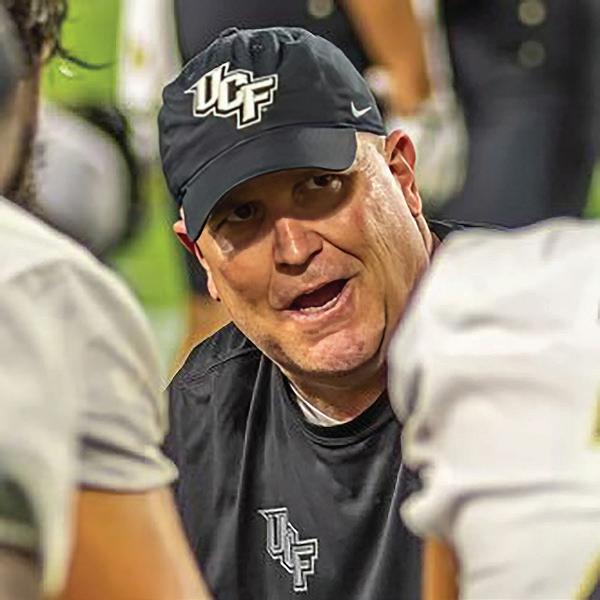
and Mike Davis, his position coach senior year. “I learned a lot about myself and that I could control my own destiny based on the decisions that I make every day and not based on the circumstances in my life,” Hand says. “I learned how to lead as well as how to follow, and that both roles are critical to developing synergy within a group. I learned that everyone has a story, and if you talk less and listen more, you’ll become a much more empathetic leader.”
As a coach now for over 30 years, Hand understands the enormous responsibility he’s undertaken.
Herb Hand ’90 offers tips from the sidelines at a University of Central Florida football game.
Lauren Steates Cupp ’07, Hamilton’s head women’s and men’s golf coach.
lightly. The title coach is a powerful one, and I’m blessed to have carried it for so long,” he says.
While Hand grew up in Westmoreland, N.Y., just a proverbial stone’s throw from College Hill, and deployed his coaching talents throughout the country, Lauren Steates Cupp ’07 is finding success closer to home. A native of nearby New Hartford, N.Y., she took over as head coach of her alma mater’s men’s and women’s golf teams in 2017.
A two-sport athlete at Hamilton where she founded the women’s golf club, Cupp was coached by Ellen Hull and Jerry Tine in track, and Susan Keller and Alexis Manhurst in volleyball. She also received input from Bob Simon, the late professor of philosophy and longtime golf coach.
Like the other Hamiltonians, his coaching life benefitted greatly from what he was taught on the Hill, much of it by playing under head coach Steve Frank
“Coaching has given me a platform to make a difference in the lives of the young men with whom I work daily, and that’s an opportunity that I don’t take
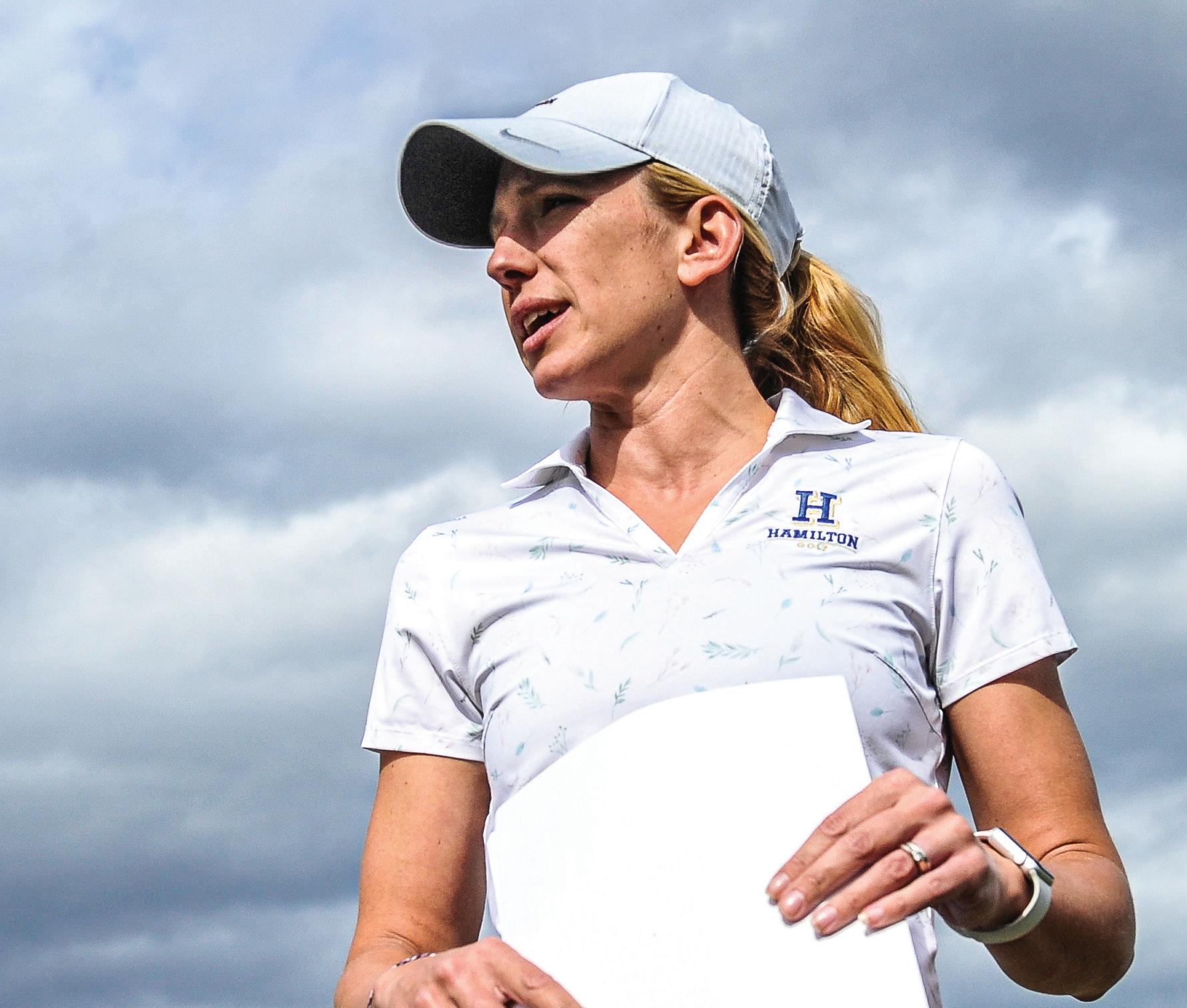
Having also gained notoriety as a world champion pioneering speed golfer, Cupp was twice named NESCAC Coach of the Year — in 2021 for women and in 2022 for men, the same year the Continentals took the NESCAC title and made an appearance in the NCAA Division III Championship. Yet, just as important to Cupp is this statistic: last year 13 of her players were named to the NESCAC Spring All-Academic Team.
“My experience as a former Hamilton student-athlete gives me a unique perspective on the challenges of balancing academics and athletics,” she says. “It instilled in me the values of teamwork, respect, and commitment. I try to reflect these values in my coaching, hoping to build the framework for winning programs and contribute to successful post-Hamilton lives. Having the opportunity to engage and enrich the student-athletes on my teams and students in my classes is the best job in the world.”
Skills learned in the classroom — such as critical thinking and effective communication — represent another constant theme among the coaches.
MCKEE
JOSH
MENTORS OFF THE FIELD
“Bob Simon [the late professor of philosophy] was, hands down, my favorite professor at Hamilton, but I never got into his classes, even though I always tried. But he was such a support to the athletics program, especially women’s basketball. He and his wife were great allies for us and helped us feel so welcome in the community. He is missed by so many. Carol Rupprecht [the late professor of comparative literature] was my favorite English professor. English was my favorite subject, though psychology was a close second. True story, that I can’t admit to my own kids, I chose English over psychology so I wouldn’t have labs that interfered with my sports schedule.”
— MELISSA HART ’89
“The geosciences were by far my favorite classes, in large part due to Cindy [Domack, professor of geosciences emeritus]. She had a straight-forward teaching style that made her classes both challenging and interesting.”
— WILL TIFFT ’14
“[Professor of Anthropology Emeritus] Doug Raybeck helped me realize my potential as a student because he would push to bring out my best instead of accepting anything less. … I would be
Hamilton players turned coaches remember the professors who made an impact on them as students.
remiss, however, if I didn’t mention Christine Johnson. She was the director of the HEOP program and was a huge mentor for so many Hamilton students — none more than me.” — HERB HAND ’90
“I never thought I would be taking classes about Greek mythology, yet I took a chance on one of [Associate Professor of Classics] Anne Feltovich’s classes and ended up taking three or four more. I was a government major and found the classes interesting, but coaching was more my calling.” — KENNY COLLINS ’17
“It’s hard to pick one. The beauty of faculty and staff is that they connected with each and every student. [Professor of Chemistry Emeritus] Robin Kinnel was my freshman advisor, and I had him for chemistry. John Anderson and Mary Ann Young in math. They were beyond brilliant. [Professor of Economics Emeritus] James Bradfield. He had a wit about him.” — BILL COEN ’83
On Director of Counseling and Psychological Services David Walden’s course on Counseling Psychology: “The humanistic, empathetic, and problemsolving aspects of counseling psychology align very well with the nature of
coaching and being part of a support system for my student-athletes. The skills I developed in this class, namely the importance of active listening and understanding that everyone comes from different backgrounds and experiences that influence their actions and interpretations of all situations, have been invaluable in connecting with and mentoring my athletes.”
— EMMA PARKHURST ’21
“[Professor of Economics Stephen Wu] made the material come to life. He also took interest in his students’ lives outside of the classroom, which made him such a meaningful teacher and mentor.” — LAUREN STEATES CUPP ’07
On Sol M. Linowitz Visiting Professor of International Studies Richard Haass (diplomat, advisor to President George W. Bush and Secretary of State Colin Powell): “Twelve students were selected each week to analyze a world civil dispute and whether or not the United States should involve itself. He would fly in for the Thursday class and leave afterward. He was brutally tough on your weekly presentations and papers. Fascinating stuff.” — GARY HEENAN ’98
45 SPRING 2024
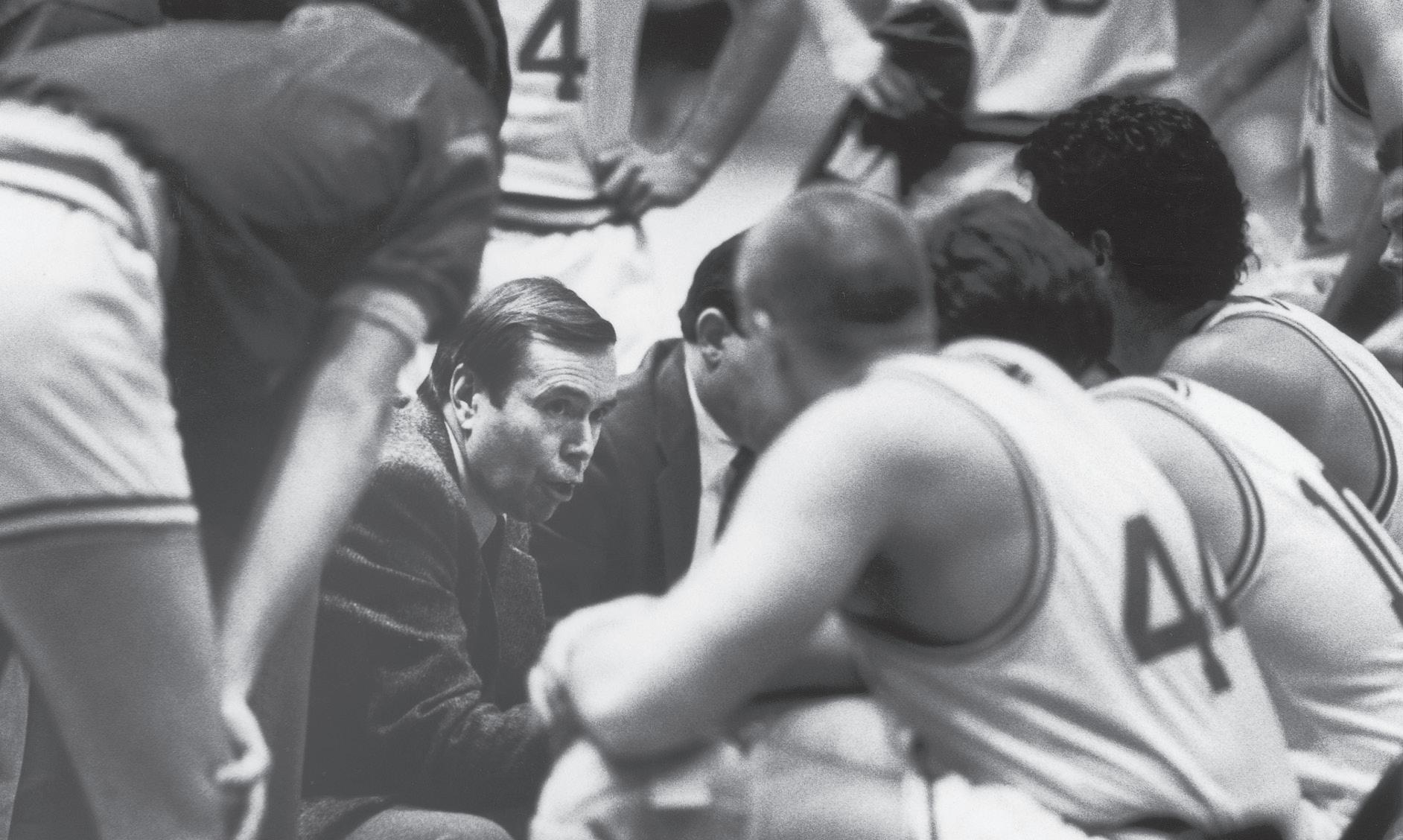
IT BEGAN WITH COACH TOM MURPHY
Tom Murphy coached basketball at Hamilton for 34 seasons, turning the Continentals into one of the top small college programs in the nation. The Springfield College graduate also was Hamilton’s long-time athletics director, coached baseball for a time, and was an assistant football coach early in his career. Along the way, he developed — and inspired — an impressive number of players who went on to become college coaches themselves.
Murphy, who had a standout high school coaching career at Belleville Academy in Jefferson County, N.Y., compiled a 602-263 record on the Hill, with 30 post-season appearances, 16 seasons of 20 wins or more, and a No. 1 national ranking in 1991. Last December, Hamilton honored his legacy as the College’s all-time winningest coach by naming the
basketball court in Margaret Bundy Scott Field House in his honor.
Murphy didn’t consciously try to turn out coaches, but he did have an idea now and then that some of his players might get into the profession. “You could see with certain guys that they had that kind of leadership,” he says. “Most of them who became coaches were captains or team leaders and just liked the game.”
They included Billy Coen ’83, a former Hamilton captain and assistant who has been the head men’s basketball coach at Northeastern University for 17 seasons. Murphy is now his assistant, at age 85.
Among other current head coaches who played for Murphy are Kyle Smith ’92 who just moved to Stanford from Washington State, Joe Smith ’04 at SUNY Morrisville, and Billy Geitner’87, in his 22nd season at Eastern Connecticut State.
A partial list of other men’s basketball alumni who have had careers as head coaches or assistants at various college levels include Ron Torgalski ’89 (Buffalo); Mike Byrnes ’98 and Matt Stowell ’95 (Hamilton); the late Kevin Grimmer ’81 (SUNYIT); the late Joe Kremer ’90 (SUNY New Paltz); Karel Jelinek ’90 (Washington & Jefferson); Jimmy Driggs ’01 (Alleghany); Jimmy McCarthy ’01 (Northeastern and Towson); and Staunton Peck ’06 (Vassar). Mike Evans ’05 is the founder of Full Court Peace, a nonprofit that unites and strengthens local communities through basketball.

Keeping it in the family, Tom Murphy’s sons are also coaches — Mike Murphy ’97, assistant coach at Barrington High School, and Brian Murphy ’99, assistant coach at Case Western Reserve.
46 HAMILTON
Coach Tom Murphy huddles with Hamilton players circa 1986.

“The throwing events in track and field are extremely technical and need to be broken down at different stages when trying to teach them or correct a technical issue,” says Will Tifft ’14, an assistant track and field coach at Plymouth State who also works as an environmental geologist for Weston Solutions. “My classes, whether a geoscience lab, art history, or intensive writing, they all helped to improve those skills.”
A highly decorated weight man at Hamilton, Tifft cites assistant coaches John Ostler, now his boss at Plymouth State, and Jake Tyksinski, who taught him the basics of weight throwing, as major influences. Just like they inspired him, Tifft describes the joy he gets when he and a student he coaches reach that a-ha moment.
“I love the challenge of developing athletes. In track and field, most throwers [are introduced to a new event] in college, weight for indoor and hammer for outdoor,” he says. “I find them to be two of the more technical events but also the most rewarding when everything clicks. Getting to teach and develop athletes in these is so much fun, especially once everything falls into place.”
Kenny Collins ’17, head baseball coach at St. Lawrence University, says he has benefitted from Hamilton’s open curriculum. When not on the diamond, the two-year captain and four-year Continental starter — who finished top-five in program history in runs scored, on-base percentage, and stolen bases — made it a habit to take classes outside of his government major.
“With the amount of academic flexibility and opportunities around campus, every student has a chance to develop over four years instead of having to choose a path right away,” he says. “By senior year, I knew
which path I wanted to go down, and I had the preparation and guidance to enter the coaching world.”
Although he knew relatively early that he wanted to pursue coaching, Collins still found the job doesn’t always come easy.
“It is a constant challenge,” he admits. “Every season presents new opportunities, and every athlete has their own journey that you are able to influence for the better. These challenges make you a better coach because you are constantly forced to adapt and improve. Ultimately, being in a position to help athletes reach their full potential is an extremely rewarding position to be in.”
Emma Parkhurst ’21, a three-time volleyball captain and now an assistant coach at William Smith, learned innumerable valuable lessons at Hamilton, including how to navigate challenges individually and in groups academically and with teammates.
“Hamilton’s high academic standards and emphasis on attention to detail have contributed to my ability to perform my responsibilities as a coach at the highest level,” she says. “The stress on excellent oral and written communication skills has also played a significant role in my job as a recruiter. Having constant conversations with recruits, parents, club coaches, and recruiting coordinators requires clear, impactful, and genuine communication, which I feel was strongly emphasized at Hamilton. …
“I strive to share the lessons I’ve learned about success as a student and athlete — lessons in time management, effective communication, working hard, and seeking support — to contribute to their overall growth as students, volleyball players, and humans,” Parkhurst adds.


47 SPRING 2024
Will Tifft ’14, assistant track and field coach at Plymouth State.
Kenny Collins ’17, baseball coach at St. Lawrence, and Emma Parkhurst ’21, assistant volleyball coach at William Smith.
Gary Heenan ’98 on the bench with his Utica University Pioneers.
FACING OFF AT CENTER ICE
Dave Clausen ’98 and Chris Baudo ’00 are successful hockey coaches and program builders — and they just happen to be rivals in the United College Hockey Conference (UCHC).
Clausen is the founding women’s coach at Utica University and has directed a dominant outfit with the Pioneers for the last 23 seasons. He boasts a 347-214-37 record, with 20 postseason appearances. He is a two-time ECAC West Coach of the Year and earned that honor twice in the UCHC as well.
Baudo is in his sixth season at Nazareth University, where he also started the women’s hockey program, and has run up an impressive 116-26-7 record. Like his crossstate rival, Baudo has been named UCHC Coach of the Year three times.
Their teams faced off for the UCHC Championship on March 2, with Nazareth edging Utica 2-1. With that win, Naz advanced to the first round of the 2024 NCAA Division III National Championship against none other than Hamilton. The Continentals defeated the Golden Eagles 2-1 with a goal scored in overtime.
Although they were on College Hill together, Clausen was more familiar with Baudo’s older brother Joe ’95, a standout hockey defenseman and team captain who is now the athletic director at Nardin Academy in Buffalo. Clausen was a football quarterback at Hamilton who gave up his dream of also playing hockey. However, he began his coaching journey by assisting with the then-new Continental women’s hockey program. He also coached football and hockey at Maine Maritime and Bowdoin College before arriving at Utica.
Baudo was a two-time MVP of the Continentals hockey team. He previously coached at The Gunnery School, where he won 239 games in 15 seasons, and at the Selects Academy.

Lessons learned in class and on the ice from former Hamilton men’s hockey coach Phil Grady (who won 304 games and an ECAC Championship in his long career) are highly valued by Gary Heenan ’98, who has built a powerhouse program at Utica University over the last 23 seasons. Founder of the men’s hockey program, Heenan has been named conference Coach of the Year several times and national Division III Coach of the Year by U.S. Collegiate Hockey Online in 2020, when his team went 25-2-2. In addition to capturing numerous regular and post season championships, the Pioneers consistently produce All-Americans and graduate players to the professional level. Heenan has also developed some of the nation’s top young coaches. He has several former assistants now coaching Division I programs, USHL and major junior teams, as well as on NHL staffs.
Heenan is quick to look back to the basics he learned at Hamilton. “I was never a good writer,” he says, adding that he worked to improve his writing on College Hill. “Hamilton allowed me to take
advantage of presentation skills. And Phil was as passionate about life skills as he was with the X’s and O’s. You just couldn’t be late, you couldn’t not be well groomed, you couldn’t miss class. I’ve adopted those principles in my own coaching, for sure.
“Coaching has a direct impact on 28 guys every single day. Winning is one thing, but helping guys win in life is very rewarding,” Heenan adds. “Players are players when they are with you, but my friend group grows with every class we graduate. My wife quite frankly is tired of attending four or five weddings of former players each summer. ... I love it.” n
— John Pitarresi ’70 is a journalist who spent more than four decades covering sports and other topics for the Utica newspapers. Now retired, he often can be found in the stands cheering on the Continentals.
HAMILTON 48
PEXTON
JEFF
A RARE THREE-PEAT
Not too many people can claim three NCAA championships. Kate Fowler ’10 is one of them.
Fowler was the goaltender for Hamilton’s 2008 national championship lacrosse team and later added two more titles as an assistant coach at Gettysburg. After five seasons as head coach at Washington College, she is now a volunteer assistant coach at Vassar. She hopes to be a head coach again one day, but right now is enjoying spending time taking care of her newborn daughter.
Whether playing or coaching, Fowler’s experiences with championship teams had several things in common. “Each team had tremendous leadership that fostered a genuine love for each other and embraced

the value of every member of the team and staff, regardless of position,” she says. “Every championship took a lot of belief in what we could do if we competed to our potential — and had a little luck along the way.”
Winner of the Gelas Memorial Prize (for outstanding development in sportsmanship, leadership, character, and athletic ability) as a senior, Fowler also played goal in soccer four years and was a team captain in both sports. The Continentals won four consecutive Liberty League lacrosse championships during her career and played in three consecutive NCAA semifinals before winning the whole thing in 2008 to become Hamilton’s first and
only national championship team. Fowler credits lacrosse coach Patty Kloidt and soccer coach Colette Gilligan, along with her assistant coaches, with teaching her how impactful a coach could be.
“Every day as a coach is different, so the ability to think on my feet and problem-solve creatively helps me constantly,” she says. “Being able to communicate effectively both verbally and in writing is something I credit Hamilton for as well. The open curriculum allowed me to take classes outside of my major, many of which I still draw from today. And as an econ major, my colleagues always ask me to help with their budgets!”
HAMILTON IN THE NFL
Joe Gilbert ’87 — Carolina Panthers. He previously was the offensive line coach of the Tampa Bay Buccaneers, helping win Super Bowl LV in 2021. An offensive tackle from Horseheads, N.Y., Gilbert was Hamilton’s first first-team football All-American and was a key member of the Continentals 6-1-1 team that defeated Union, ranked second in the nation in 1984. Gilbert coached at a long string of colleges, beginning with Albany State under legendary coach Bob Ford, and was a member of the Indianapolis Colts staff from 2012 to 2017.
Sean Ryan ’94 — Previously with the Carolina Panthers, he was a safety and linebacker at Hamilton. Ryan began his coaching career at Siena College, followed by stays at Albany State, Colgate, Boston College, Columbia, and Harvard. The Hudson Falls, N.Y., native moved on to the New York Giants, where he helped coach two Super Bowl championship teams. He handled quarterbacks and wide receivers with the Giants, Houston Texans, Detroit Lions, and Carolina Panthers. He recently was a finalist for the head coaching position at Harvard and hopes to return to the NFL.
Tim Berbenich ’02 — Atlanta Falcons. The Huntington, N.Y., native began his professional career in the operations office of the New York Jets in 2003 and became an offensive assistant the next year. The former Continentals wide receiver moved on to the Tampa Bay Buccaneers in 2006 and served in numerous capacities with the Bucs, Indianapolis Colts, Oakland/ Las Vegas Raiders, Houston Texans, and Los Angeles Rams. He recently joined the Falcons as a passing game/game management assistant.
49 SPRING 2024

This … Is …
TRIVIA NIGHT!
QUESTION:
What Hamilton event, started in 2007, has become one of the most popular campus traditions
by Catherine Vogt ’24
photos
by Yunhai “Oliver” Zhao
’24
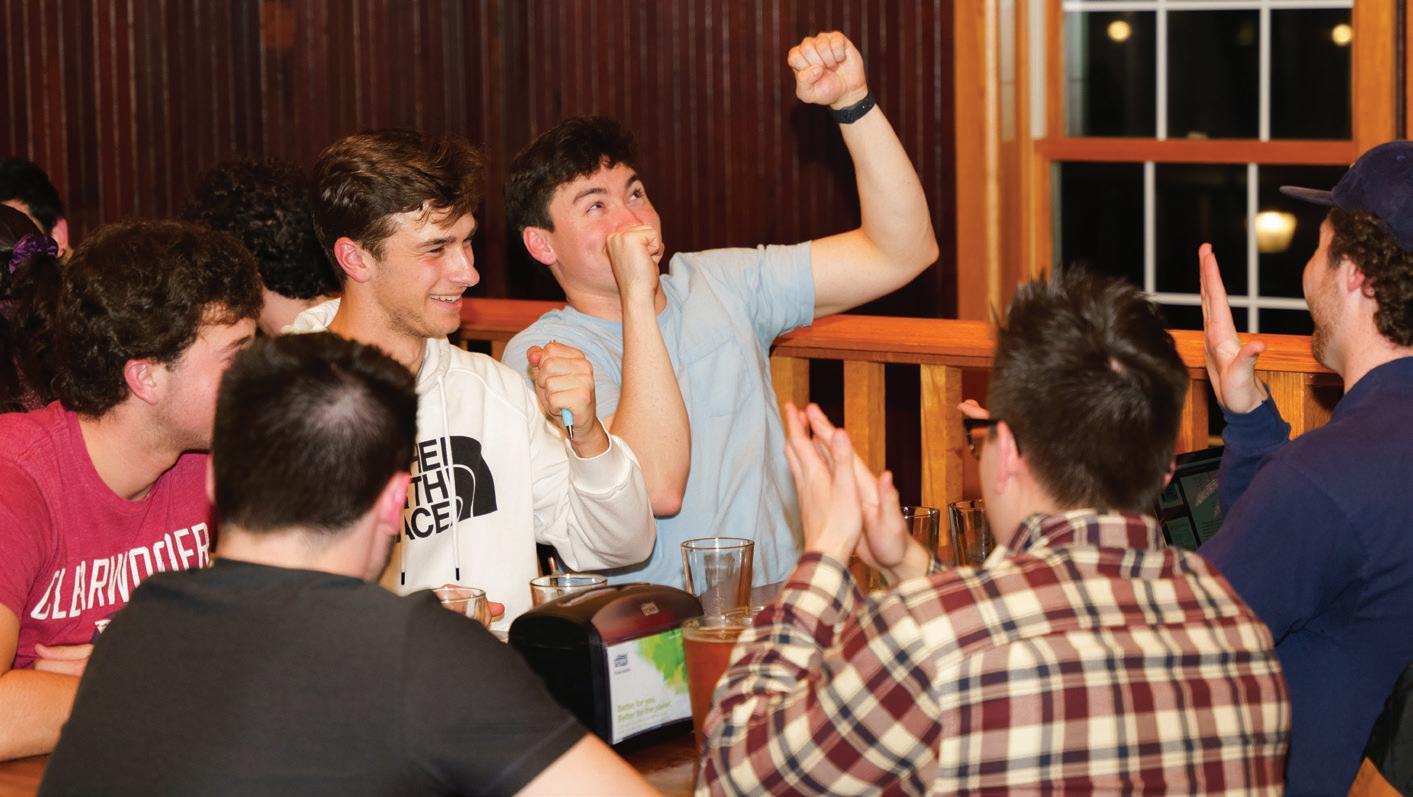

sTOP BY THE LITTLE PUB on a Tuesday night right before 8 p.m., and you’ll find students lined up outside the building, rain or shine, hoping to get the best seats in the house for Trivia Night. On average, 100 players show up each week to test their knowledge, win prizes, and spend time with friends.
Here’s how it works. Each contest consists of eight rounds: four “standard” rounds with four questions each, a photo round, a biography round, and two bonus rounds. In rounds one through four, students are asked questions on topics ranging from ancient Greek literature to 2023 Grammy winners. In the photo round, teams must identify nine images that share a common theme, such as birth month gemstones or Muppets. The biography round includes three clues with an increasing amount of information about an anonymous person. During the bonus round, teams are asked to list 8-10 items within a specific category, for example, the largest states by land mass or most recent first ladies. Trivia Night ends at 10 p.m. with an additional bonus round consisting of two questions.
51 SPRING 2024
A typical scene on a Tuesday night at The Little Pub — tables packed with students for Trivia Night.
Teams have a few minutes — or the length it takes to play one song — to write their answer on a slip of paper and bring it to the hosts in the front. The top three teams that end the night with the most points win a variety of prizes, including gift cards to local restaurants.
Jade Joyce ’25 has been a Trivia Night host since the fall of her sophomore year. “I had attended a few Trivia Nights my first year but applied on a whim with my friends Owen [Dzierzgowski ’25] and Katie [Mathis ’25]. We thought it would be a fun way to get involved and spend time together. All of us were super interested in the actual making of the questions and the silly emails announcing the event each week.”
Jack Bloom ’24 joined the team in fall 2023 when Owen and Katie went abroad. “I wanted a fun new activity for my senior year,” he says. “I knew that I would have a bit more time on my hands and always loved going to Trivia as a participant, so decided to try my hand at hosting.”
Bloom and Joyce say that they come up with niche and thought-provoking questions by pulling from current events, making up random questions that come to mind, and using concepts from class. They also peruse archives of TV game shows, such as Jeopardy! and Million Dollar Pyramid, for inspiration.
Not only do the questions posted at Trivia Night pique students’ academic and personal interests, but the event itself serves as a social spot.
Ainsley Novack ’25 has attended nearly every Trivia Night since her first year on campus. “I was drawn to Trivia because it’s fun, The Little Pub is so cute, we love the popcorn, and it’s such a good way to hang out with your friends on a weeknight,” she says. Novak also likes the aesthetics. The wood-paneled walls adorned with vintage sports memorabilia and photos of Hamilton over the decades make the space feel like a cozy den in the woods, she says, adding,
It’s super fun to see different people as they come up to bring their answers and build relationships with teams and the pub tenders as the semester goes on.”

“When I’m at the pub, it feels like I’m off campus, but I’m still close to home and with my friends.”
Joyce echoes Novack’s sentiments. One of her favorite things about being a host is interacting with fellow students. “People come with teams, but there is a bit of time between questions. So people circulate around to other teams to say hi to friends and catch up. It’s super fun to see different people as they come up to bring their answers and build relationships with teams and the pub tenders as the semester goes on.”
Student organizations also have the opportunity to collaborate on Trivia Night. WHCL and HamVotes have aided the hosts in writing questions that center around their organizations, while the magazine Signature Style has done photo rounds with fashion models and a biography round featuring a designer.
Throughout his time as a host, Bloom has learned the importance of fact-checking and asking very specific questions. “There can often be different ways to interpret questions and different sources giving different answers for the same questions. People can really stand behind their answers, so we have gotten good about making sure we are asking what we mean and that we are confident with the answer we are judging as correct.” •
HERE’S SOME TRIVIA ABOUT WRITER CATHERINE VOGT ’24 AND PHOTOGRAPHER OLIVER ZHAO ’24.
A world politics major with minors in history and religious studies, Vogt is a student writer for the Communications Office, a HamVotes captain, Italian language tutor, and first-year course mentor. Having held numerous roles with WHCL 88.7FM, she now chairs the Media Board, overseeing all 12 of Hamilton’s student publications.
A psychology and environmental studies major, Zhao is a senior photography intern for the Communications Office, a digital media intern for the Research and Instructional Design team, and a student photographer for the Athletics Department. He is also a Community Advisor in Kirkland Residence Hall.
HAMILTON 52
Trivia Night hosts Jack Bloom ’24 and Jade Joyce ’25.
Scan to watch our
Trivia Night video.
1.
Who was the first living person to have their work displayed in the Louvre?
How would you do at Trivia Night?
HERE’S A SAMPLING OF QUESTIONS FROM JAN. 23, 2024:
2.
With $25.6 billion, what company holds the record for the largest initial public offering (IPO) globally?
3. Christine McVie painted which Fleetwood Mac album cover?
4.
According to the American Kennel Club, what was the most popular dog breed in 2022?
5.
At the 2020 Olympics, Neeraj Chopra became the first track and field athlete from India to win a gold medal. In which event?
6. Adopted in 1998, the Rome Statute is an international treaty that established what?
7.
Which team has the record for the longest winning streak in the history of college football?
8. Which academic introduced the concept of “the problem that has no name?”
9. Manchego cheese is made with milk from what animal?
10.
What is the most prestigious award given at the Cannes Film Festival for the best film?
11. Amazon originally began as an online space to sell what product?
12.
Which artist’s album topped Rolling Stone’s “500 Greatest Albums of All Time” list in 2023?
53 SPRING 2024
ANSWERS: 1.
2. Saudi
3.
4. French
5.
6. The
7.
8.
9.
10.
11.
12.
State license plates (see back
Top
Florida,
Georges Braque (1961)
Aramco
Kiln House
Bulldog
Javelin
International Criminal Court (ICC)
The
Oklahoma Sooners
Betty Friedan in The Feminine Mystique
Sheep
Palme d’Or
Books
Marvin Gaye (What’s Going On).
cover):
row:
Oregon, Maine; Middle row: Indiana, South Carolina, Mississippi; Bottom row: California, Kansas, New
Mexico
Bookshelf
Samuel Crowl ’62
Shakespeare and Baseball: Reflections of a Shakespeare Professor and Detroit Tigers Fan (Athens, Ohio: Ohio University Special Publications, 2024).
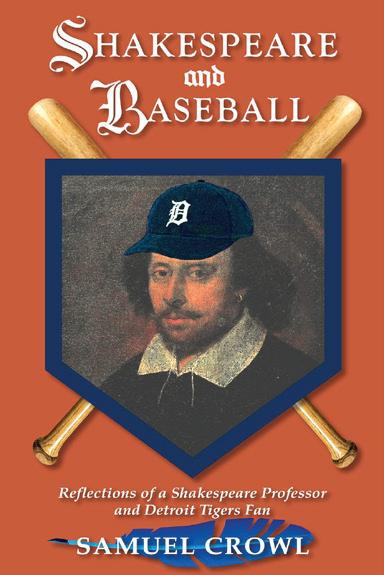
Sam Crowl saw his first Tigers game at Briggs Stadium in the summer of 1950 (Hal Newhouser beat the Chicago White Sox) and his first Shakespeare play in 1953 at the inaugural season of the Shakespeare Festival in Stratford, Ontario (Alec Guinness portrayed Richard III).
He was doubly hooked.
Since then, the professor of English emeritus at Ohio University has spent nearly 75 years indulging in the joy that each form of entertainment provides. Throughout his career he has published six books on Shakespeare in performance on stage and screen, and held an observership with the Royal Shakespeare Company.
In his most recent project, Crowl presents what he describes as a book with “three bases and a longing for home: personal memoir, the game of baseball, and my career as a professor of Shakespeare.” He shares heartfelt memories of the often unexpected pleasures both forms of play have afforded not just himself but his extended family. Many of his reflections are drawn from about 70 “Tiger Letters” he wrote throughout the years after attending games he’d seen in old Tiger Stadium, Fenway Park, Yankee Stadium, and ballparks in Cleveland.
“Reading this book is an almost kinetic experience, moving seamlessly between exquisitely detailed accounts of Detroit Tigers games, classic Shakespeare performances, travelogue, family history, and memoir,” one reviewer notes. “With an easygoing narrative voice, Crowl draws the reader into the story of a midwestern kid chasing baseball’s field of dreams to coming-of-age as a scholar and founder of a new academic field: the study of Shakespeare on film ”
The connections that Crowl draws between the playwright and the game are as unexpected as they are fascinating. Take beer, for example, which he points out “funded and fueled both the establishment of Major League Baseball clubs, like the Yankees and Cardinals, and the creation of the Shakespeare Memorial Theatre in Stratford-upon-Avon, the home of the Royal Shakespeare Company.”
Crowl continues, “A deeper linkage is that Shakespeare’s festive comedies kept the ideas, rituals, and customs of rural England alive in the dense urban world of Elizabethan London, just as baseball kept the image of the garden — the rural American past in which the game took shape — alive in the 20th-century American city.”
Another reviewer notes, “If baseball had been invented earlier, William Shakespeare would have been the greatest baseball writer of all time and Samuel Crowl would have become a professor of baseball. Crowl’s memoir of his life’s passions is a grand slam.” •
PHYLLIS A. H. BRELAND ’80. K.I.S.S. Me Like This!: A Pocket Guide for Living (Albany, N.Y.: King Jesus Press, 2024).
TERRY BROOKS ’66. Sister of Starlit Seas (New York: Del Rey, 2023).
J. MONIQUE “JOSIE” COLLIER ’97. What a Year!: Collierisms, Cocktails, & Cooking (selfpublished, 2024).
ROBERT KAPLAN ’76. Past/Present and Other Poems. (New York: Poets of Queens, 2023).
AMY A. KOENIG, assistant professor of classics. The Fractured Voice: Silence and Power in Imperial Roman Literature (Madison, Wis.: University of Wisconsin Press, 2024).
DORAN LARSON, the Edward North Chair of Greek and Greek Literature and professor of literature and creative writing. Inside Knowledge: Incarcerated People on the Failures of the American Prison (New York: NYU Press, 2024).
SARAH J. MAAS ’08. House of Flame and Shadow (New York: Bloomsbury Publishing, 2024).
S. A. “STEVE” MORELLI ’78. Central Park (North Charleston, S.C.: Palmetto Publishing, 2023).
STEVE ORLANDO ’08 and José Andrés Feeding Dangerously (Los Angeles: TKO Studios, 2023).
ROD PARKER ’65. Tales of the Forest: A Collection of Art and Poetry (self-published, 2023).
JOHN ROGER PAAS ’67. Edward FitzGerald’s “Rubaiyat of Omar Khayyam” and Related Materials: The John Roger Paas Collection (Wiesbaden: Harrassowitz Verlag, 2023).
PHILIP PEARLE, professor of physics emeritus. Introduction to Dynamical Wave Function Collapse: Realism in Quantum Physics (Oxford, U.K.: Oxford University Press, 2024).
ALEXANDRA PLAKIAS, associate professor of philosophy. Awkwardness: A Theory (Oxford, U.K.: Oxford University Press, 2024).
HAMILTON 54
Ryan Serhant ’06
Brand It Like Serhant: Stand Out From the Crowd, Build Your Following, and Earn More
Money
(New York: Hachette Go, 2024).

How do you build a brand in today’s social media world?
That’s the question the author, a real estate broker and star of Bravo network’s Million Dollar Listing New York, answers in this, his third book. While the U.S. Bureau of Labor Statistics estimates that 50% of the workforce will be gig economy by 2027, Serhant says no one is being taught the skills to be successful in this new marketplace. “They are being trained for the jobs of a decade ago or a world where there weren’t personal brands or so many small businesses that need to brand and market themselves,” he says.
According to the book’s publisher: “Whether you’re a real estate broker, a hair stylist, or a freelance contractor, your end goal is the same: get leads and generate new business. You want people to think of you the split second they consider looking for a new apartment, getting highlights, or finally redoing that guest bathroom. And while building a brand from scratch sounds daunting, the authentic you is already a brand — you just might not know it yet.
“Brand It Like Serhant brings readers through Ryan’s three-step strategy that transformed him from that-broker-above-Burger Heaven into the founder of SERHANT, the most recognized real estate brand in the world. In Phase One, you’ll discover your core identity, from your written brand statement to fonts, colors, posing for photos, and more. In Phase Two, you’ll learn how to deliver consistent content — realistically — by understanding social platforms and making the right choices for your work. And in Phase Three, you’ll shout it from the mountaintops: share your accolades, leverage growth, and achieve your full potential ” •
Julie Faith Parker ’83
Eve Isn’t Evil: Feminist Readings of the Bible to Upend Our Assumptions
(Ada, Mich.: Baker Academic, 2023).
OMELVIN ROSH ’56. The Guest Who Came From Nowhere: A Mystery Primer (self-published, 2022).
MELVIN ROSH ’56. Searching for the Gateway to the Afterlife: Anatomy of Funeral Rituals from Cave People to the Present Time; Anatomy of Parenting Throughout the Ages: Cultural Differences of Raising Children from Ancient to Modern Times; Anatomy of Marriages from Ancient to Modern Times; The Anatomy of Religions of the World: Seeking God’s Grace (self-published, 2023).
JESWALD W. SALACUSE ’60. The Law of Investment Treaties (Oxford, U.K.: Oxford University Press, 2021).
JULIE E. STARR, assistant professor of anthropology. Modified Bodies, Material Selves: Beauty Ideals in Post-Reform Shanghai (Seattle: University of Washington Press, 2023).
GEORGE TALIAFERRO ’15 (aka George Garcia). Glerm the Worm Goes to School (self-published, 2023).
ne reason the Bible has endured for millennia is its ability to reach our common humanness and give uplifting insights about struggle, resilience, and hope,” notes the back cover of this book, a finalist for a Foreword INDIES 2023 Book of the Year Award. “Intertwining academic knowledge and candid, personal, and sometimes humorous stories, Julie Faith Parker helps readers engage biblical texts with both mind and heart — to learn the Bible’s stories, explore theological ideas, question common assumptions, develop interpretive skills, and grow in their own faith ”
The author, who holds a Ph.D. in Old Testament/Hebrew Bible from Yale University and currently serves as a visiting scholar at Union Theological Seminary, examines biblical texts through a feminist lens and discusses both neglected and well-known Old Testament passages with one chapter on the New Testament.
According to Publishers Weekly, this book “[t]ackles scripture from a broad-thinking, feminist perspective. ... Smart and impressive ” • “

55 SPRING 2024

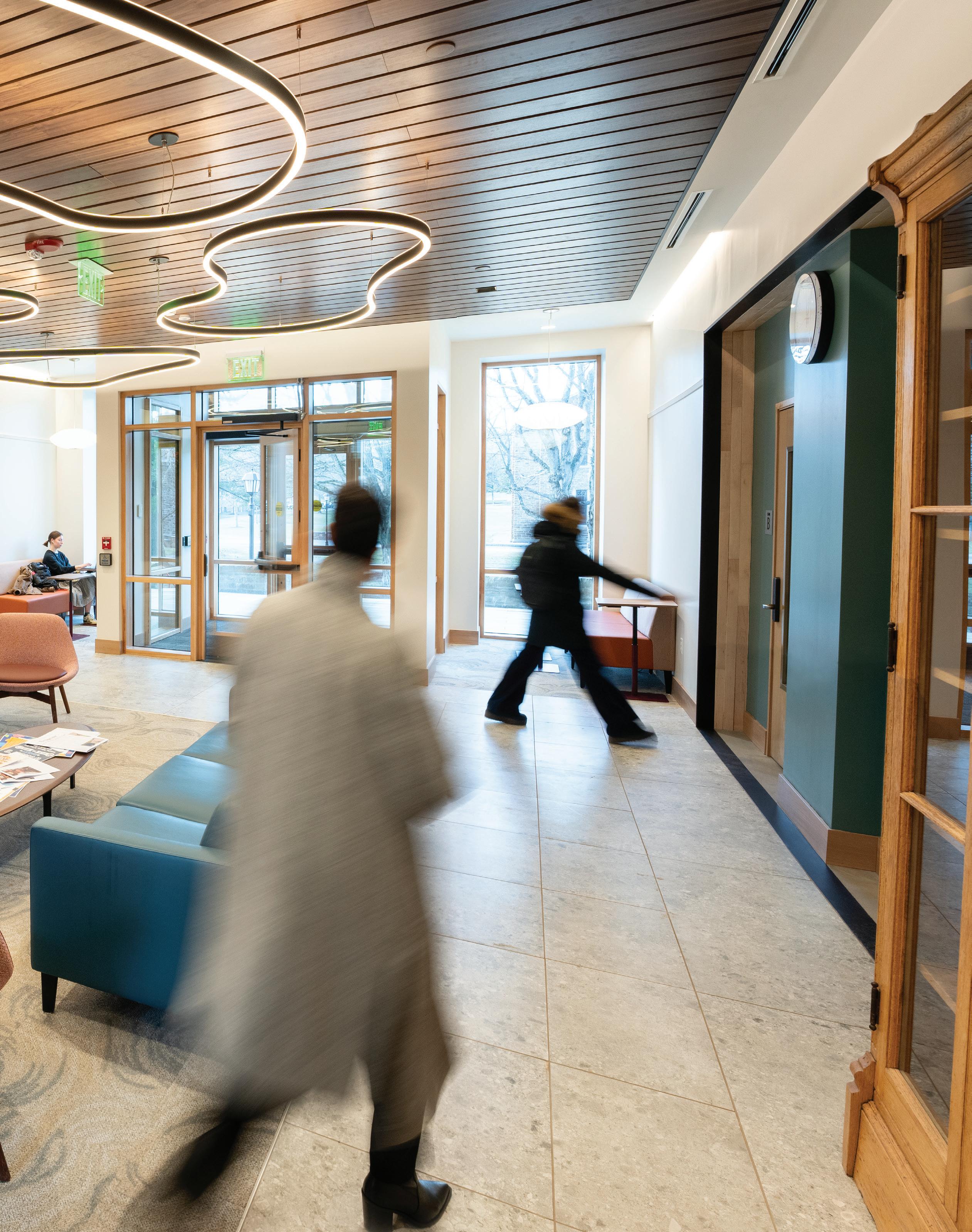
Inside the New Root
From the outside, the iconic white columns and stone exterior of Root Hall offer little indication of change. But step through the doors, and you’ll instantly experience the results of a two-year renovation to the 127-year-old building. The updates are designed to provide comfortable and inviting spaces for students to study and collaborate, and to address accessibility issues and sustainability goals.
Root Hall houses the Africana Studies, Classics, Religious Studies, and Women’s and Gender Studies departments and features 20 offices, five classrooms, four meeting spaces, and additional areas for studying and collaborating. Shown here is an open common area, complete with a moss wall.
BY KEVIN M. WALDRON
PHOTO
Scan to see more photos of Root Hall.
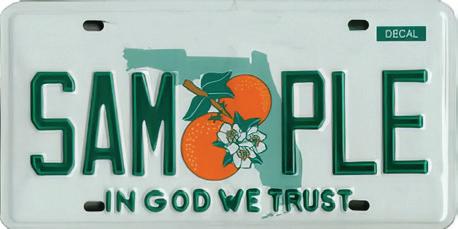
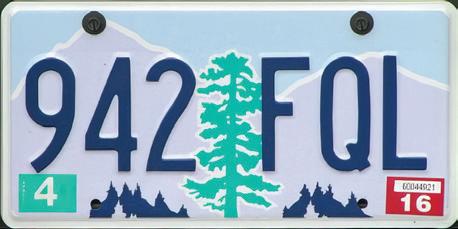
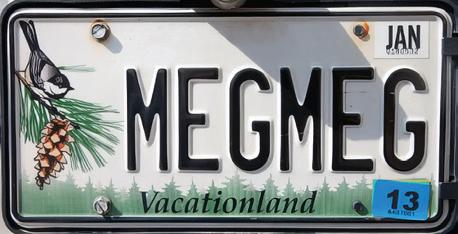

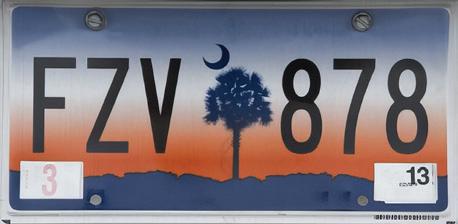
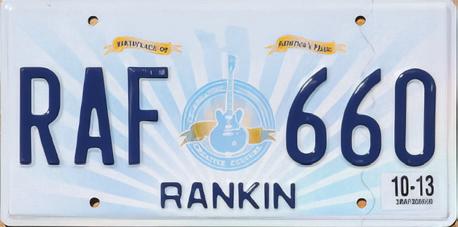



LICENSE TO TRIVIA!
Do you have what it takes to ace the photo round at Hamilton Trivia Night?
Name the U.S. states associated with these license plates (and no searching online). See story, photos, and answers starting on page 50.
Non-Profit Org. U.S. Postage PAID Hamilton College
Hill Road Clinton, NY 13323
HAMILTON 198 College
1. 2. 3. 4. 5. 6. 7. 8. 9.

 DAVID WIPPMAN
DAVID WIPPMAN

 THIS PAGE: Academic regalia of Lisa Trivedi, the Christian A. Johnson Excellence in Teaching Professor of History and Hamilton’s new College Marshal PAGE 38
PHOTO BY KEVIN M. WALDRON
THIS PAGE: Academic regalia of Lisa Trivedi, the Christian A. Johnson Excellence in Teaching Professor of History and Hamilton’s new College Marshal PAGE 38
PHOTO BY KEVIN M. WALDRON








 Jeffrey Greene with pieces by Mark Despres, an artist he’s worked with in prison for over 20 years.
Jeffrey Greene with pieces by Mark Despres, an artist he’s worked with in prison for over 20 years.




































































































 by Michael J. Debraggio P’07
by Michael J. Debraggio P’07




























































